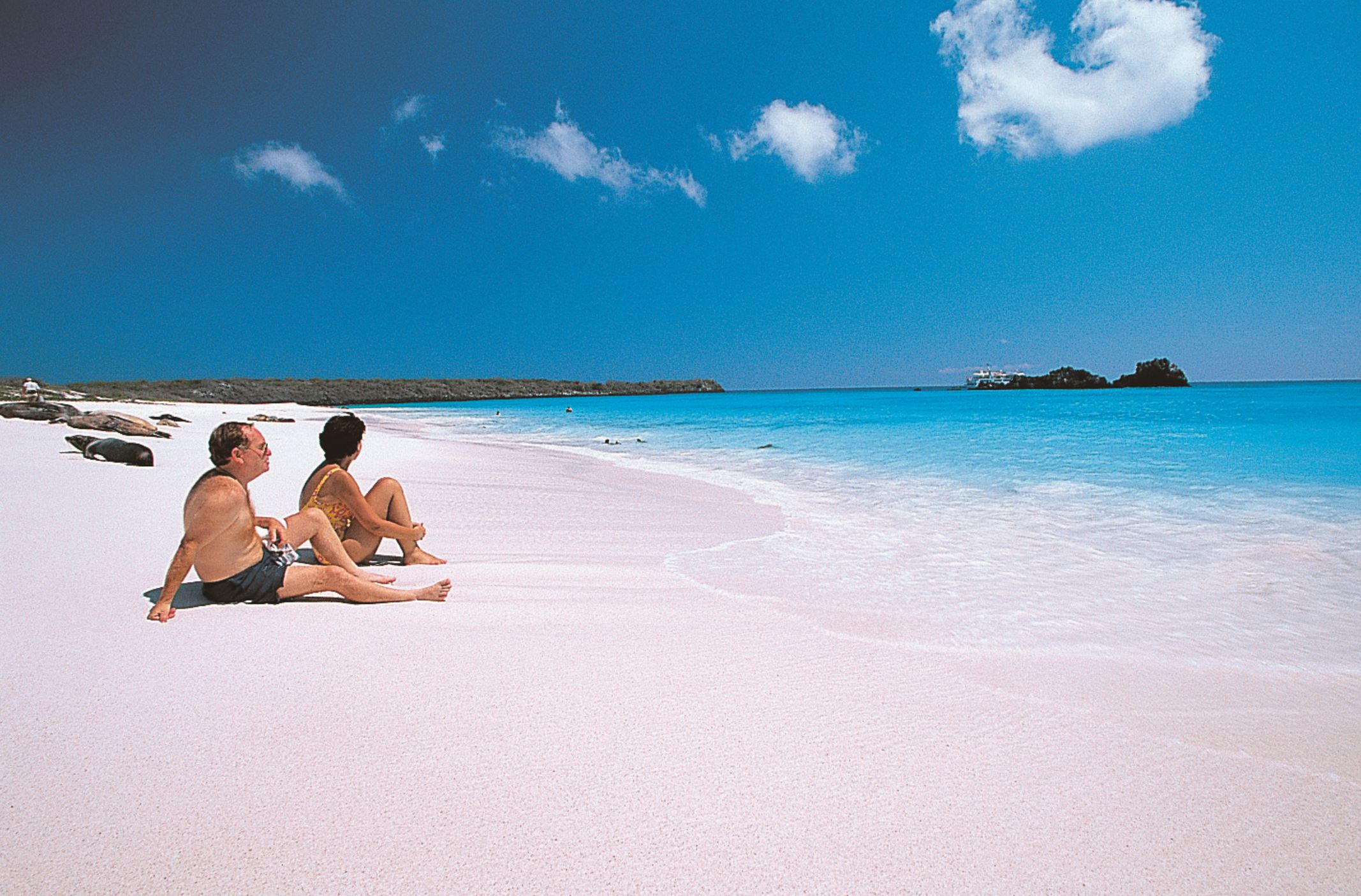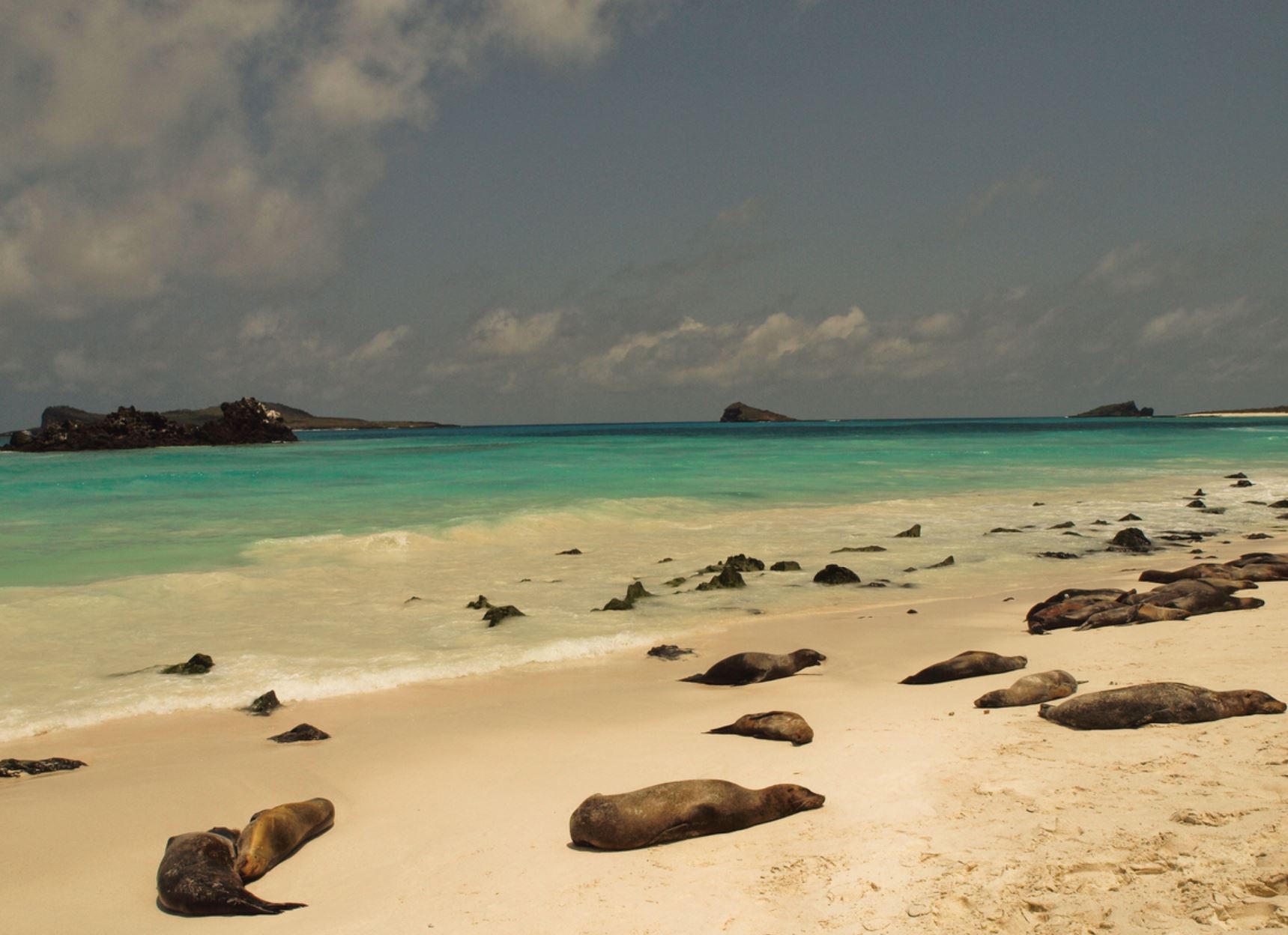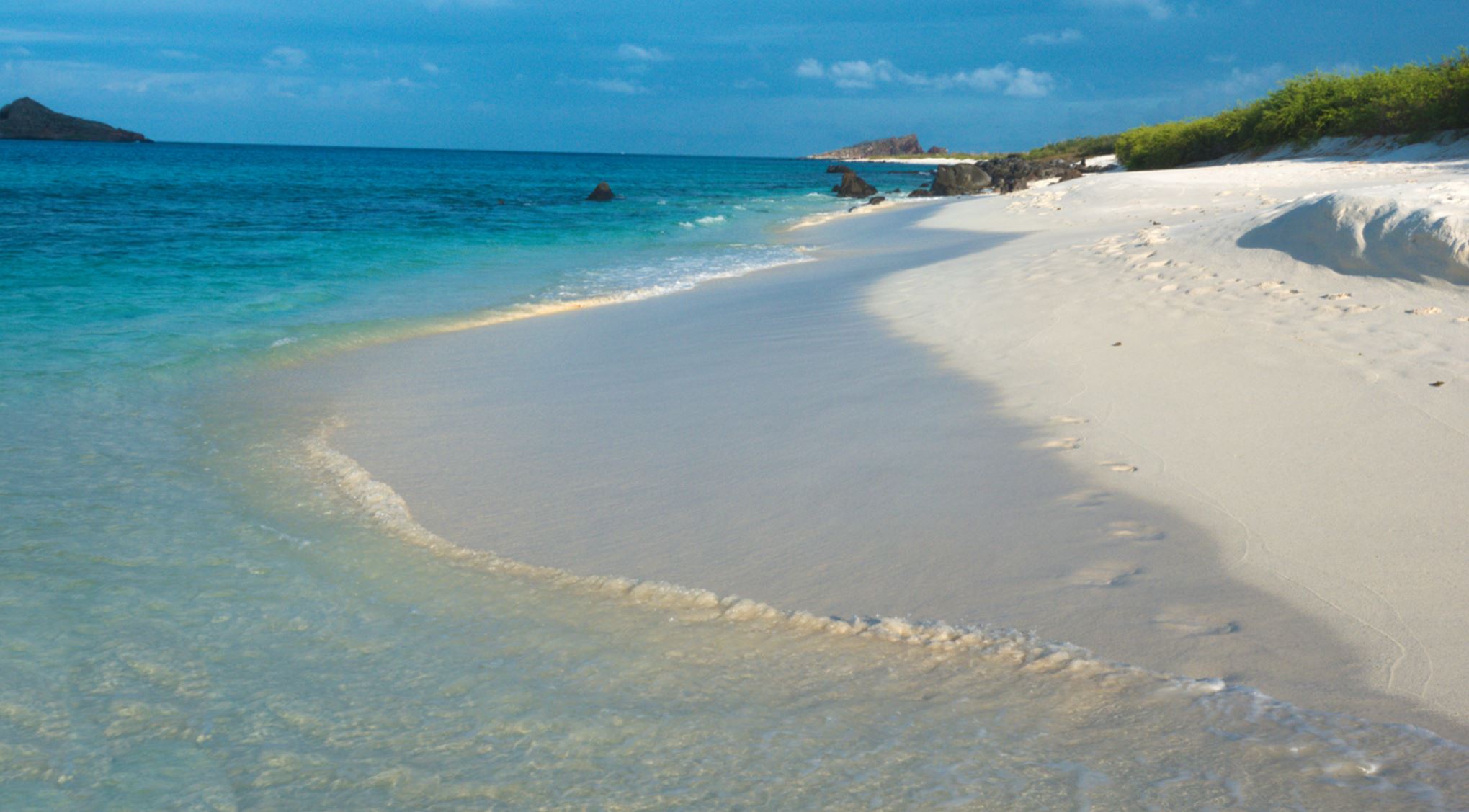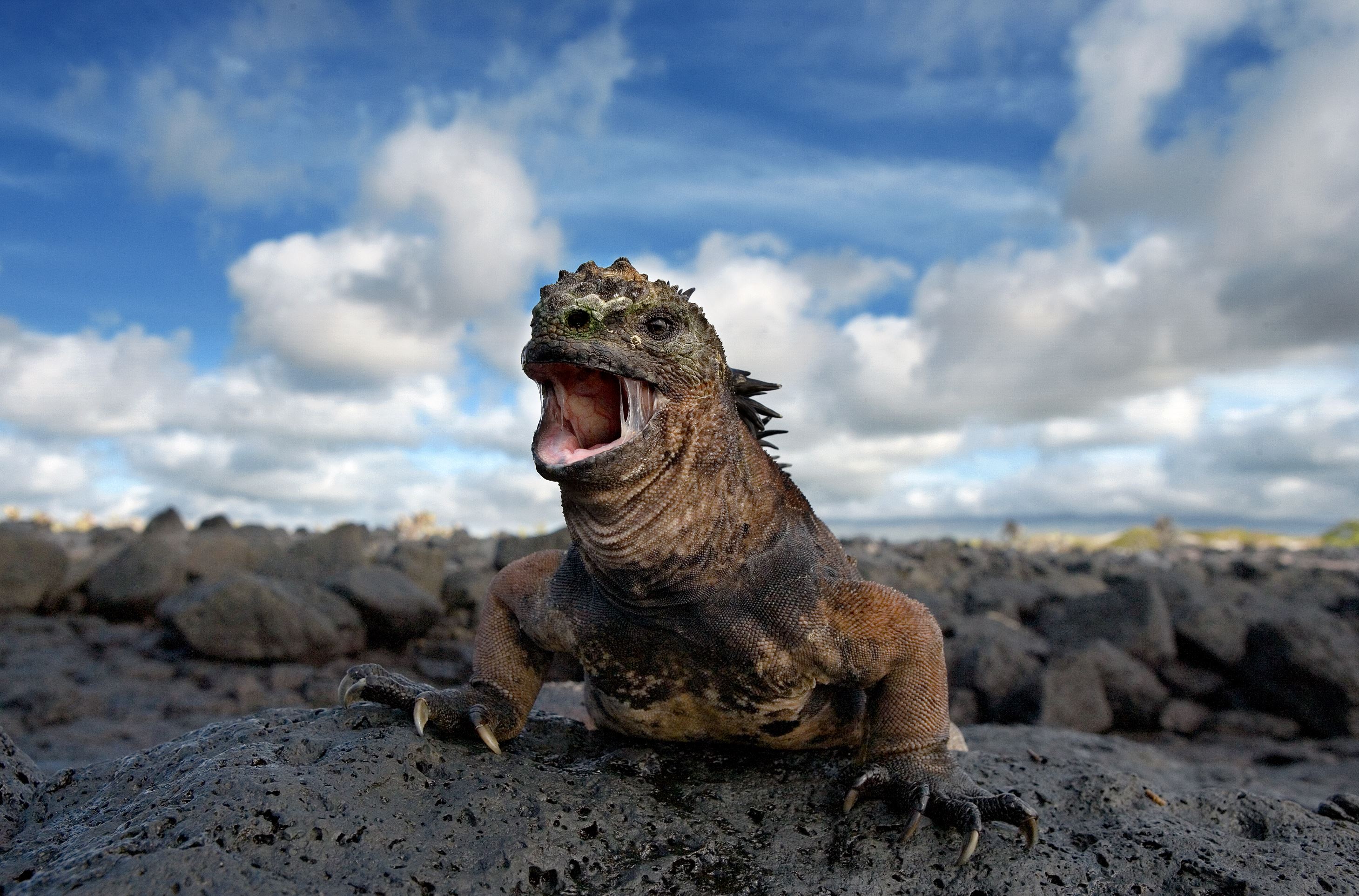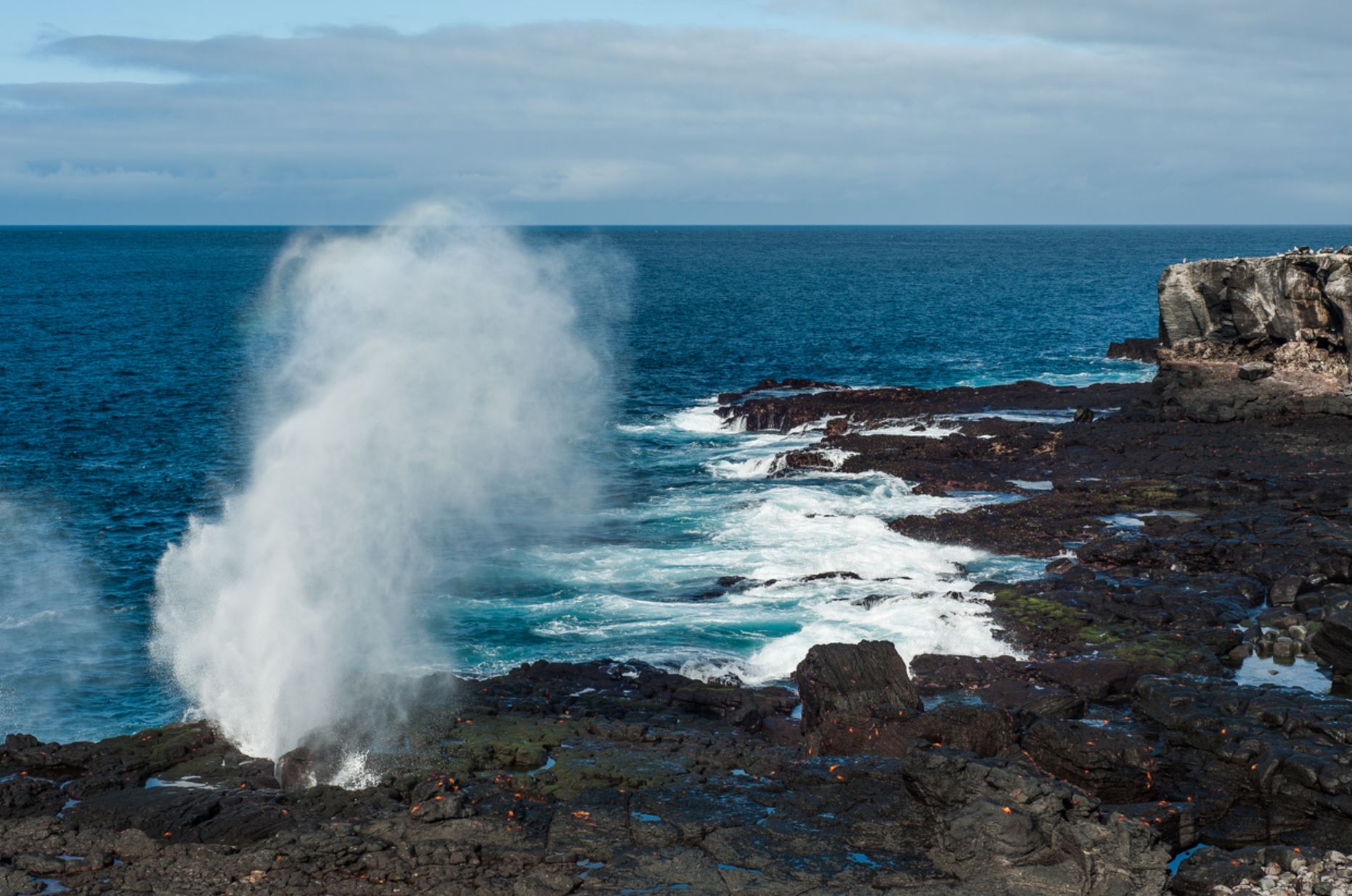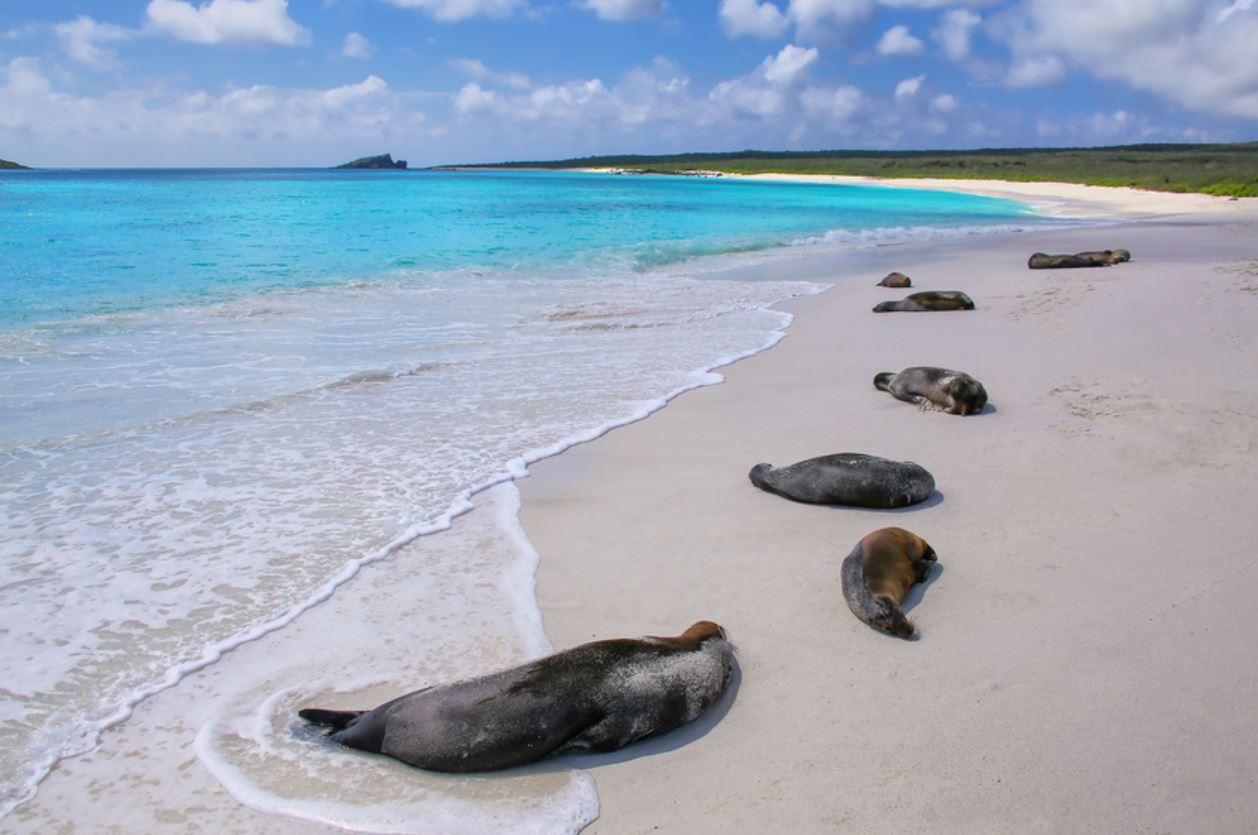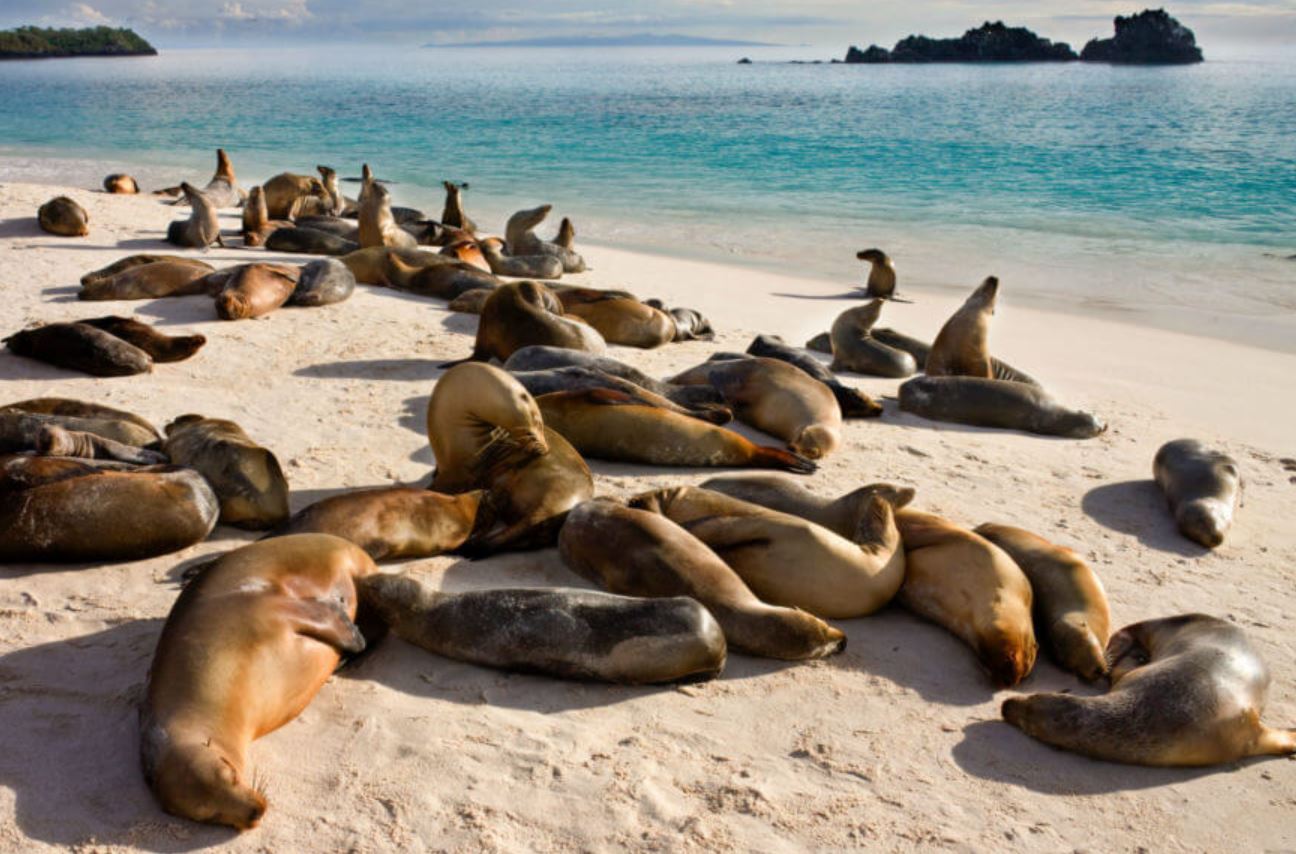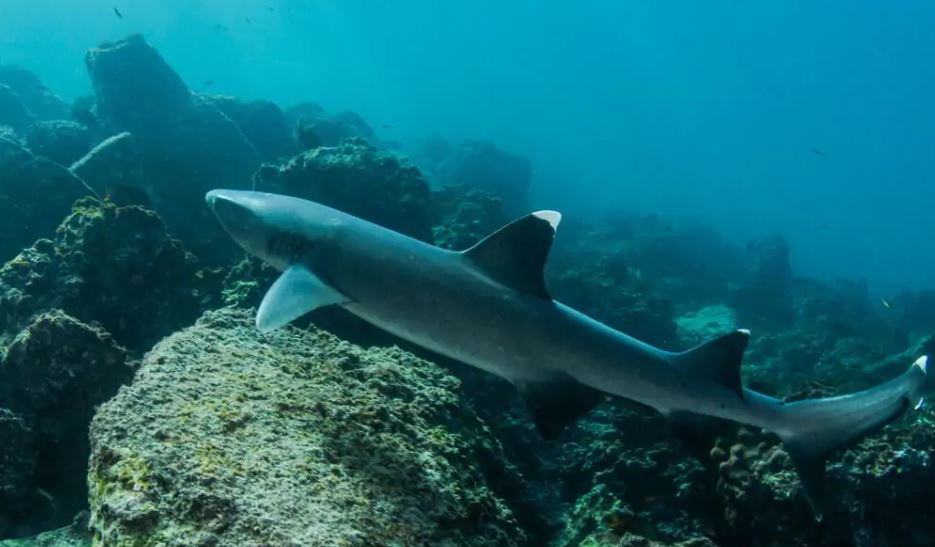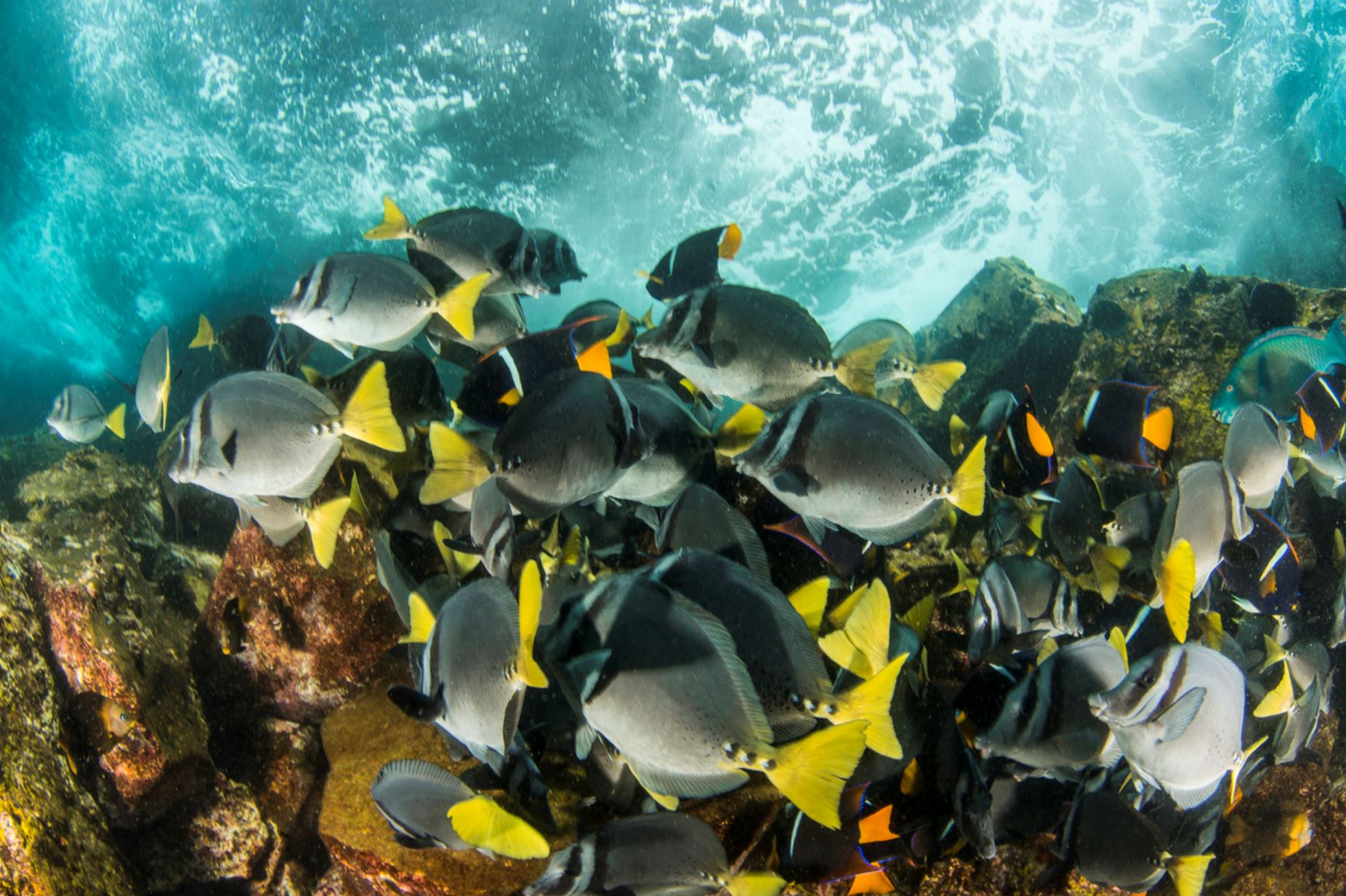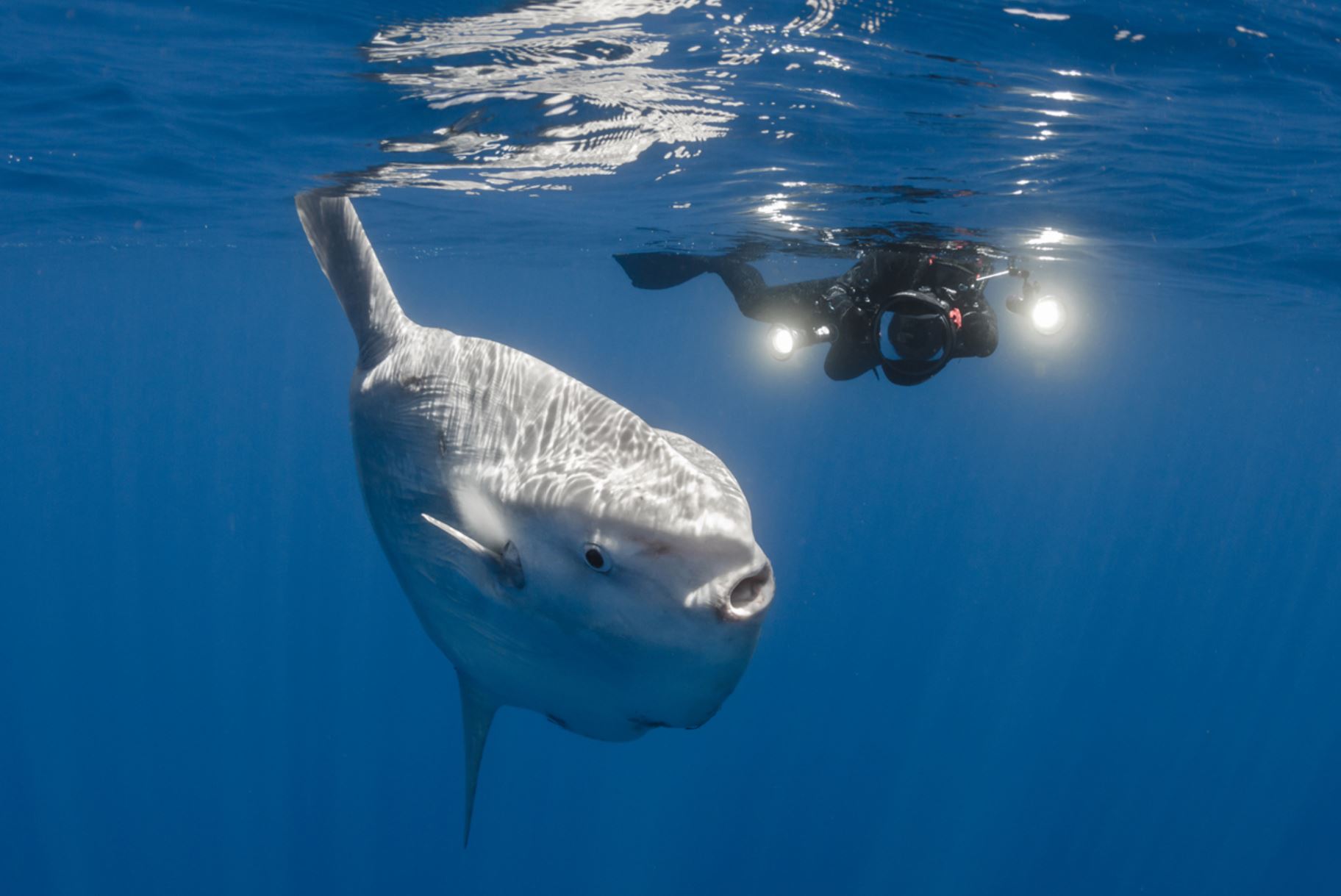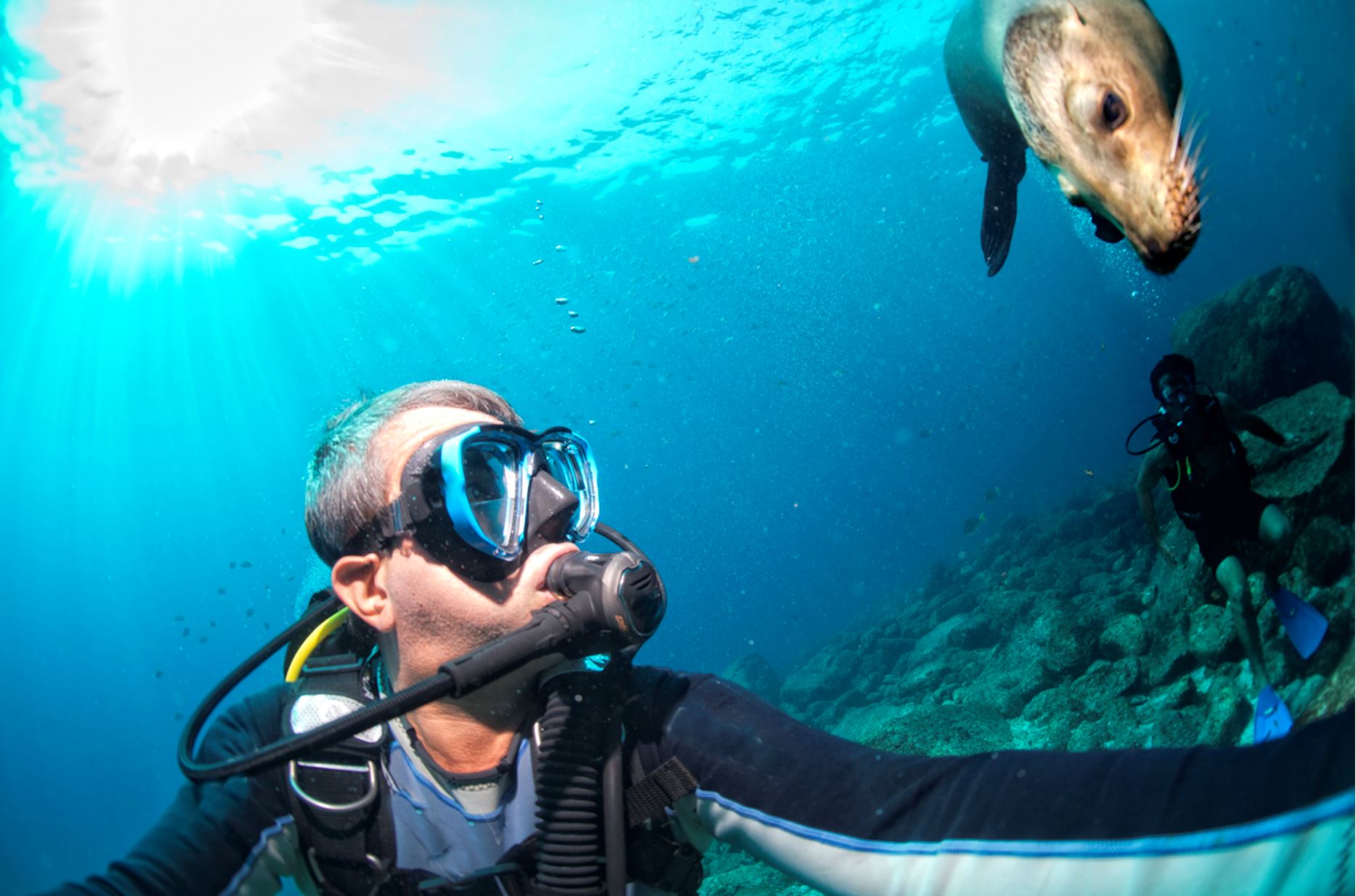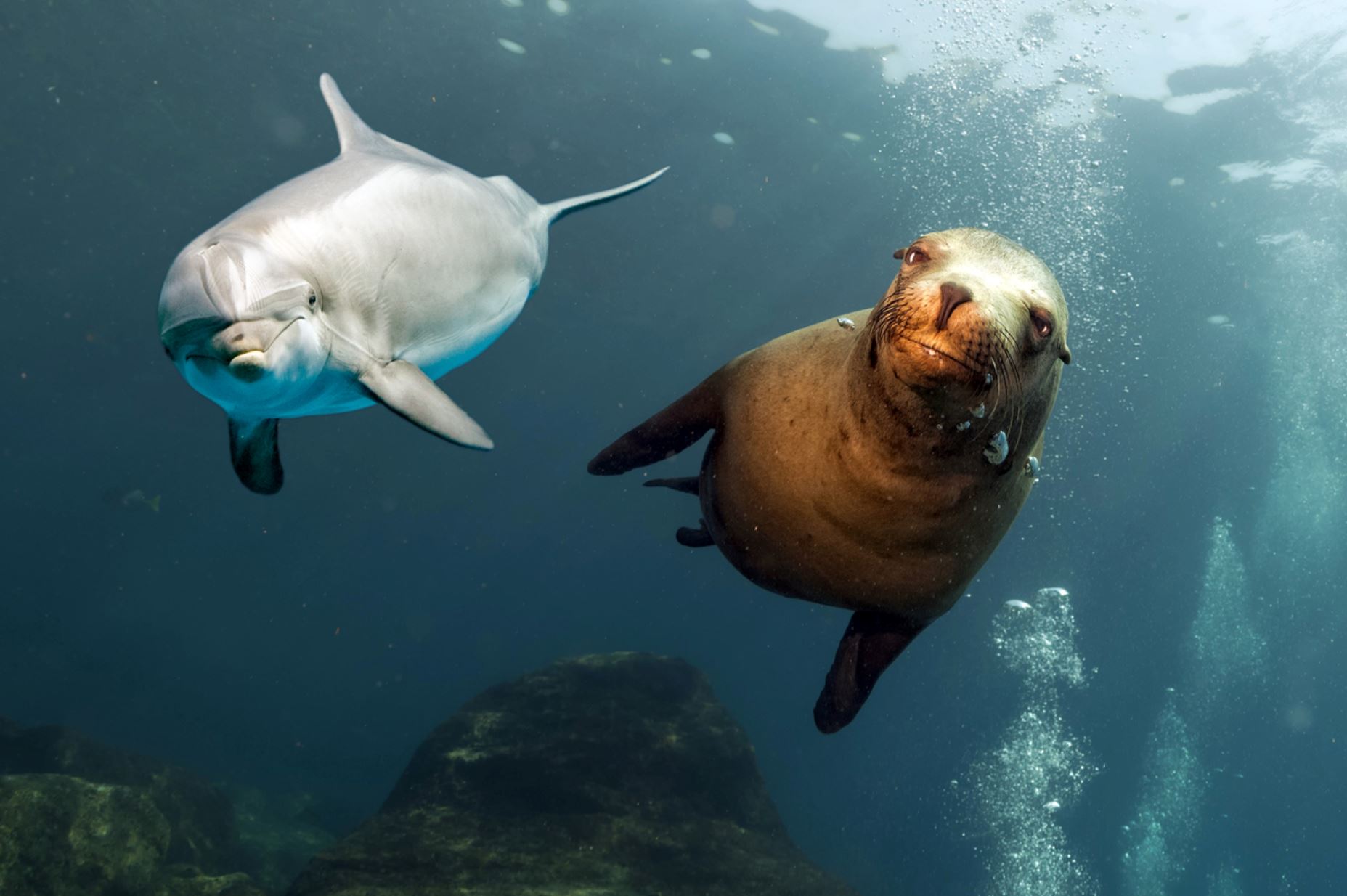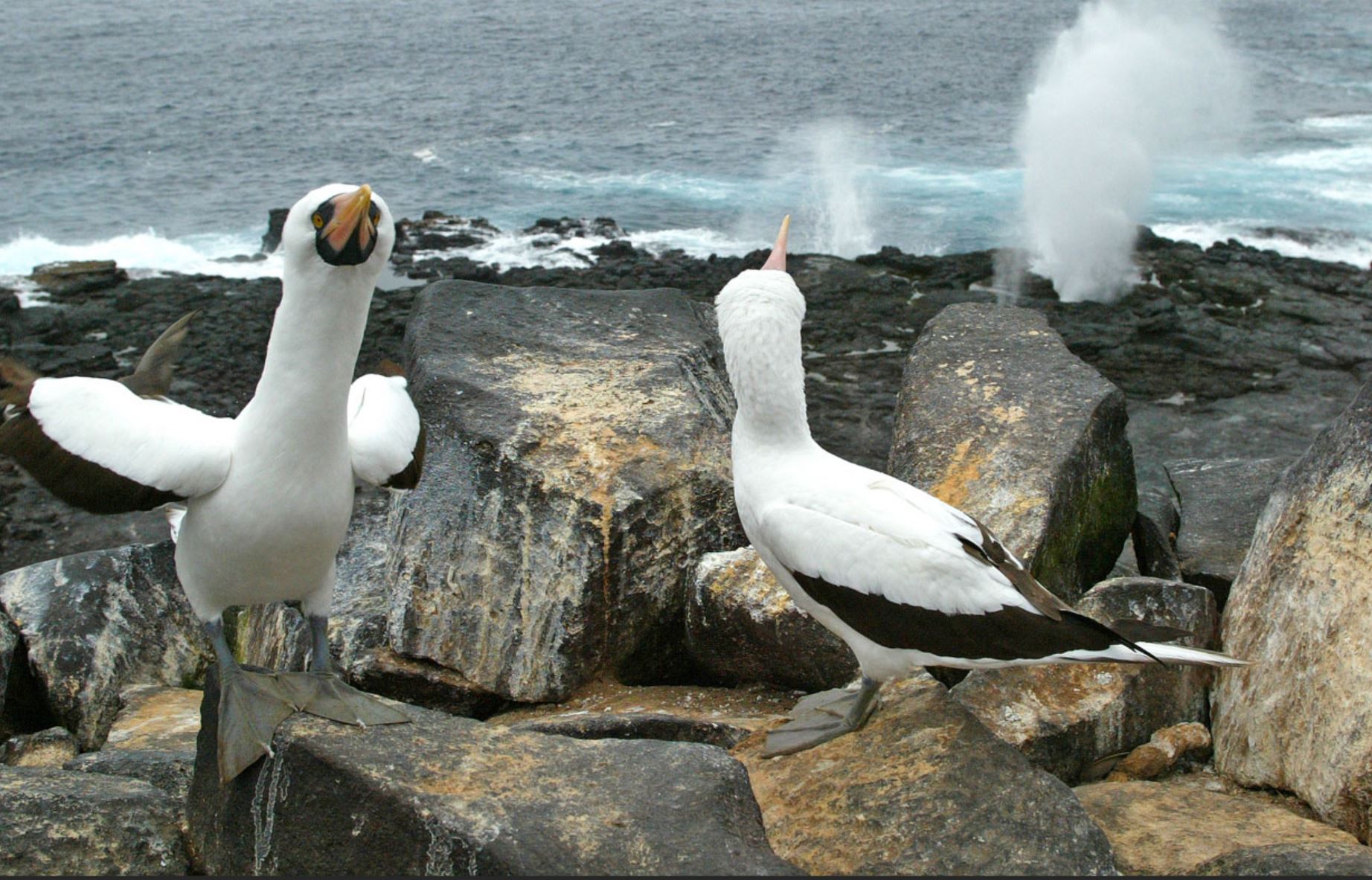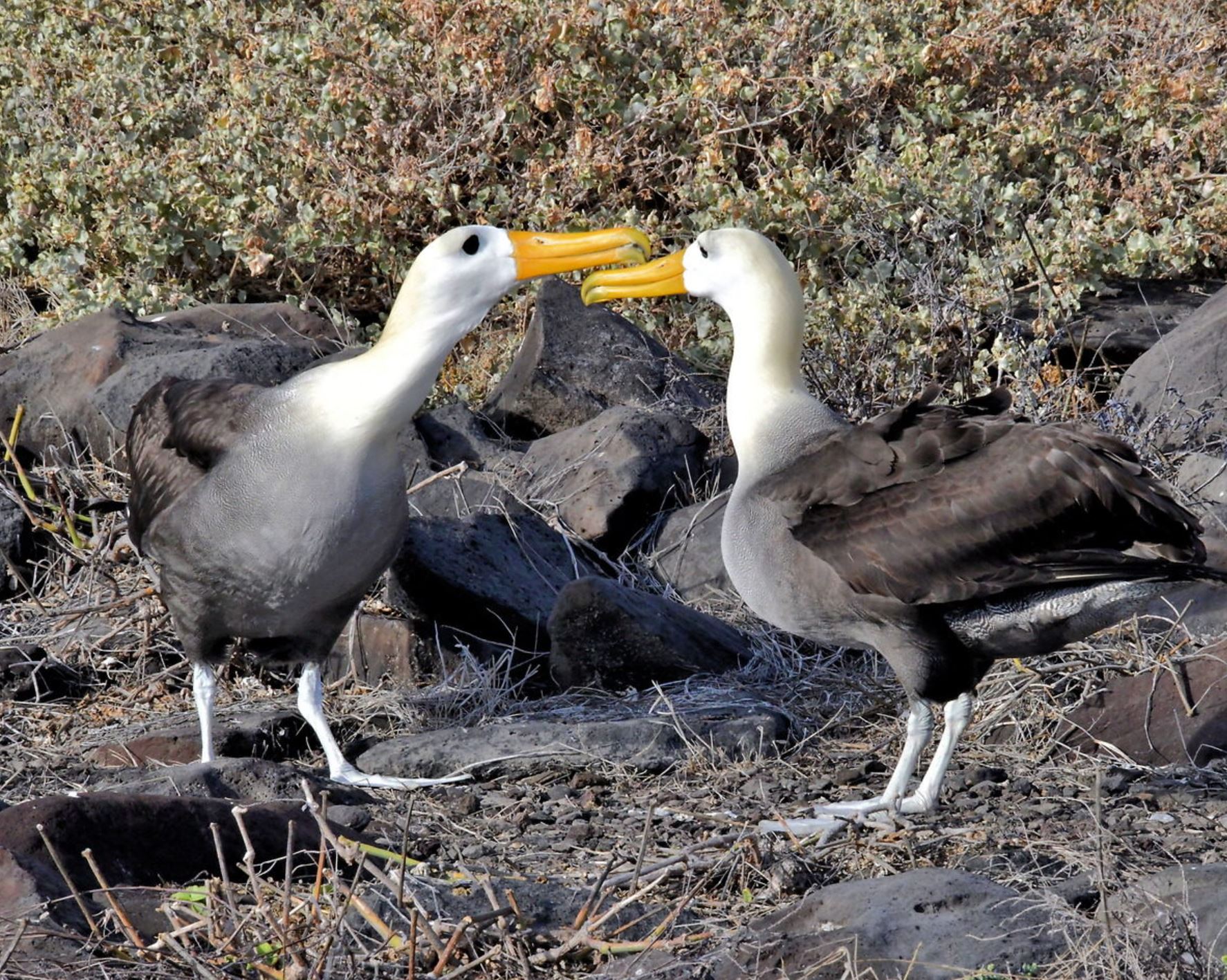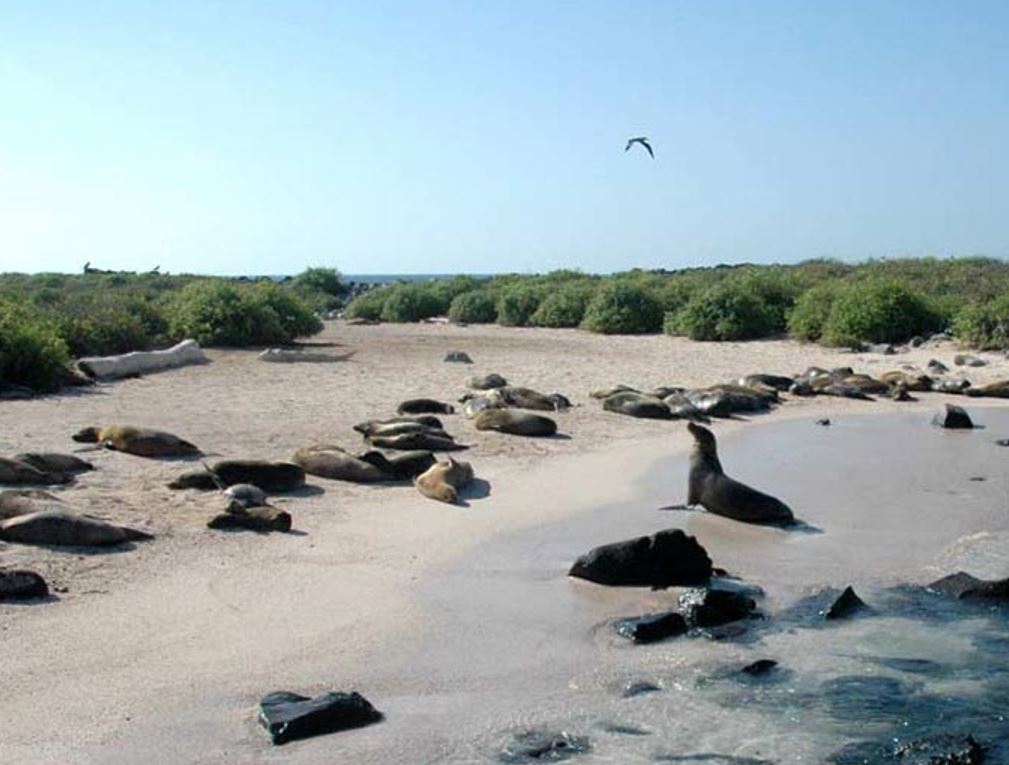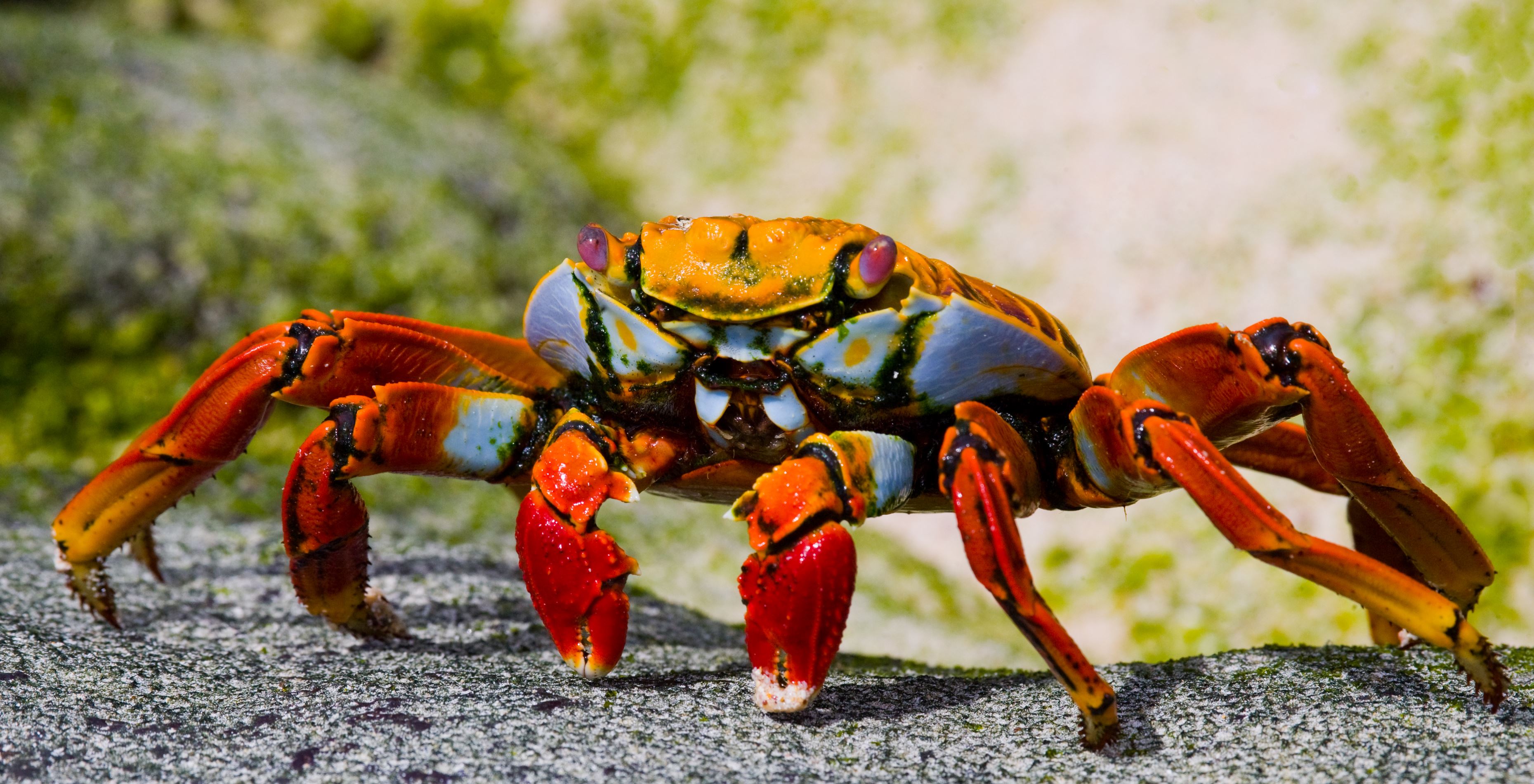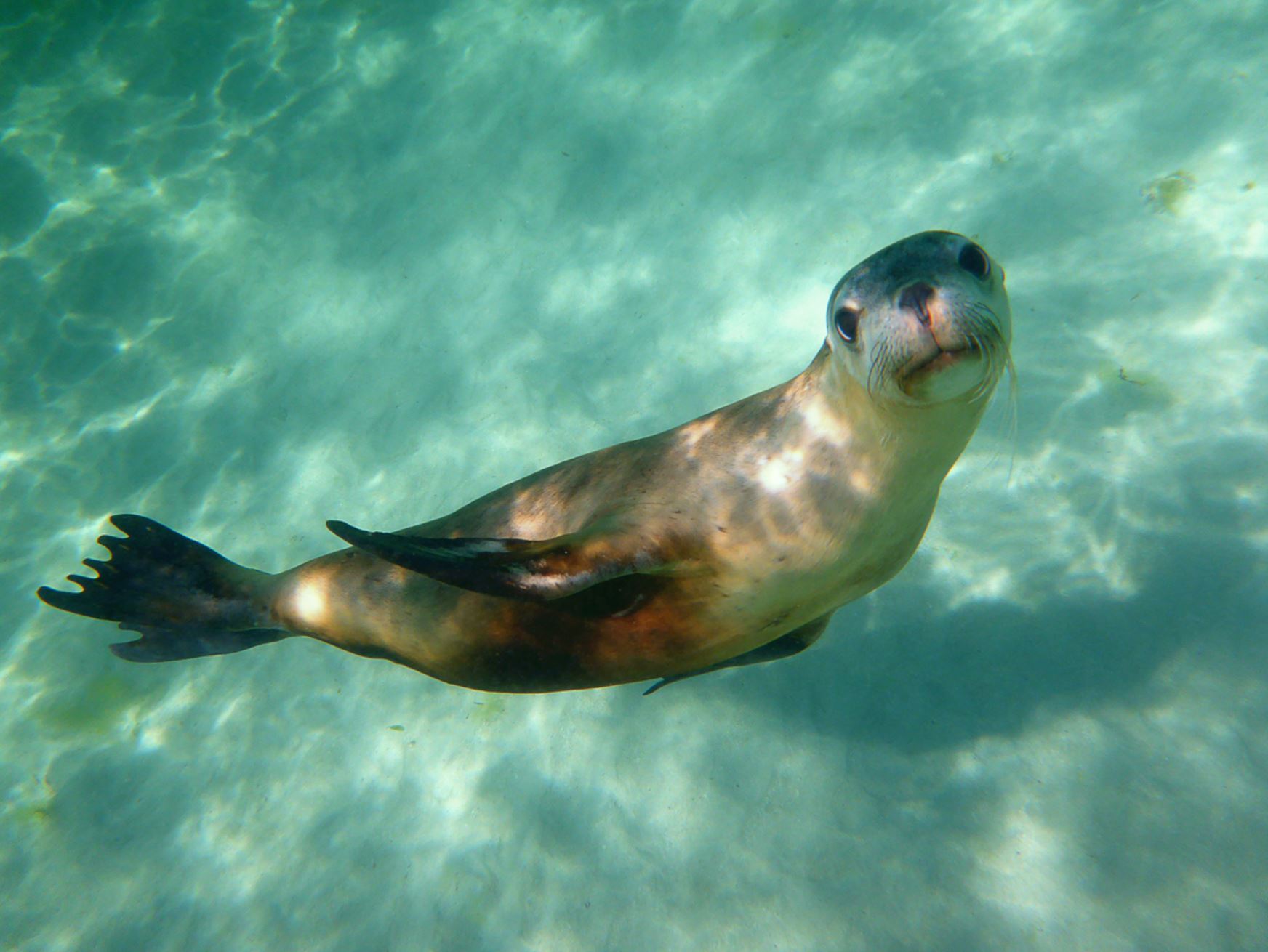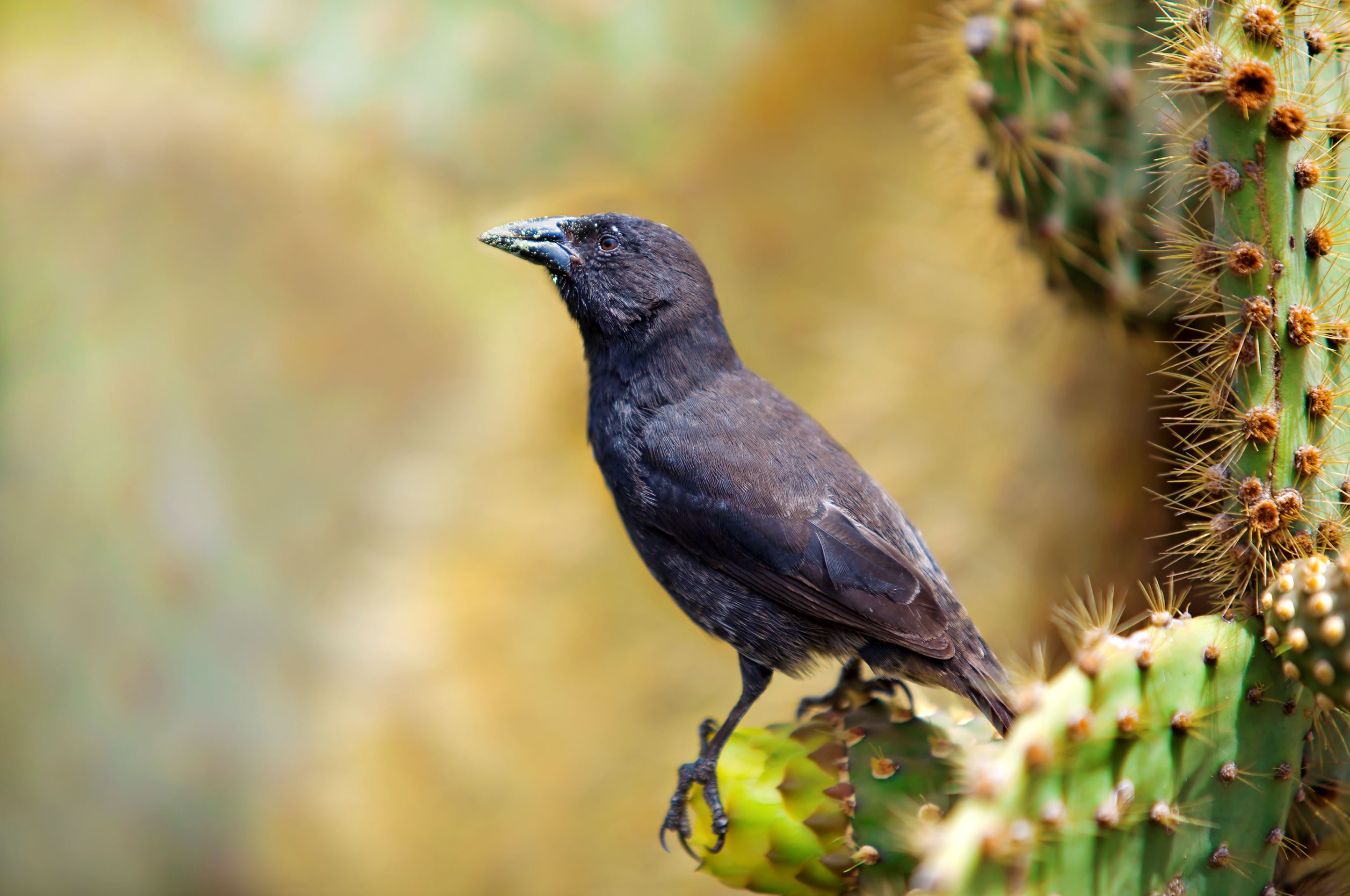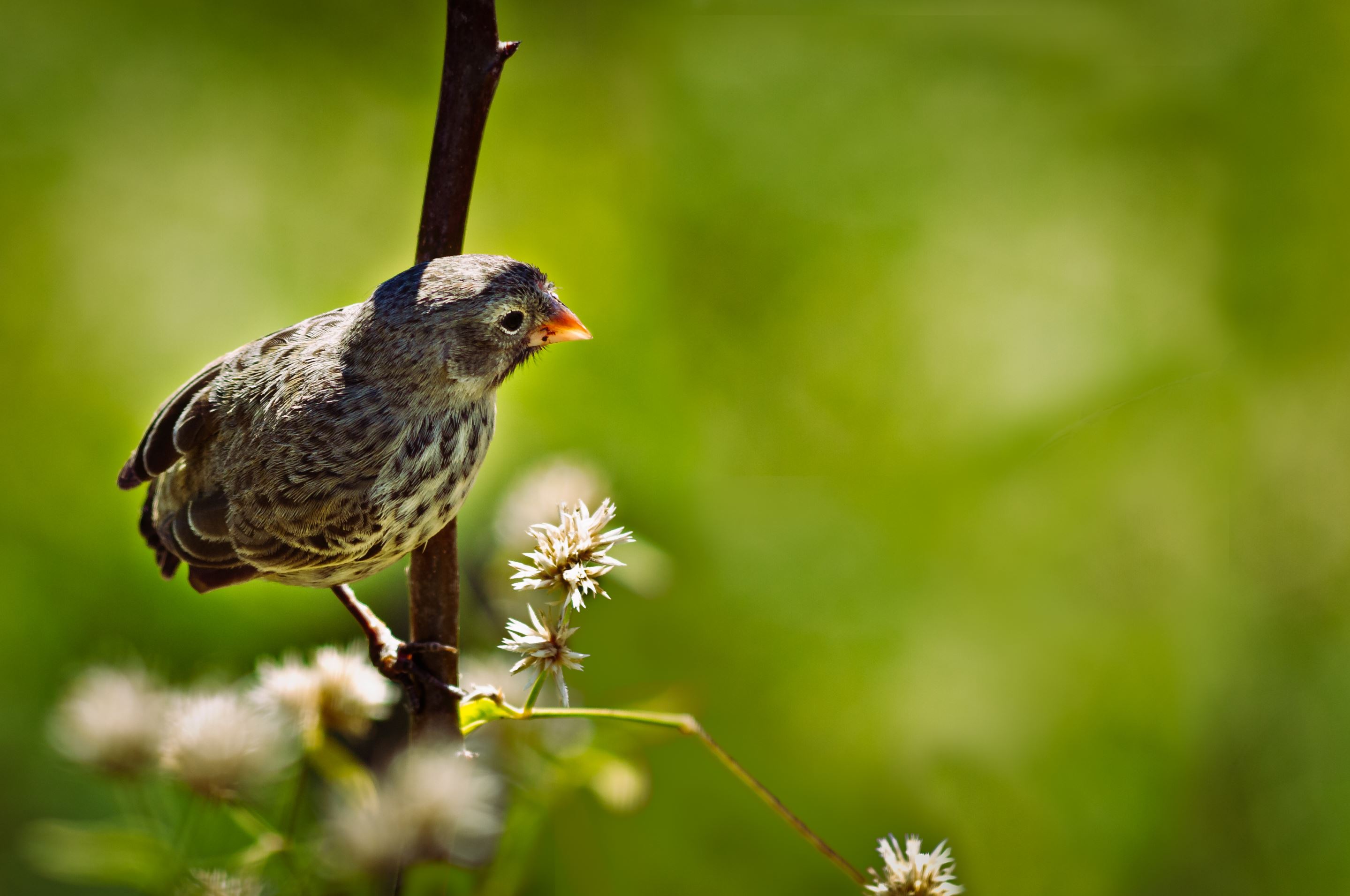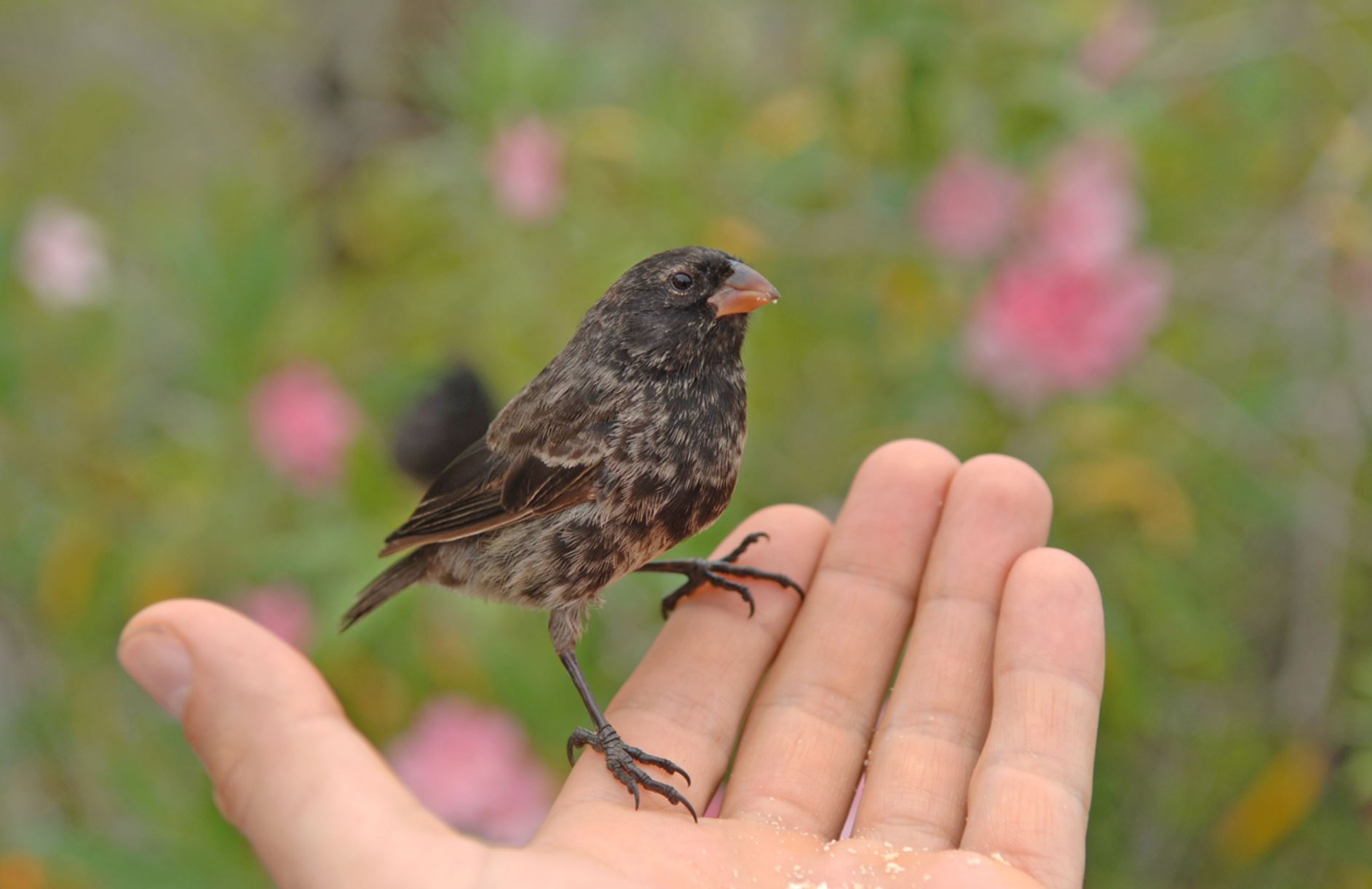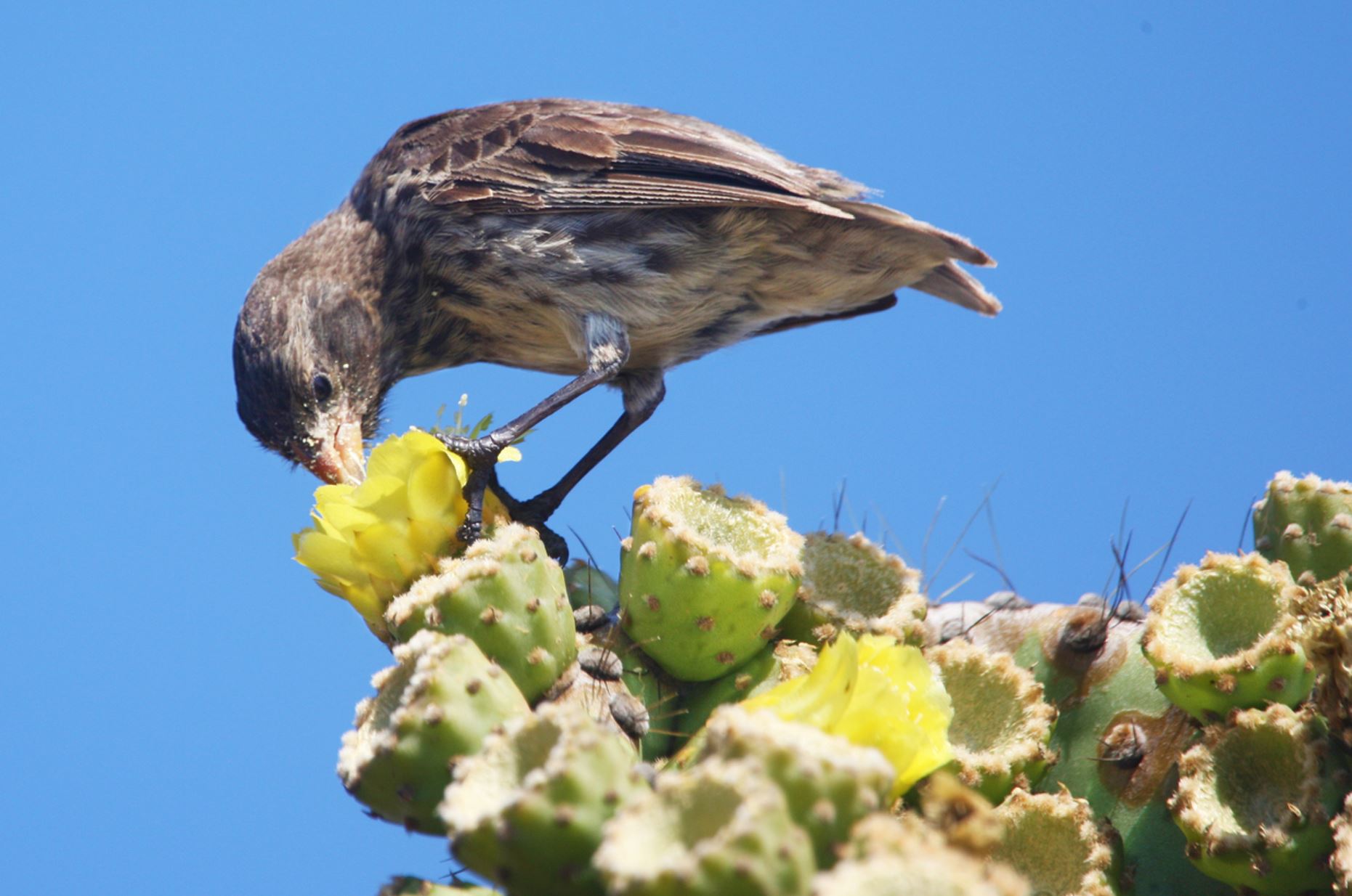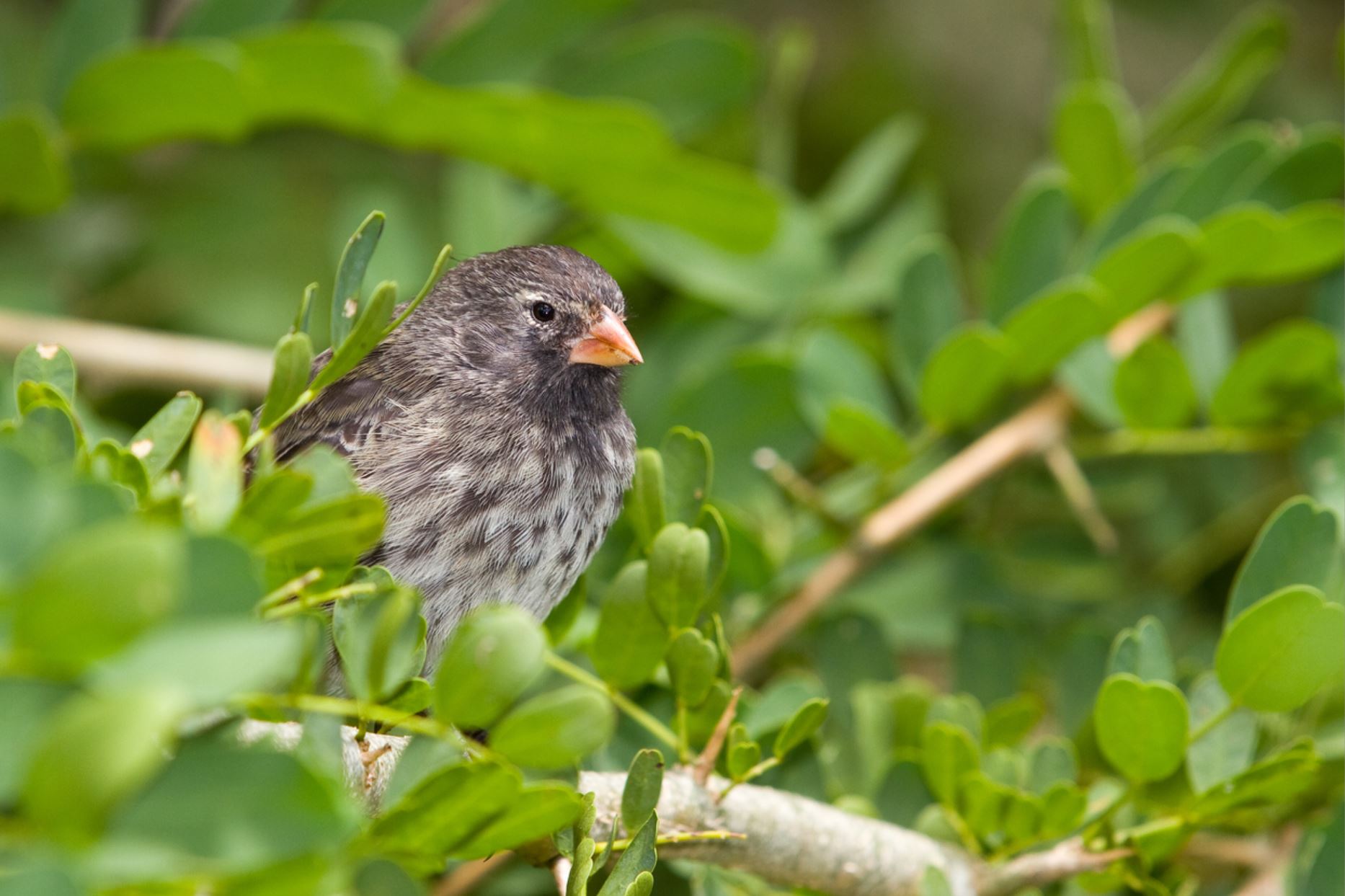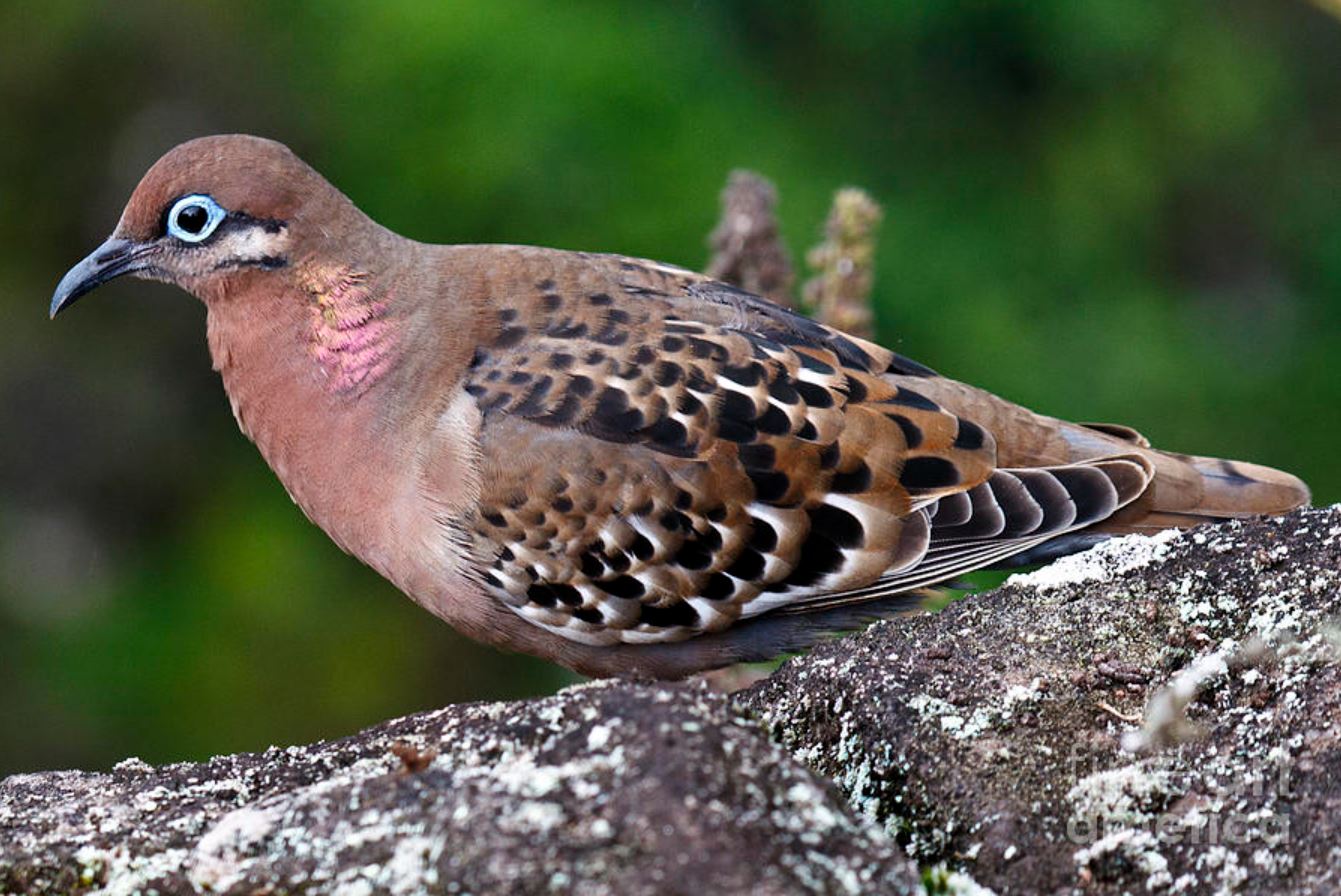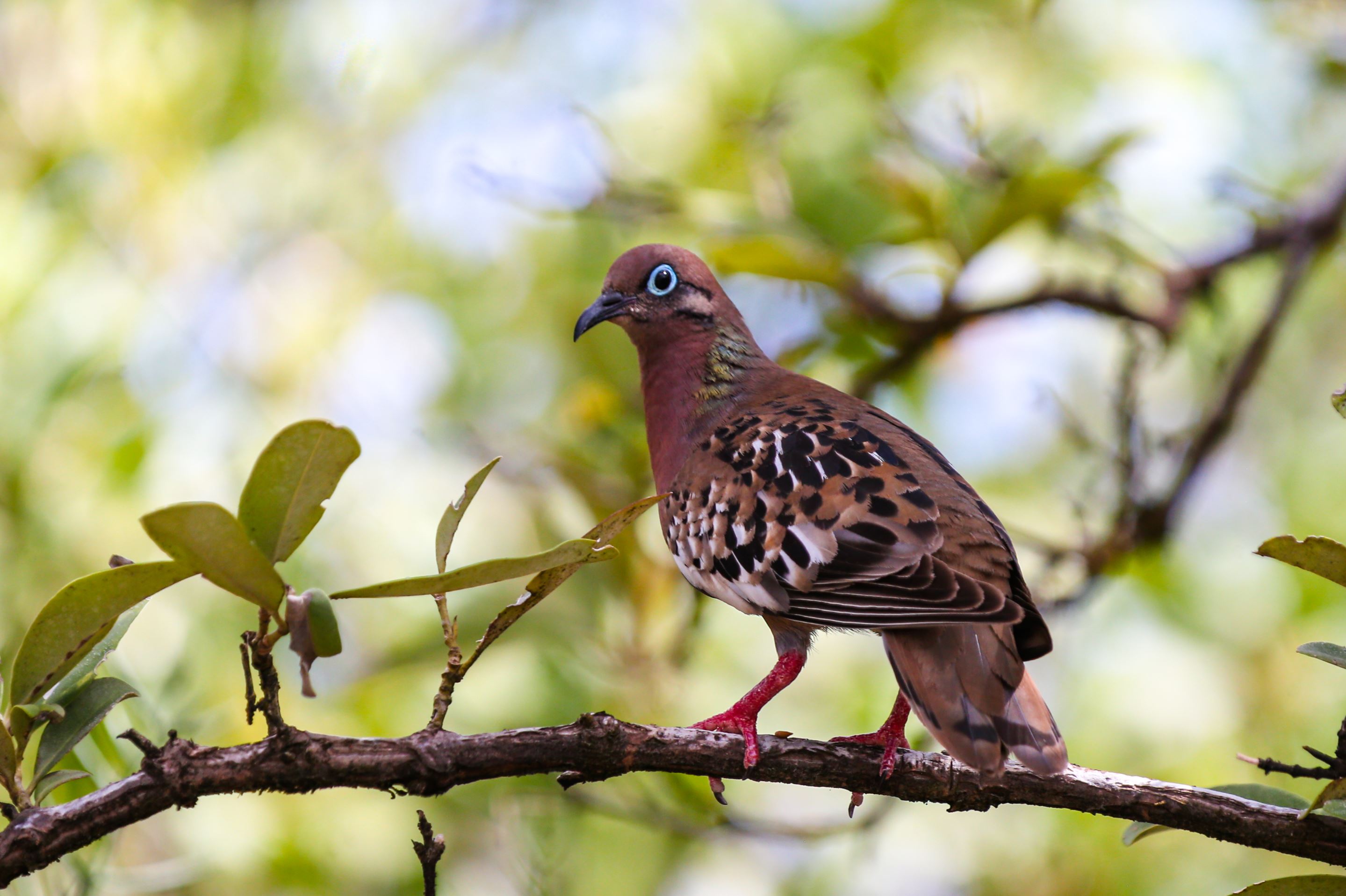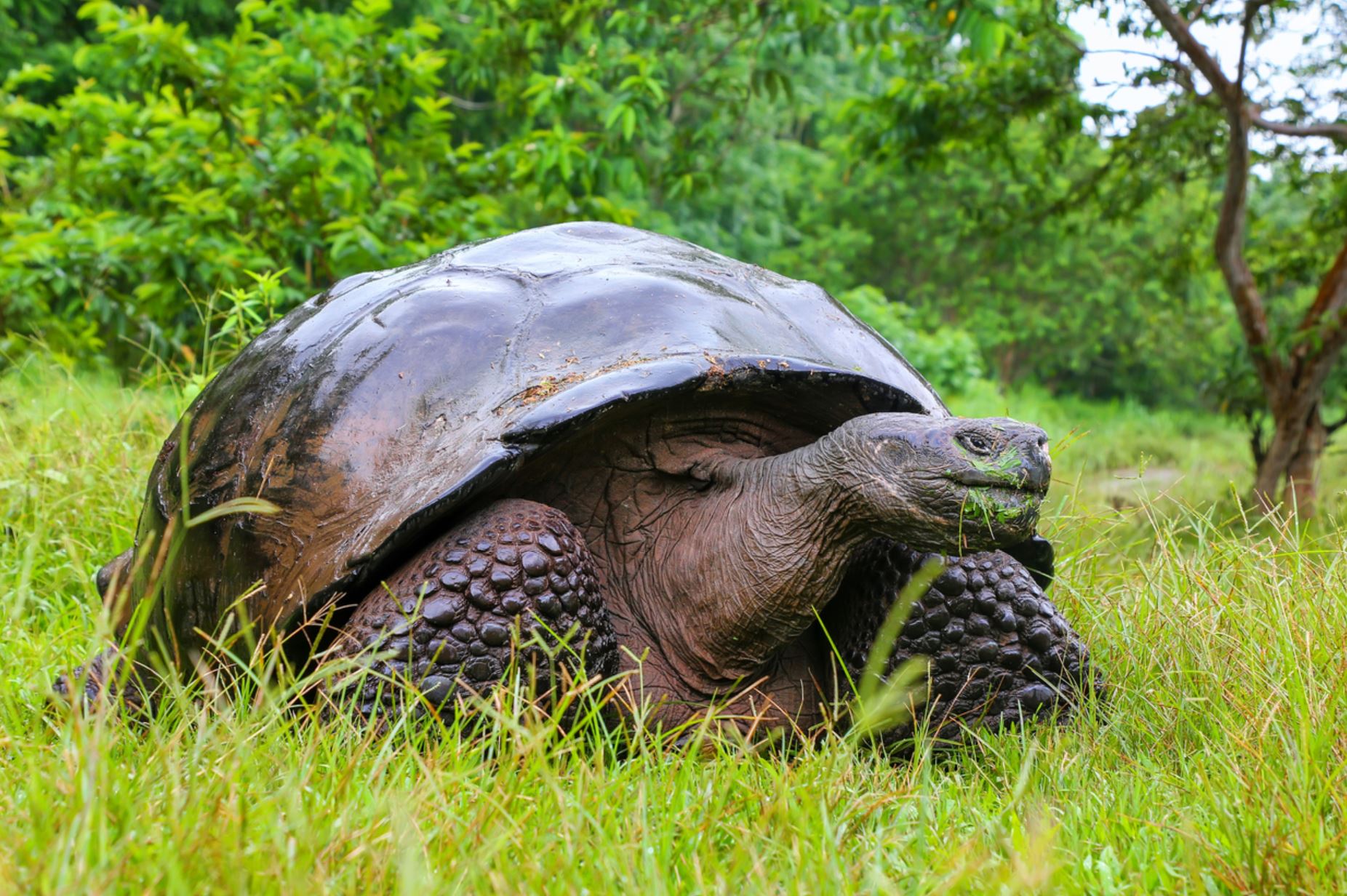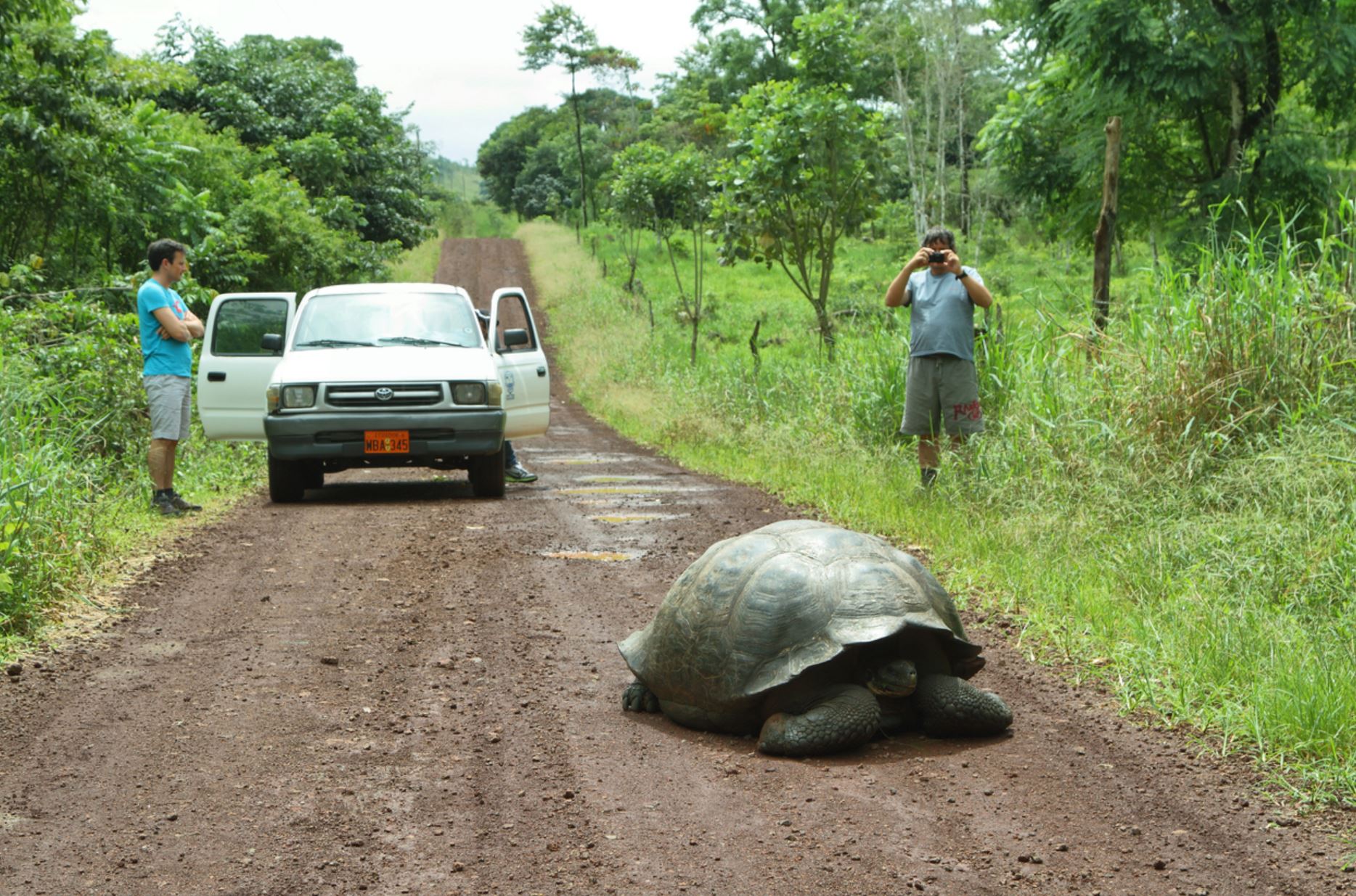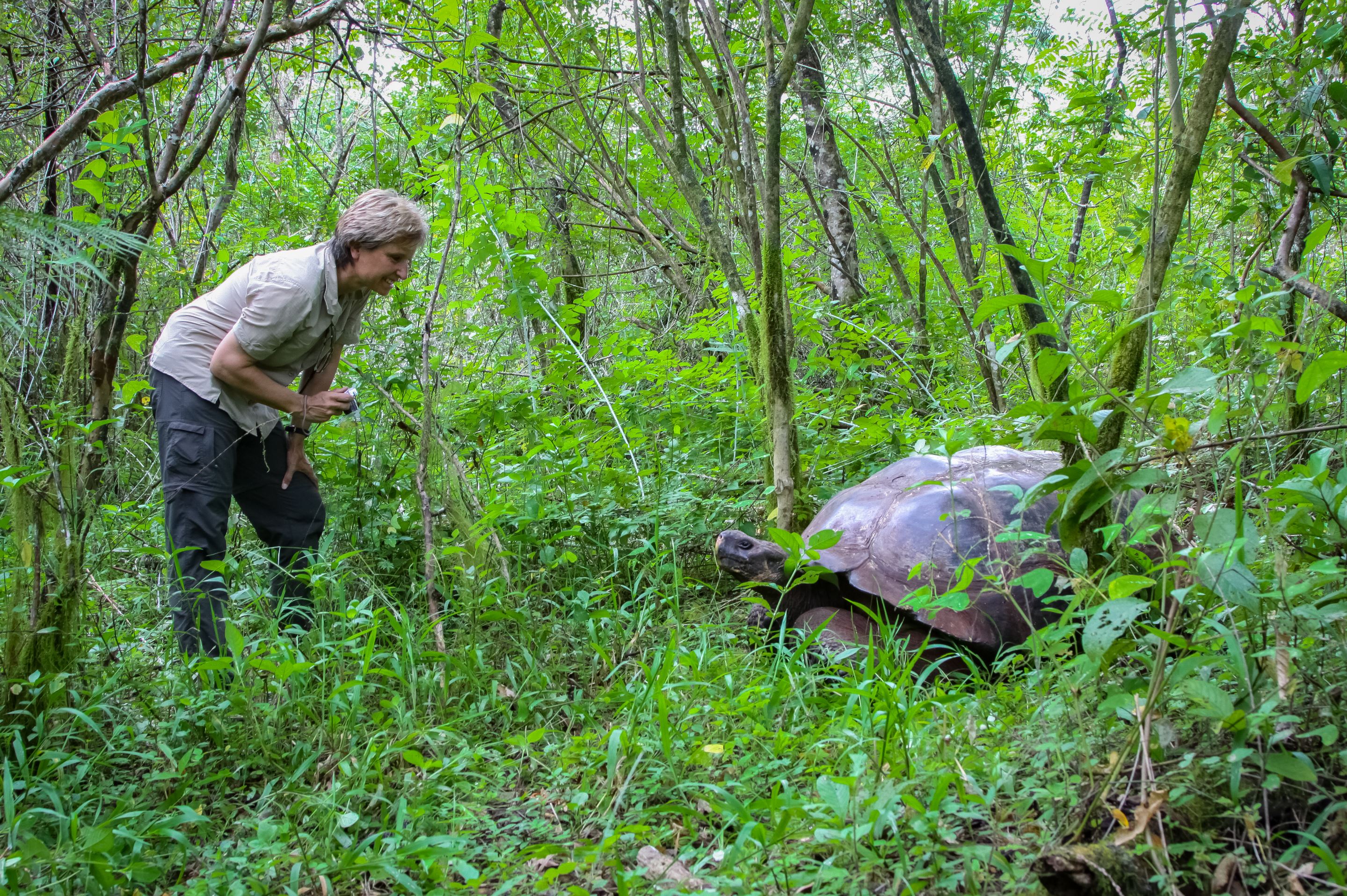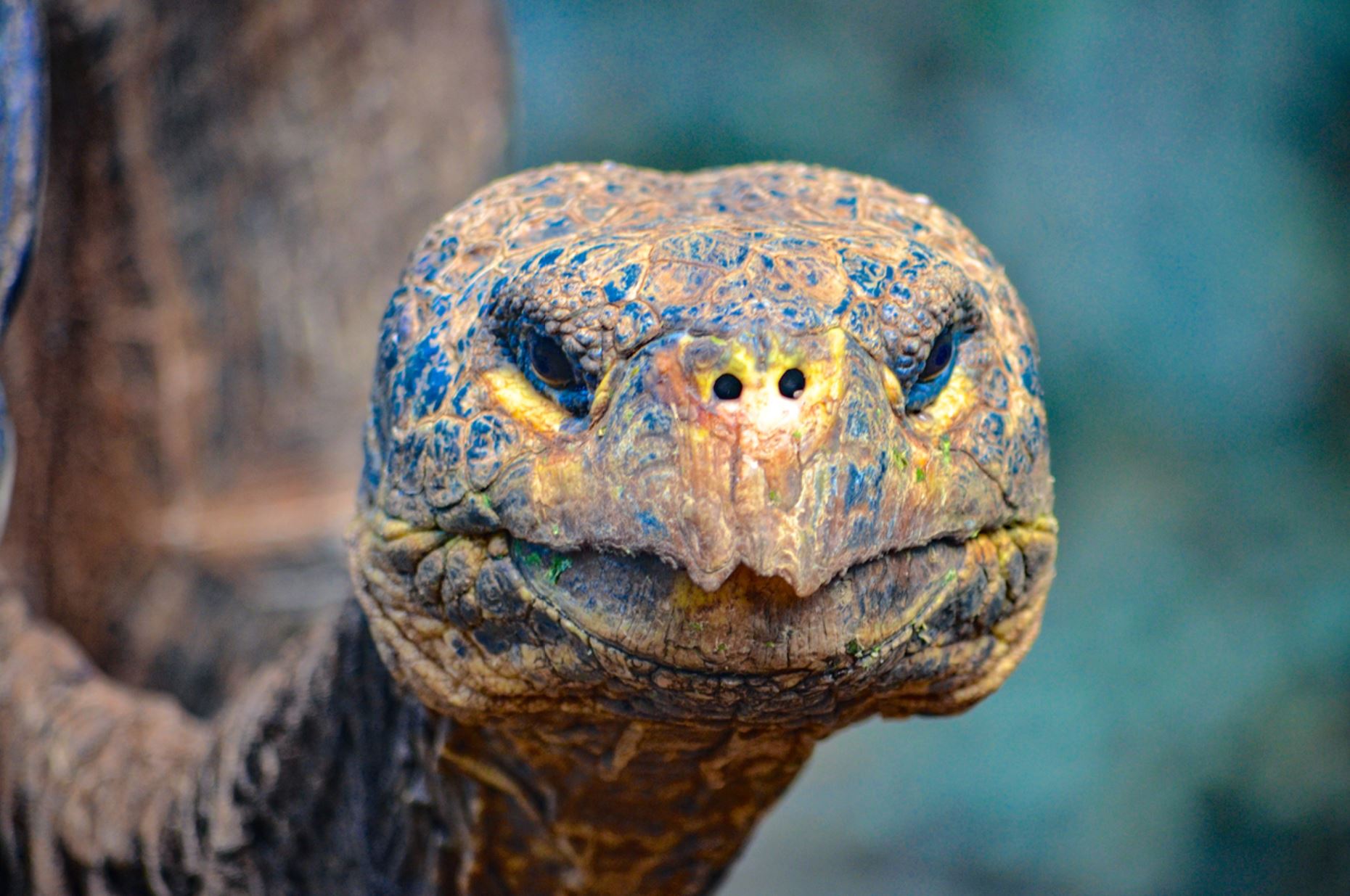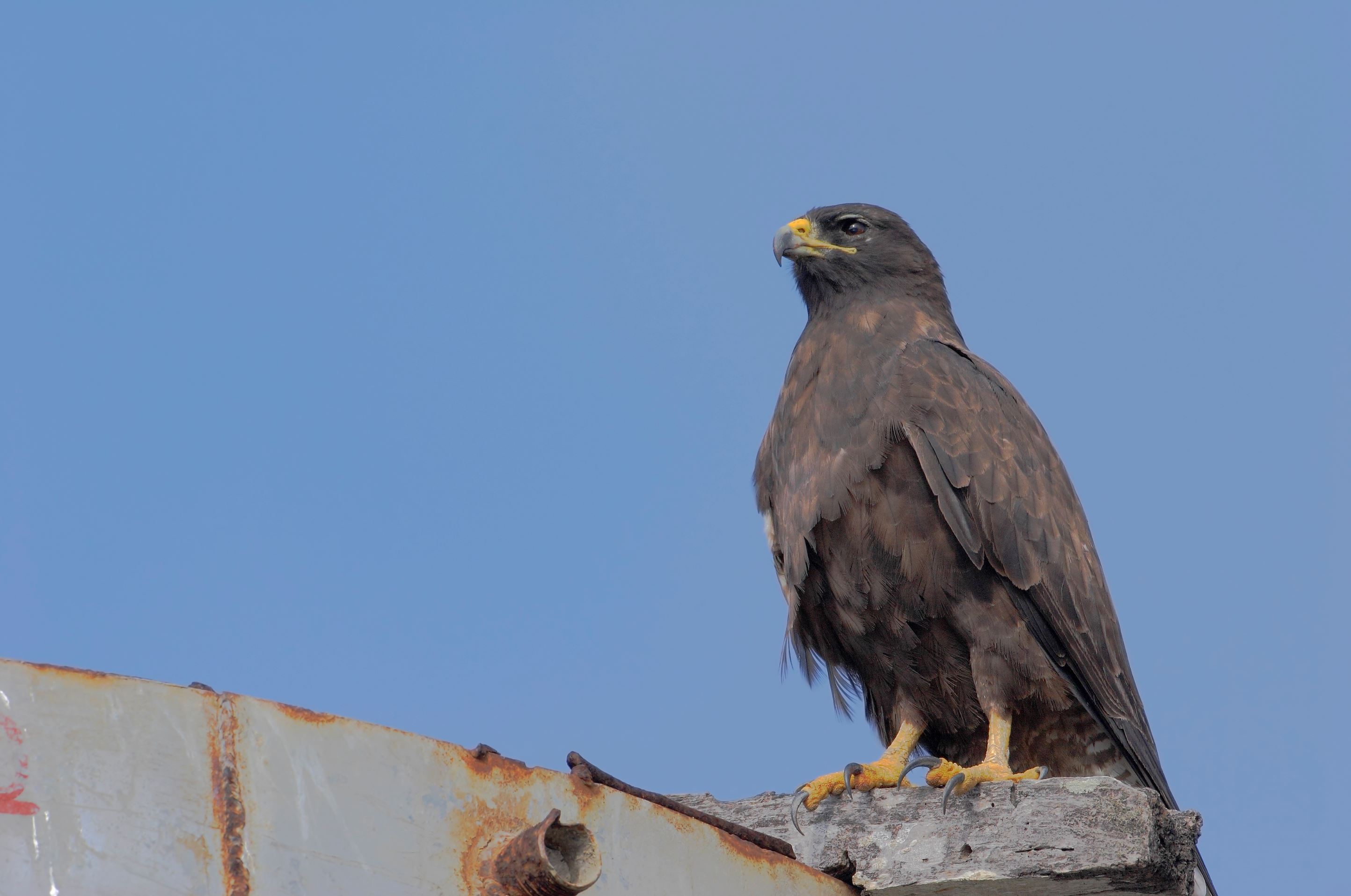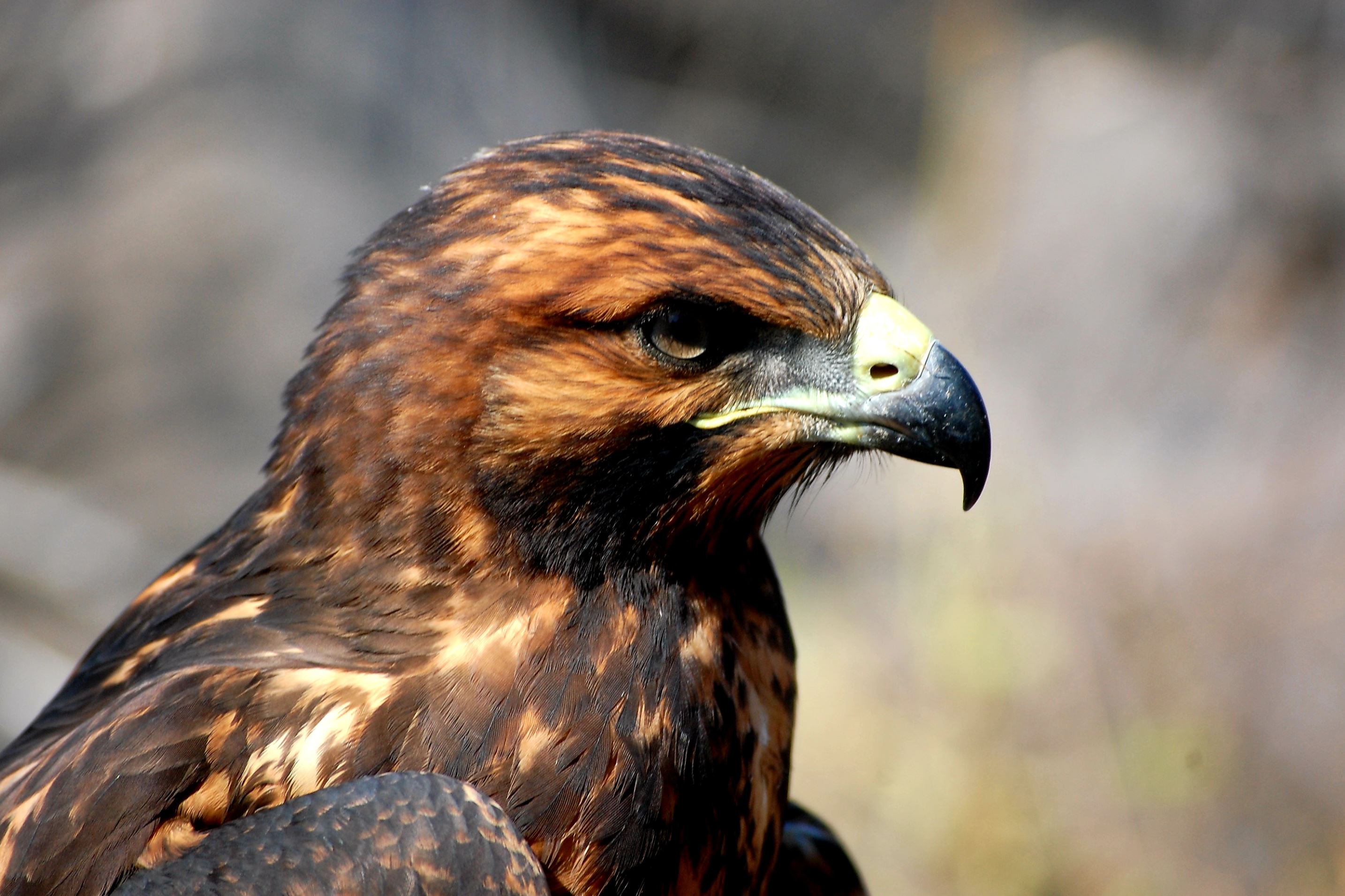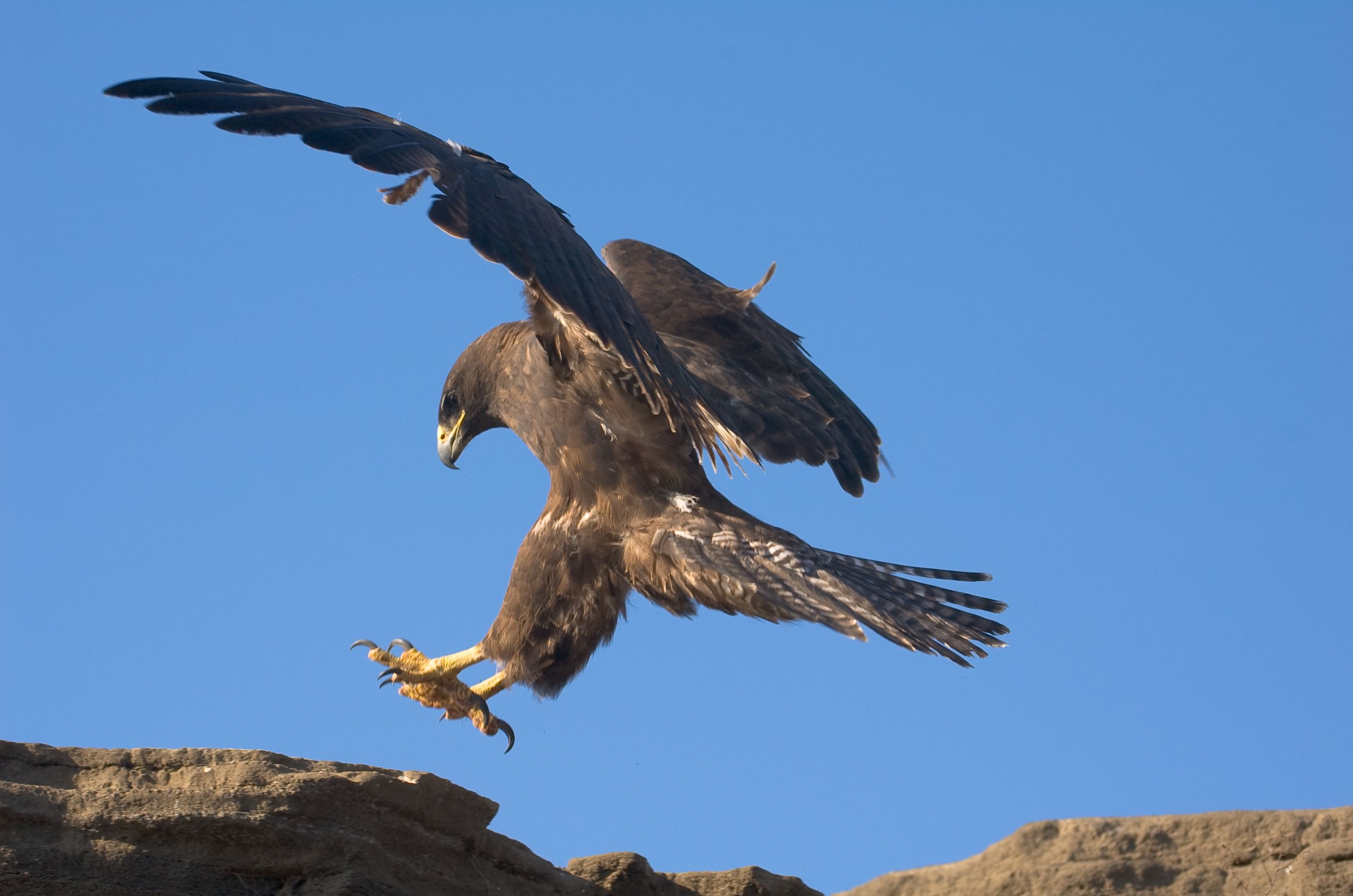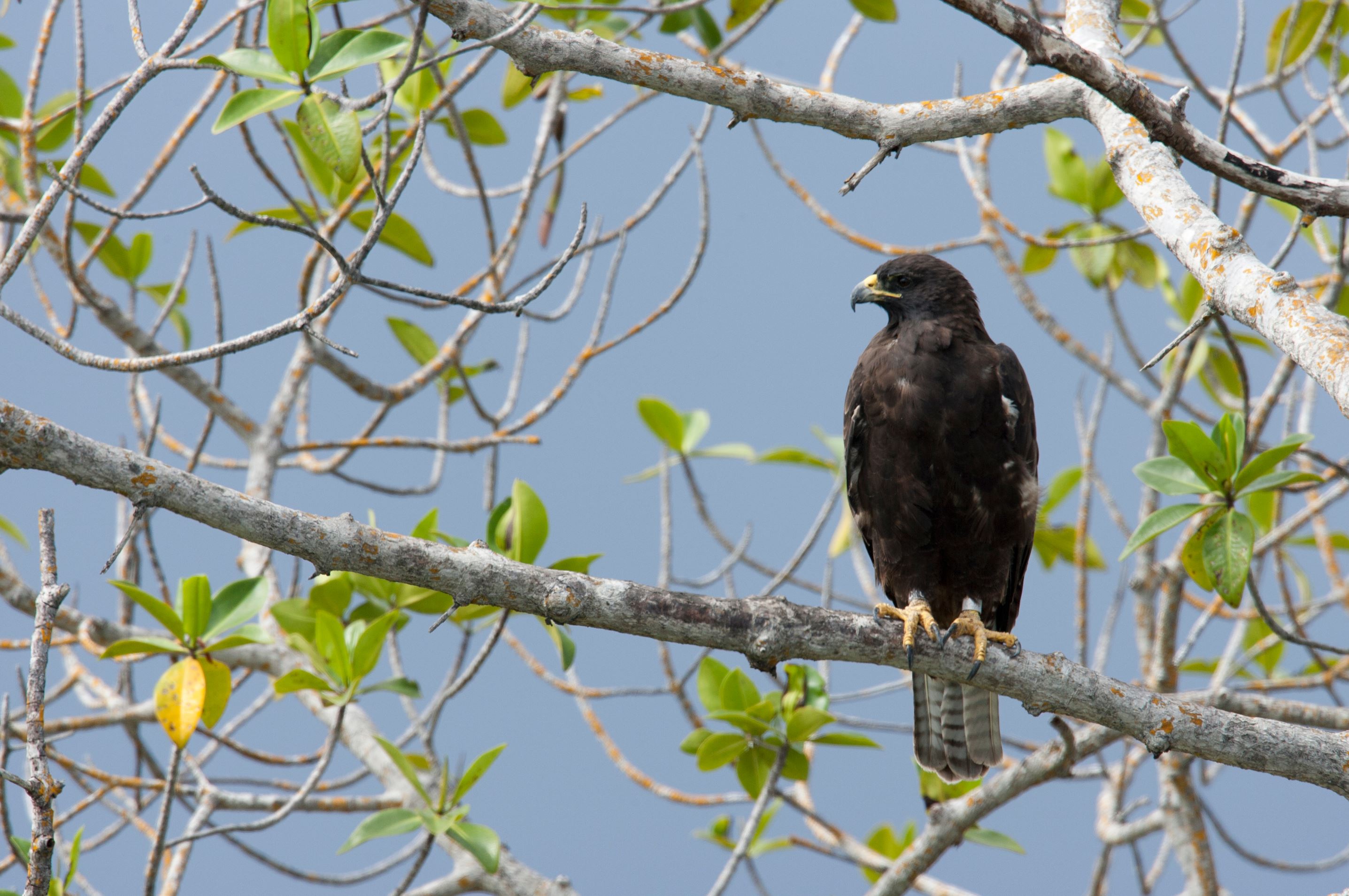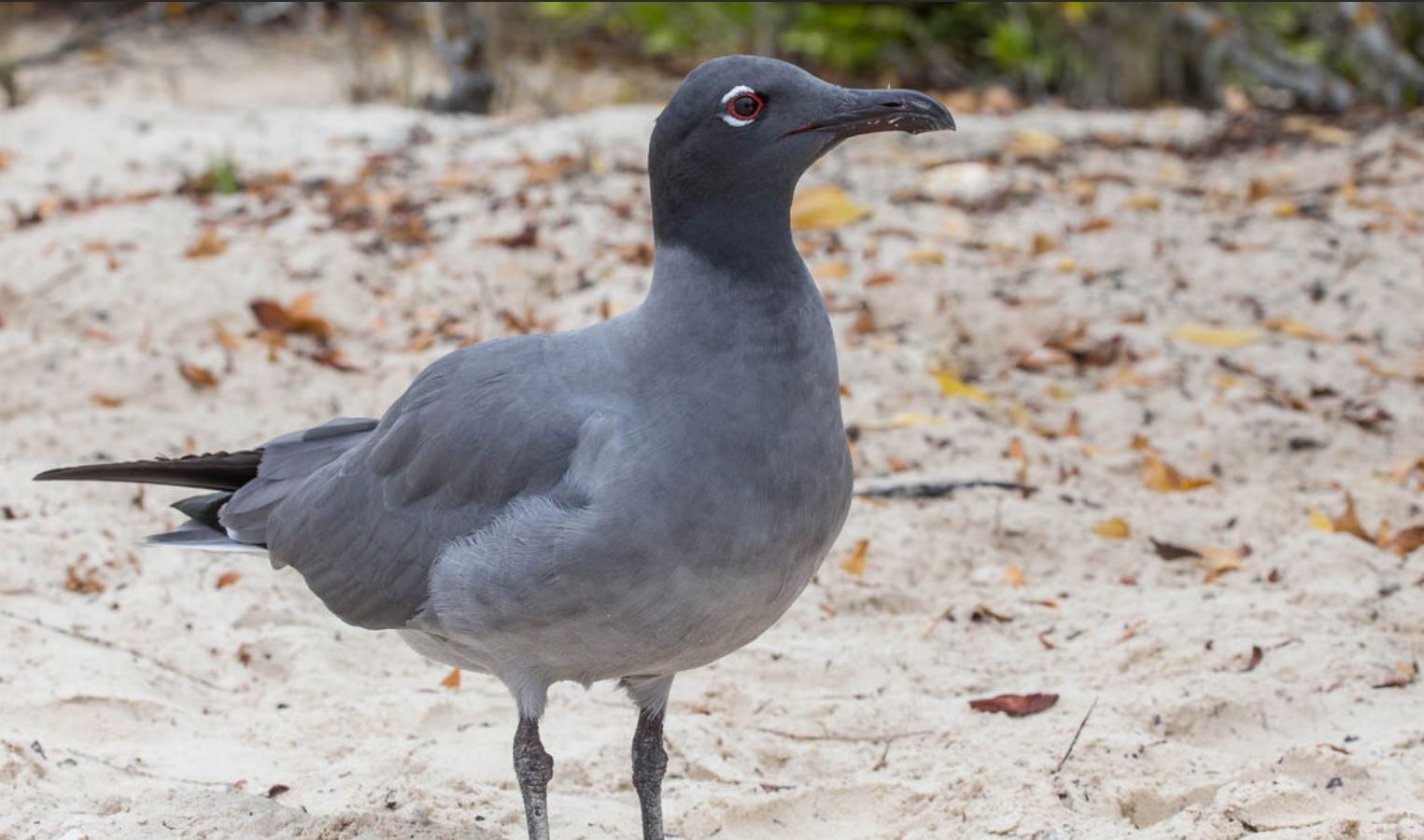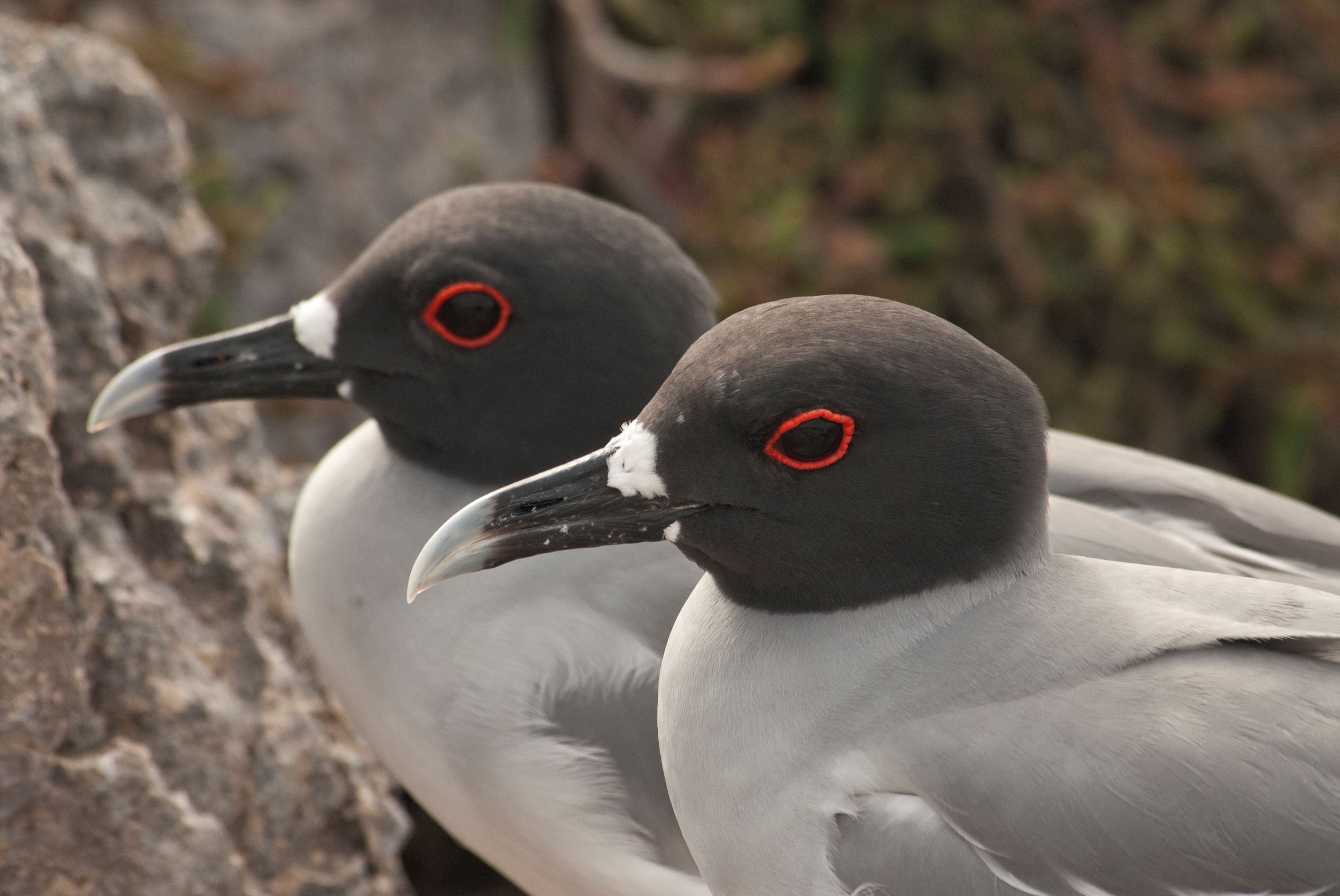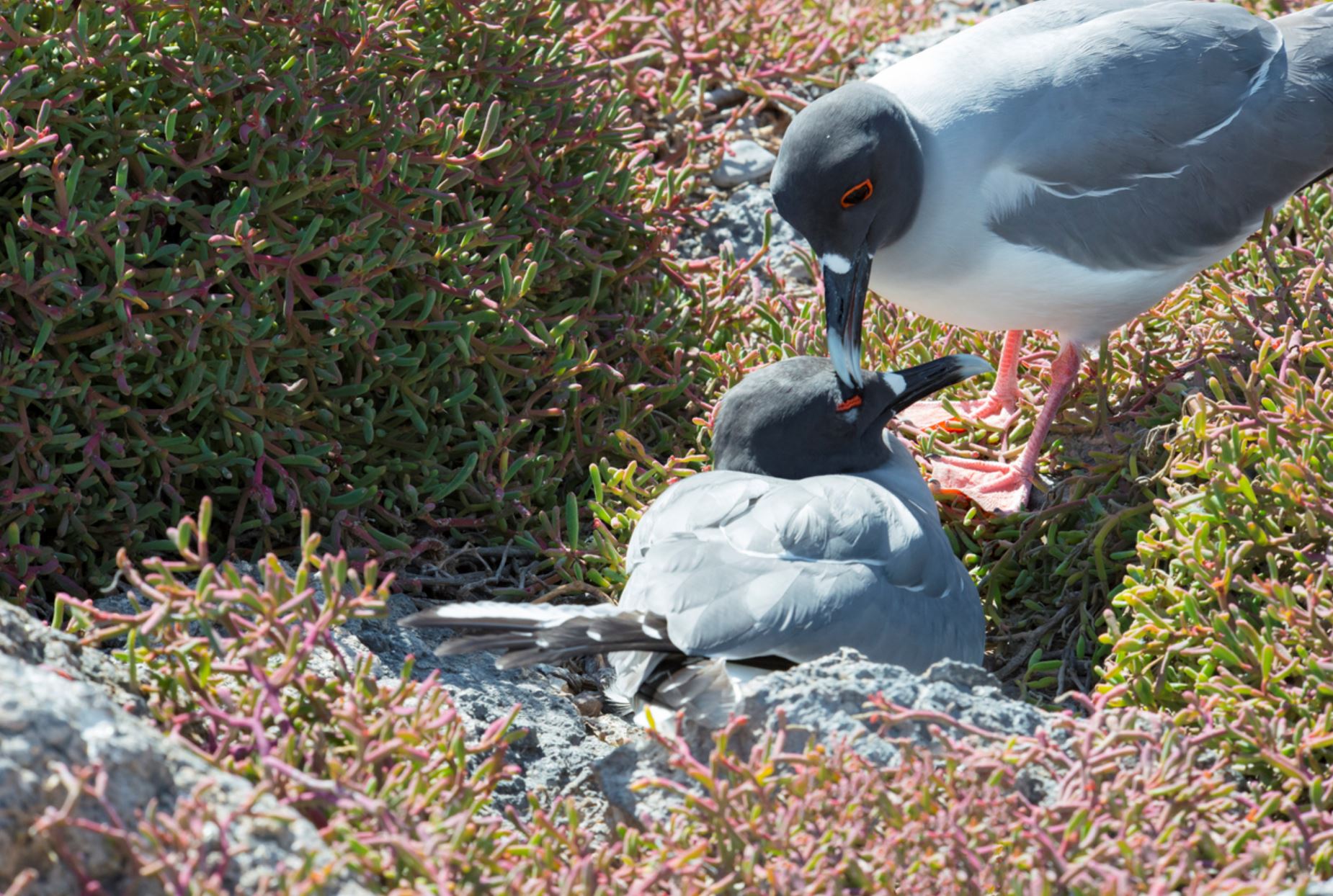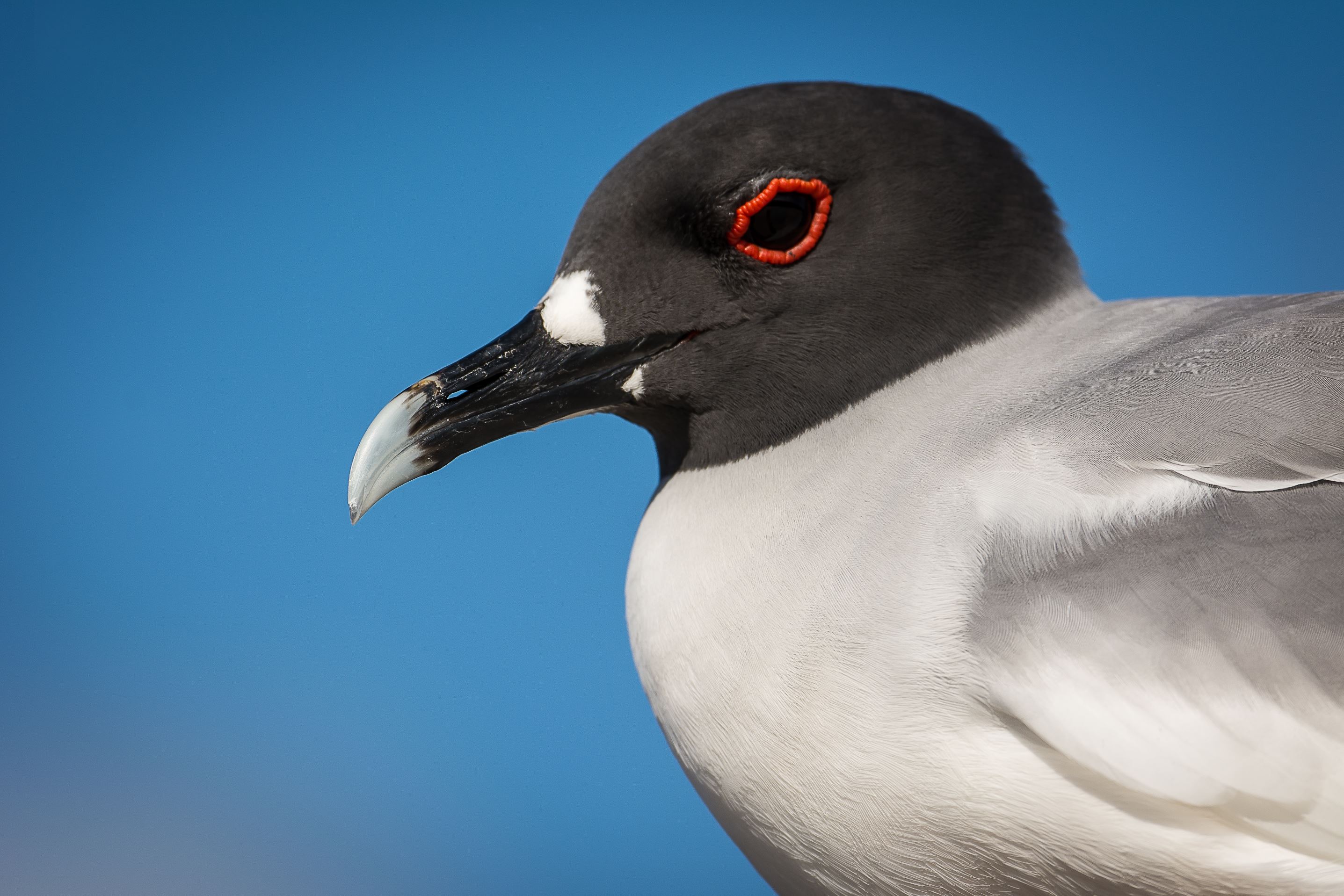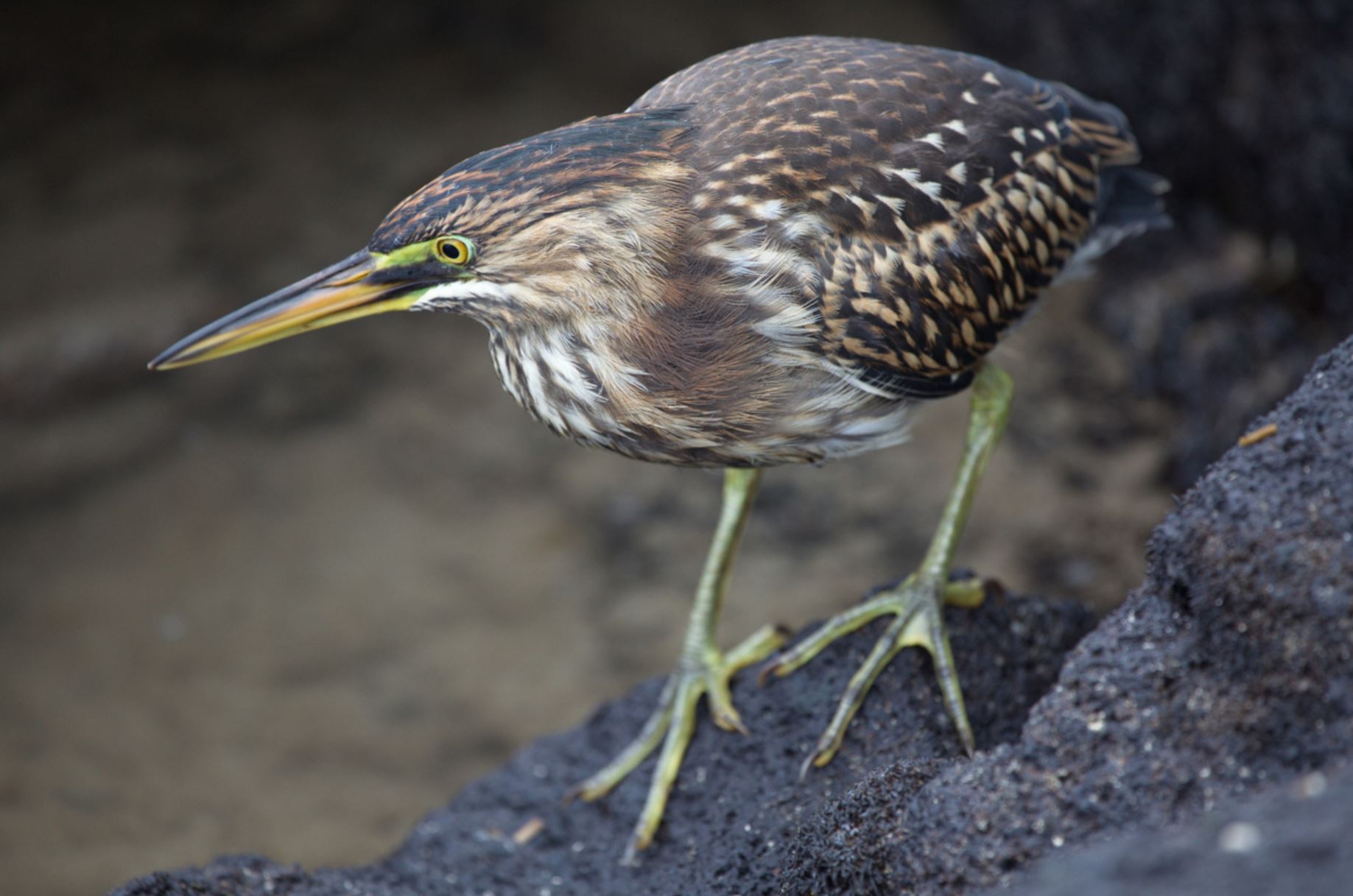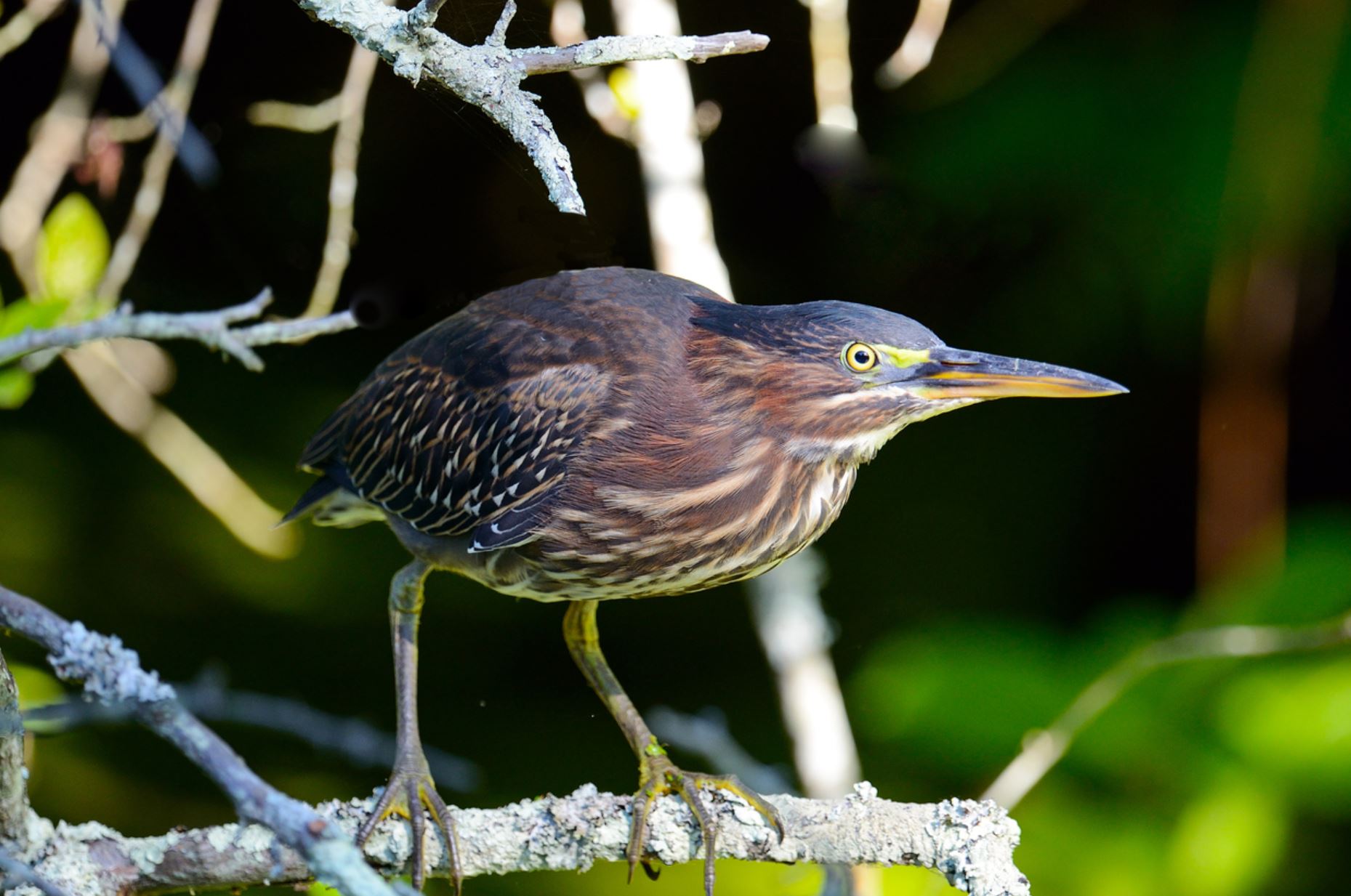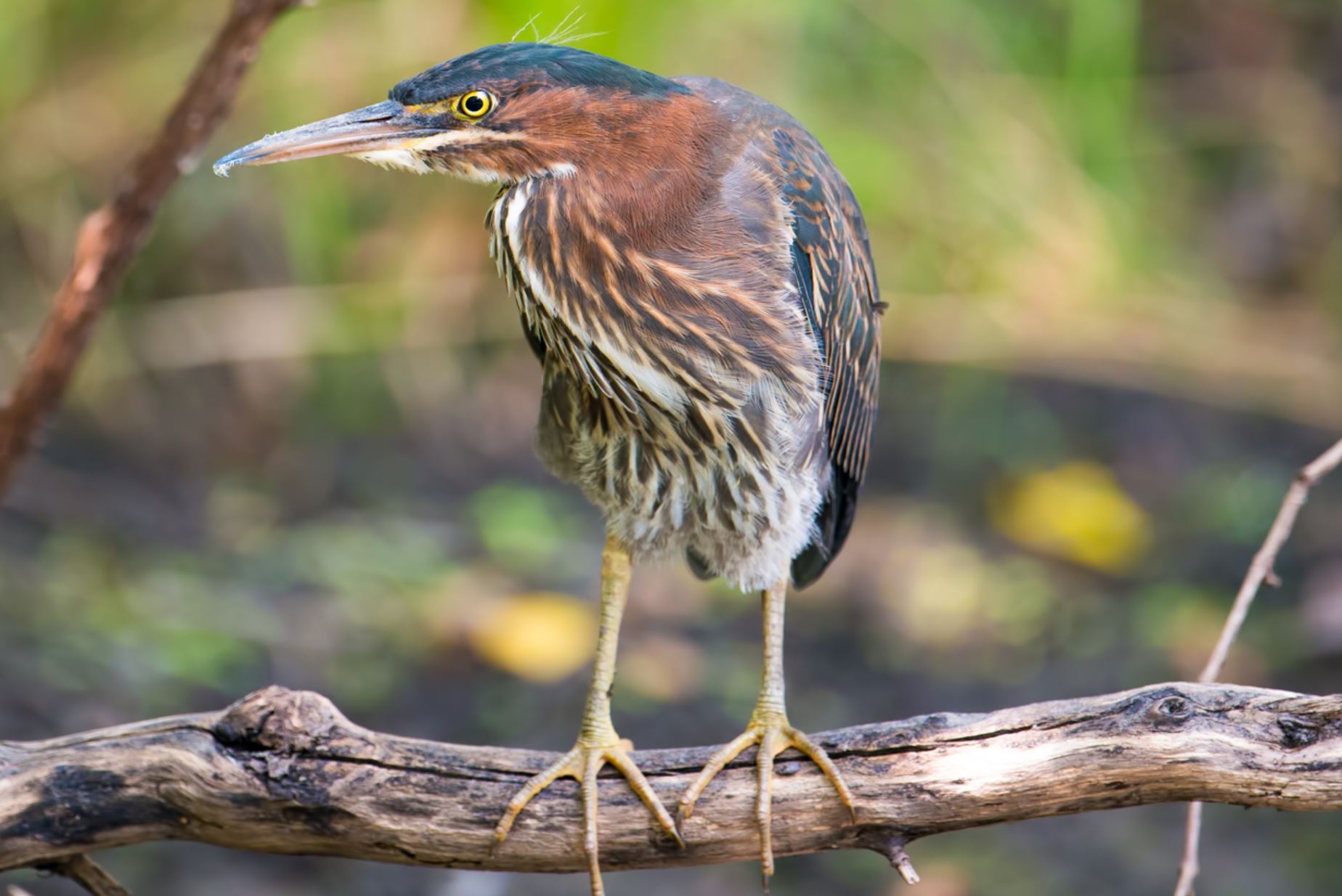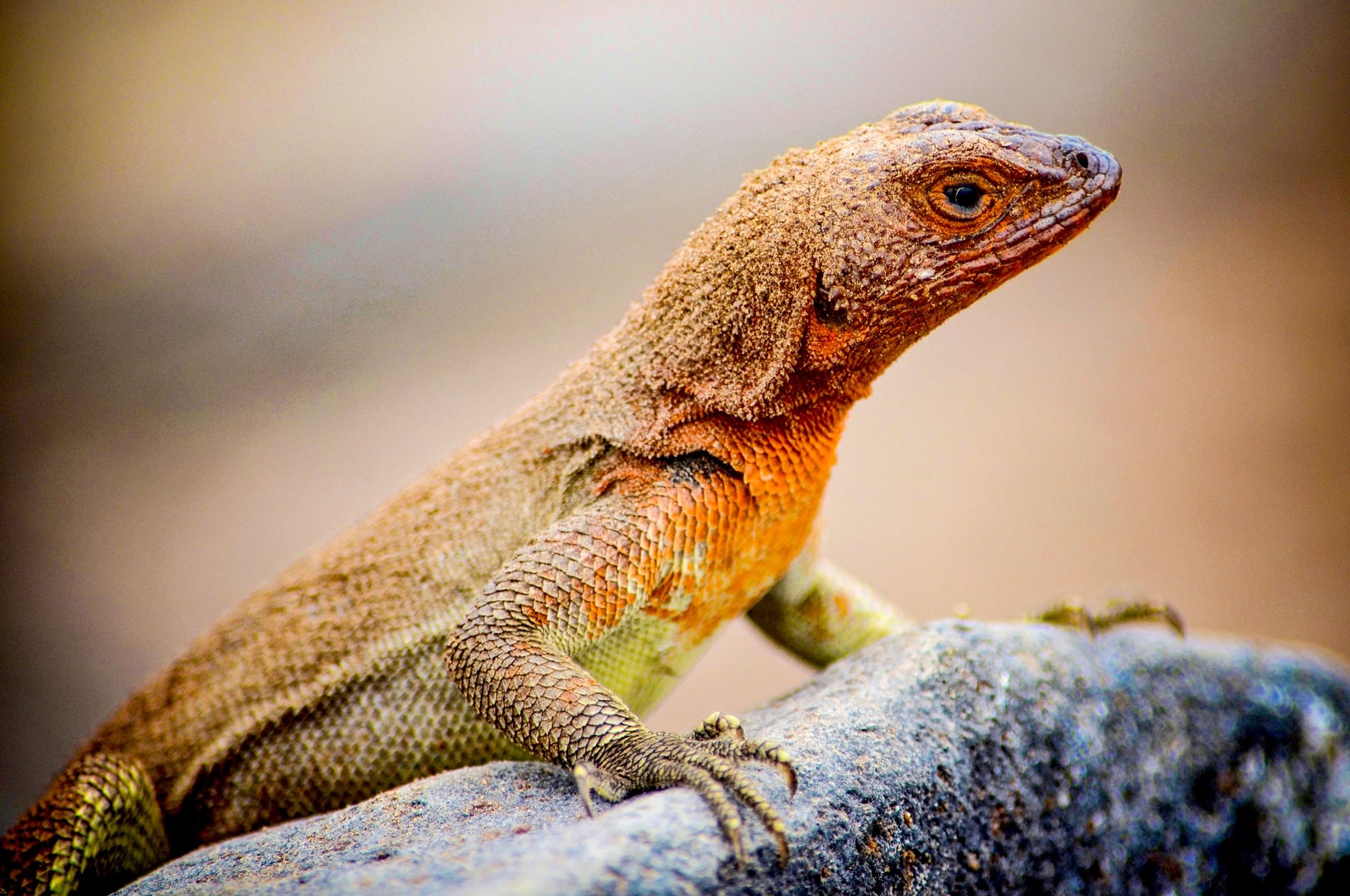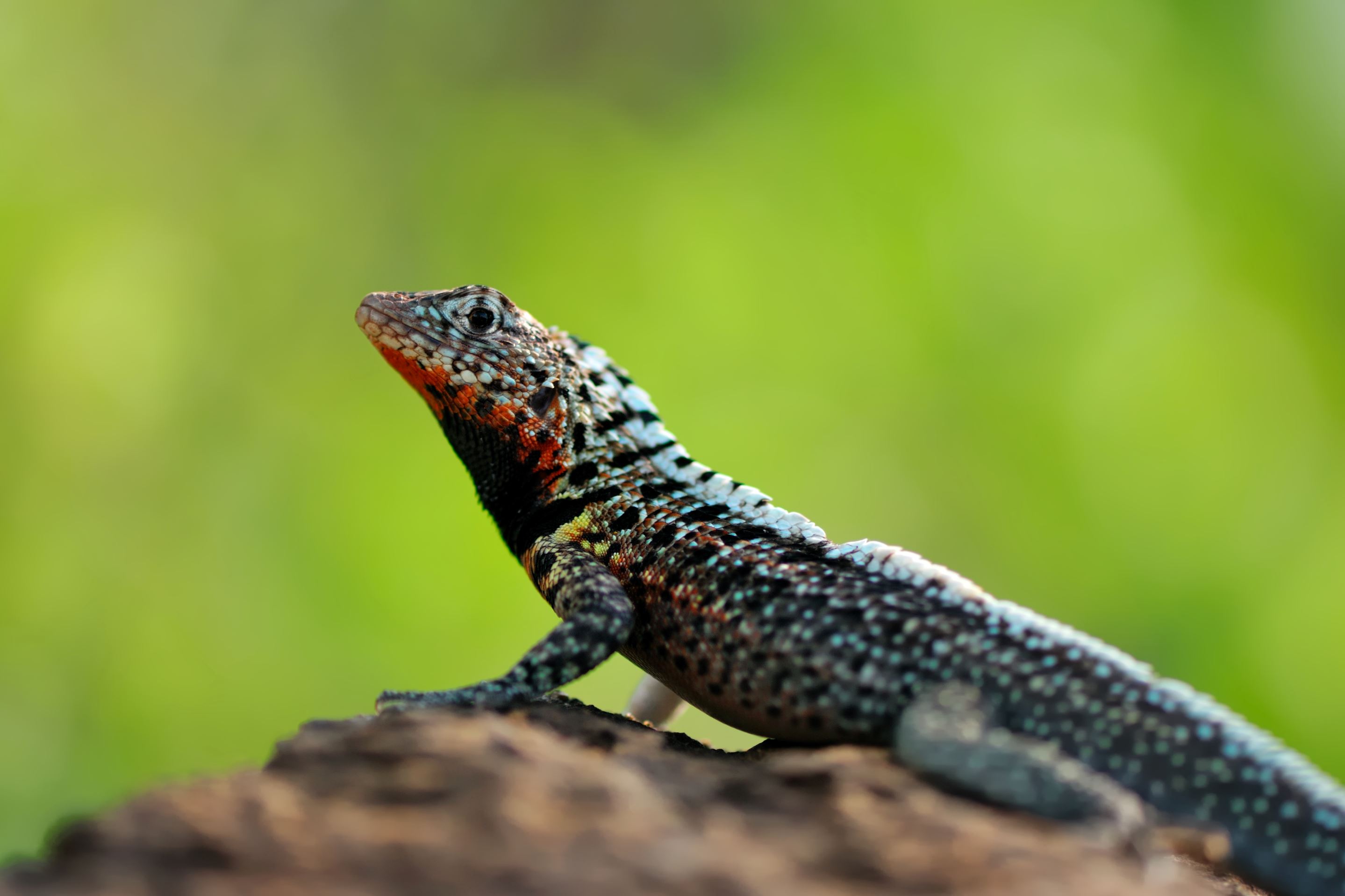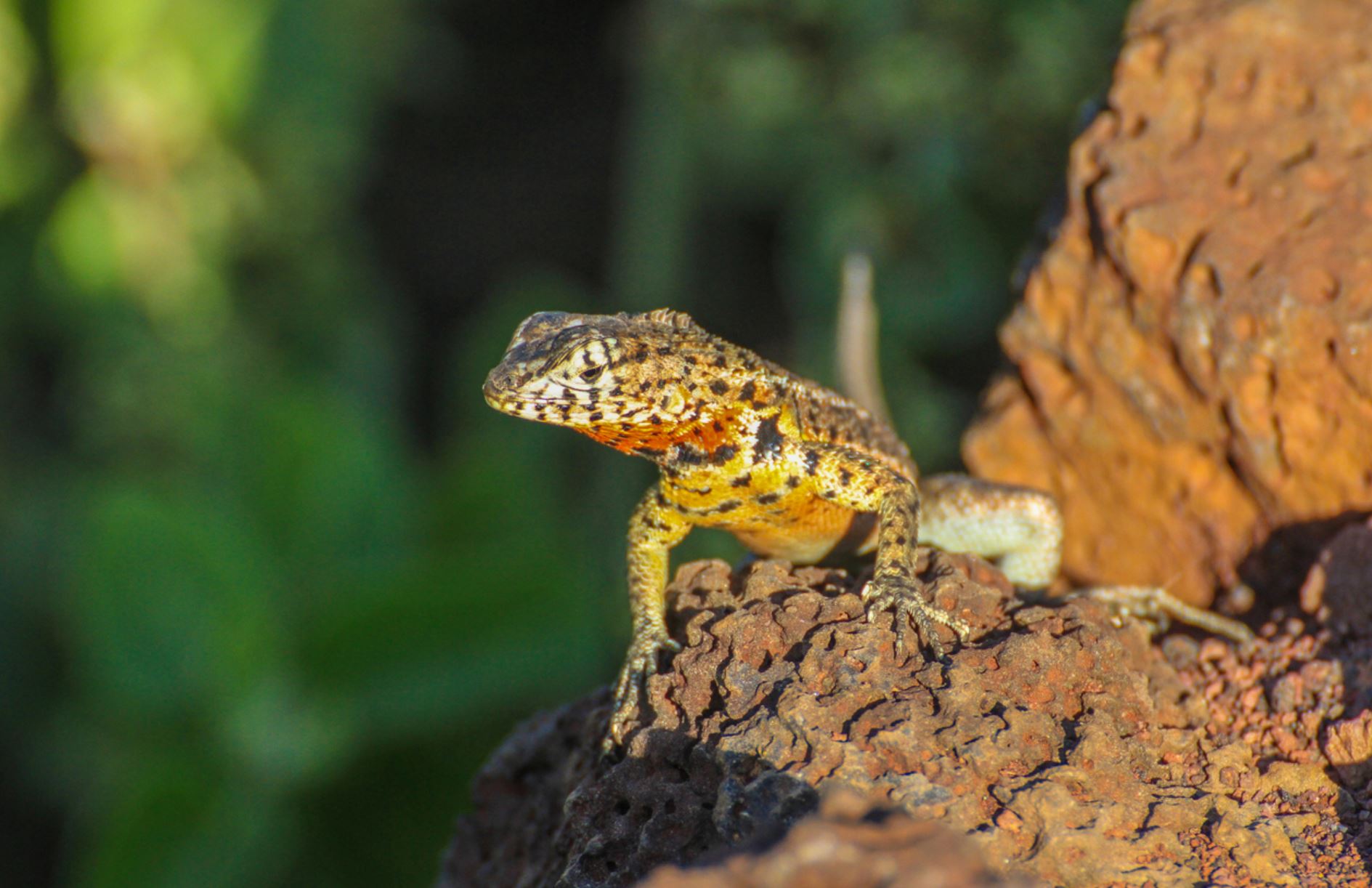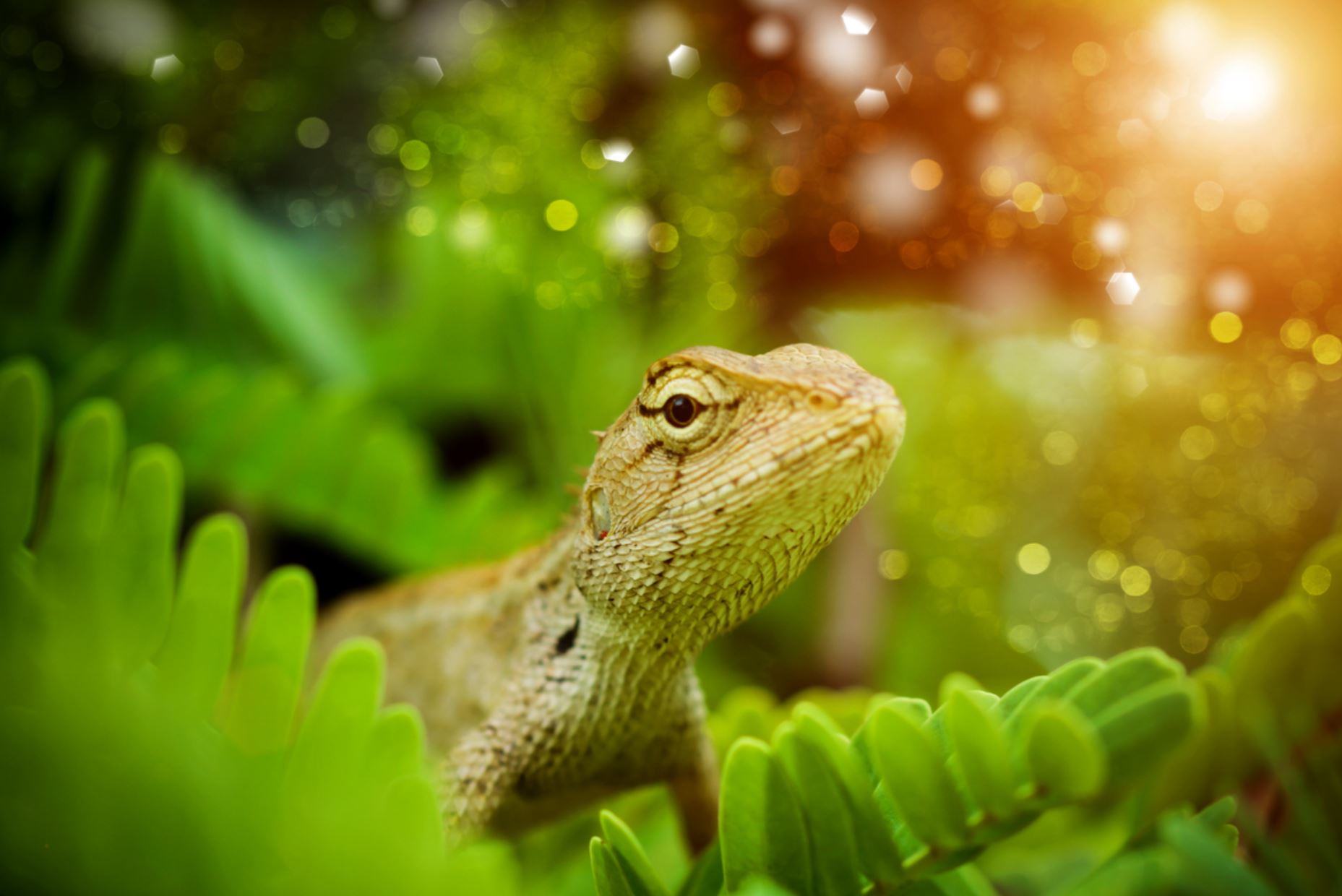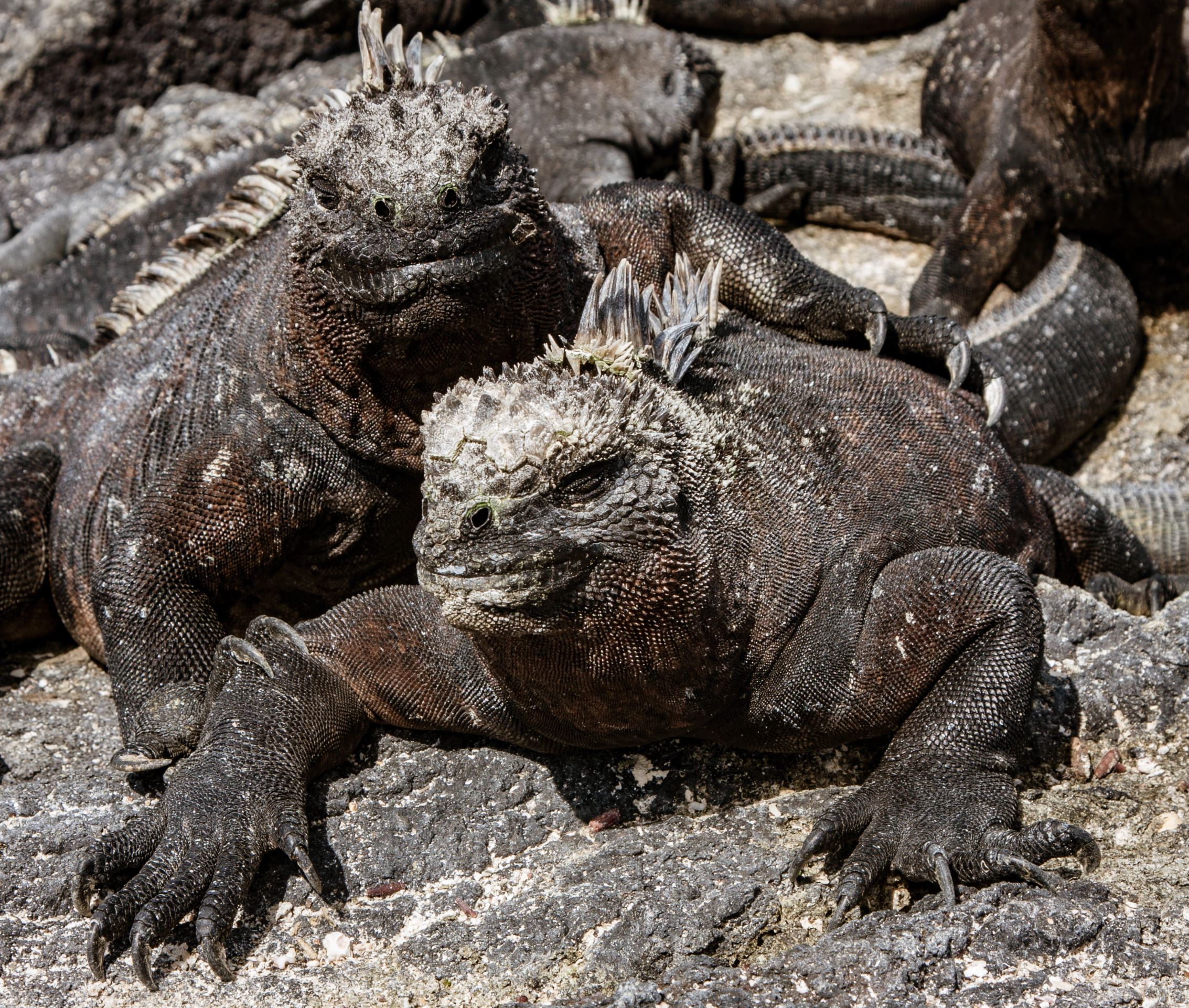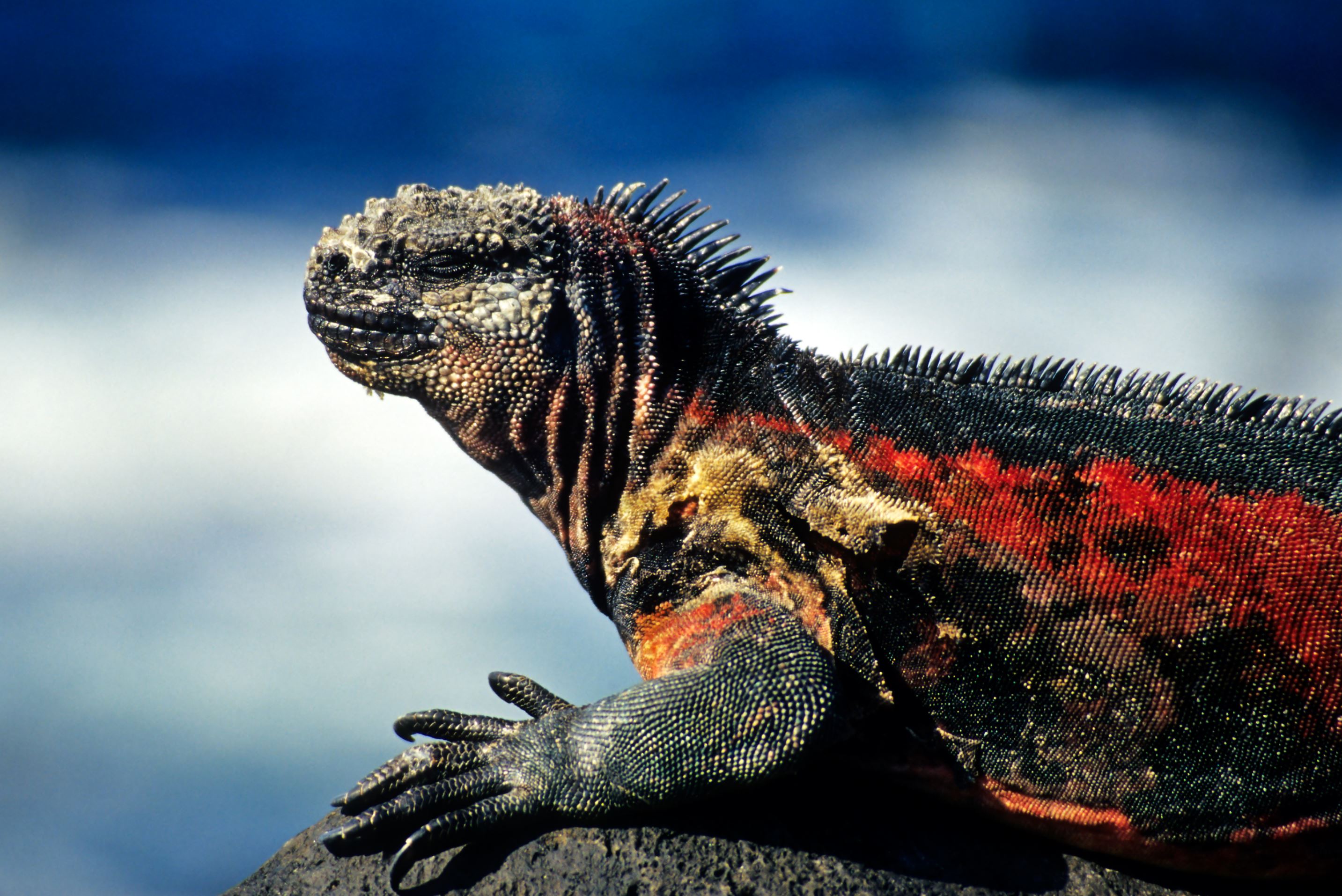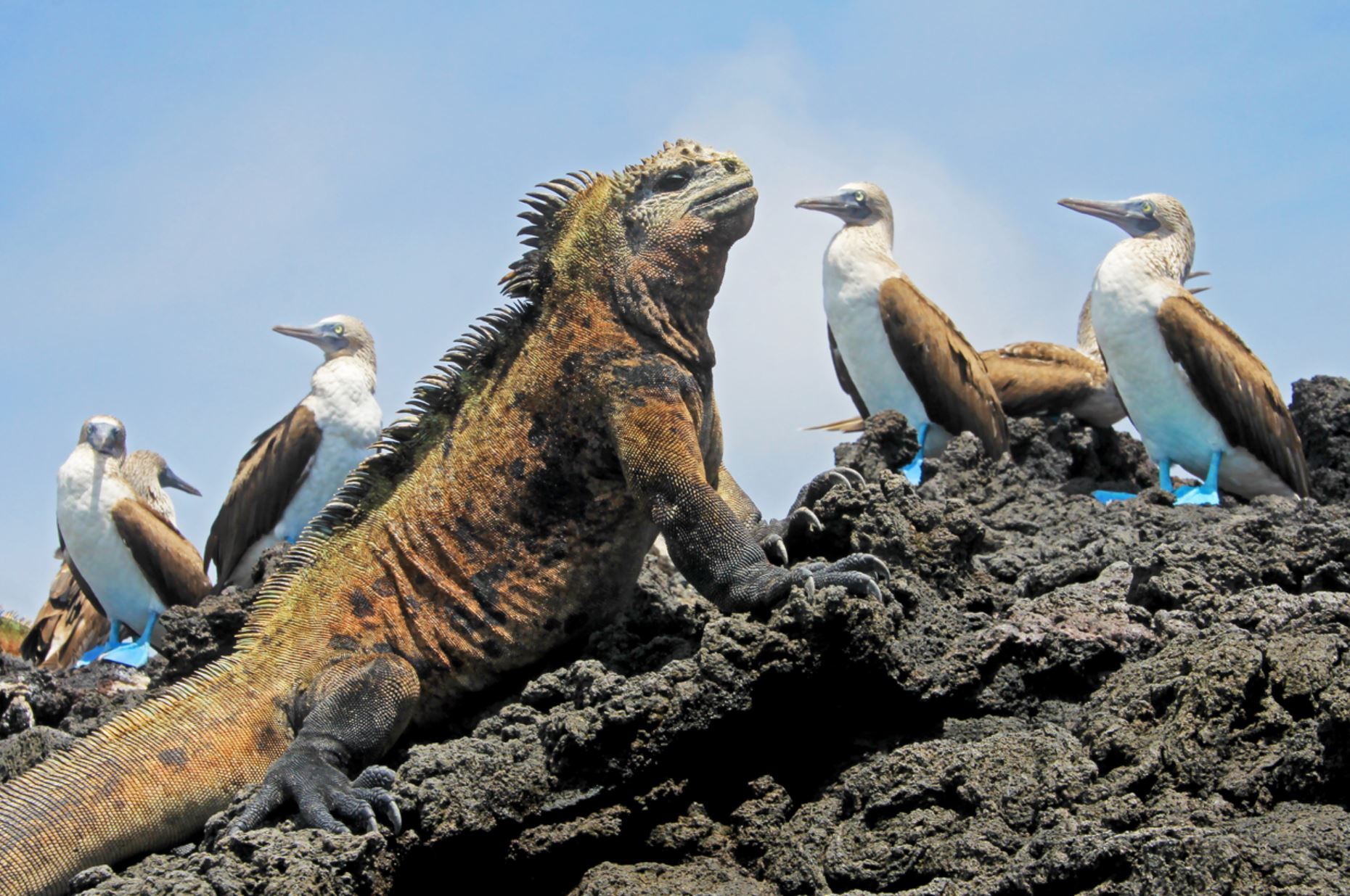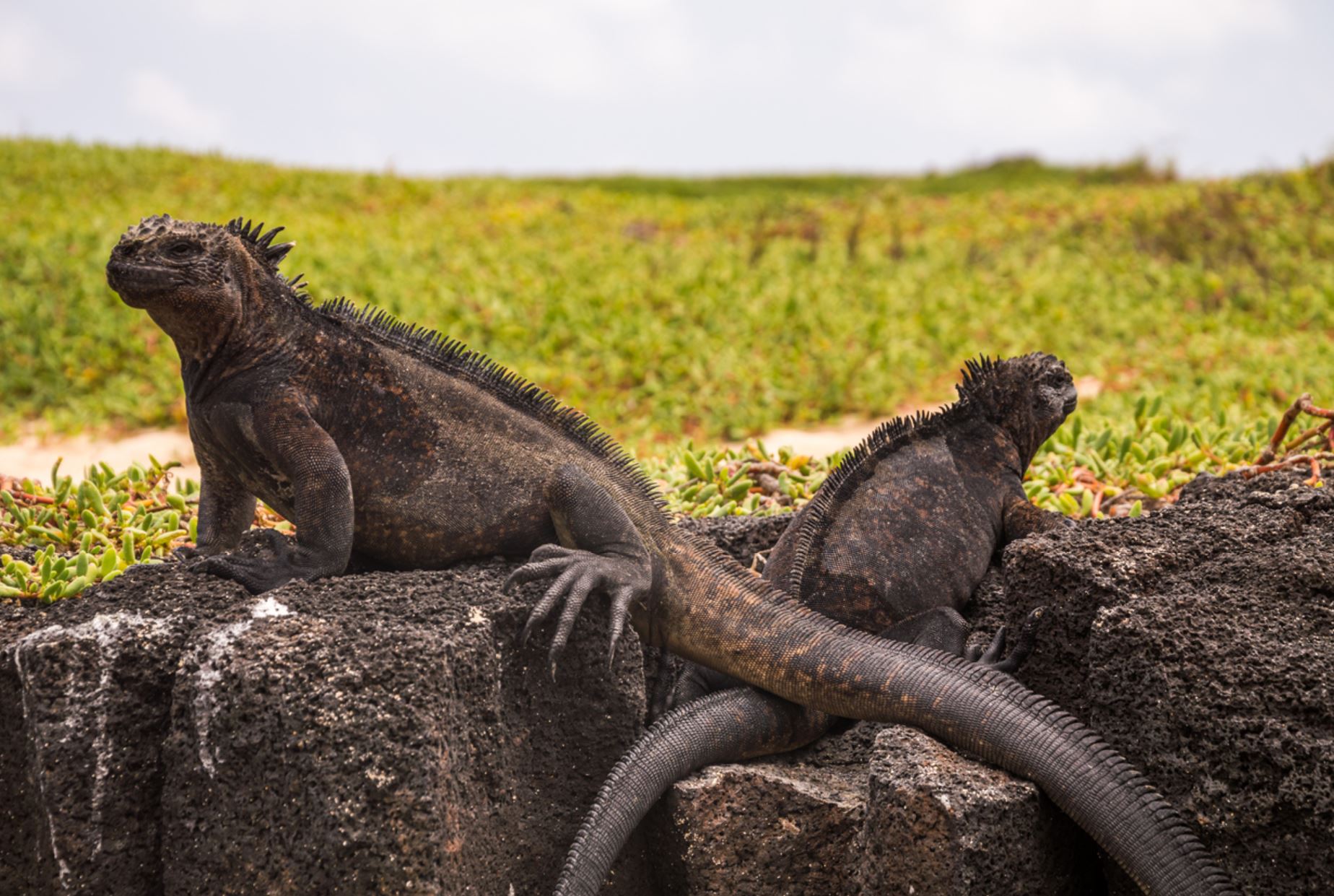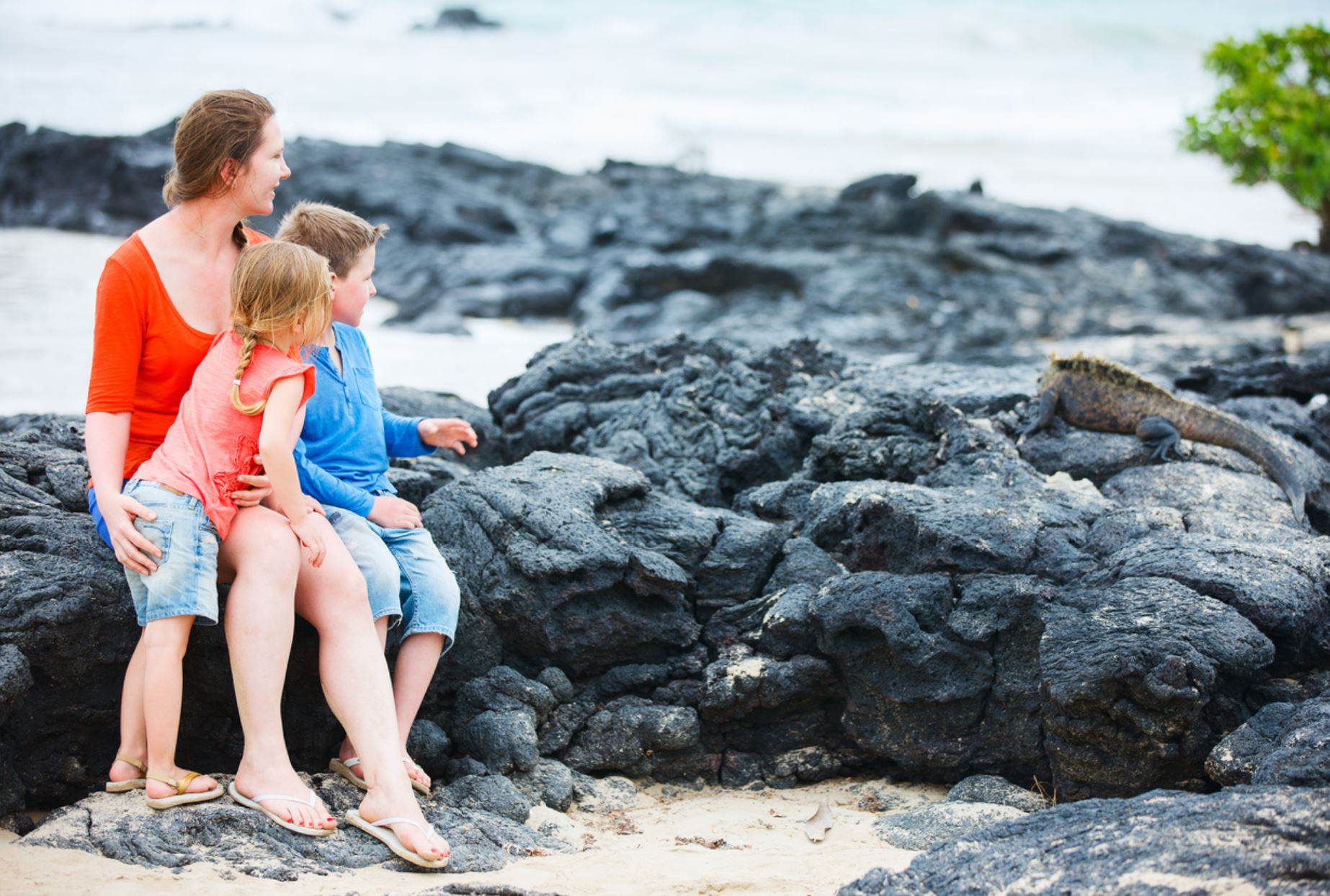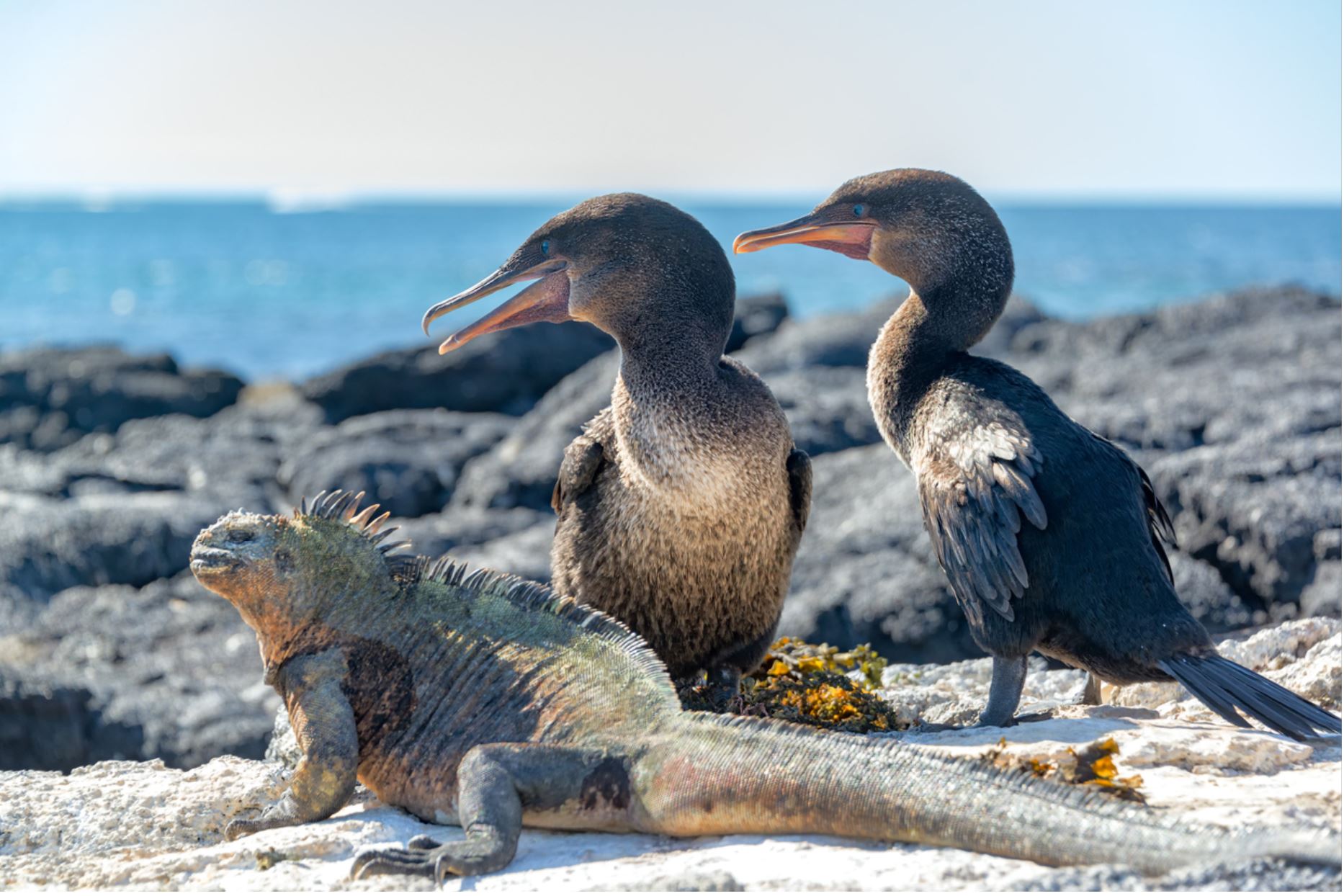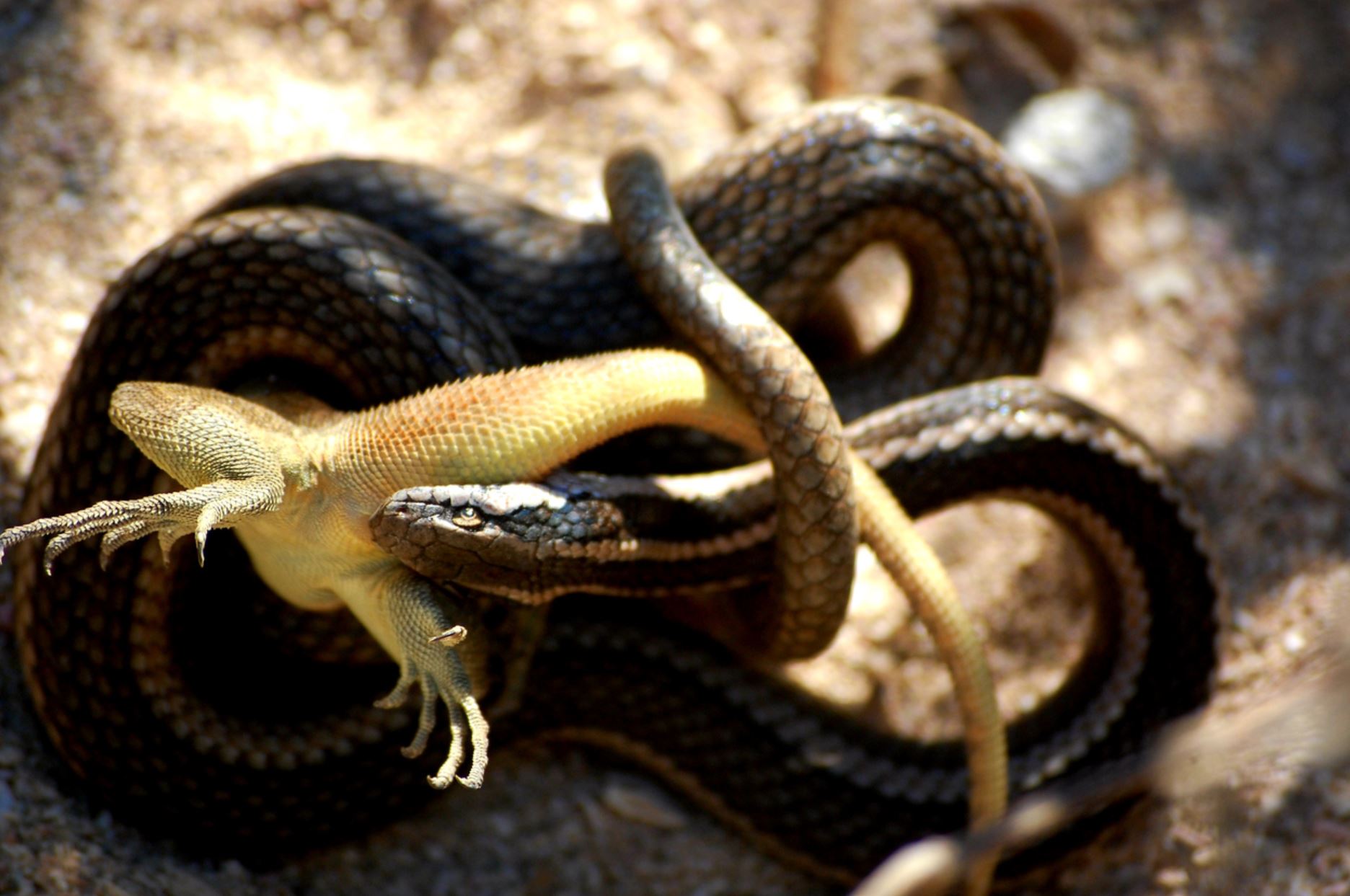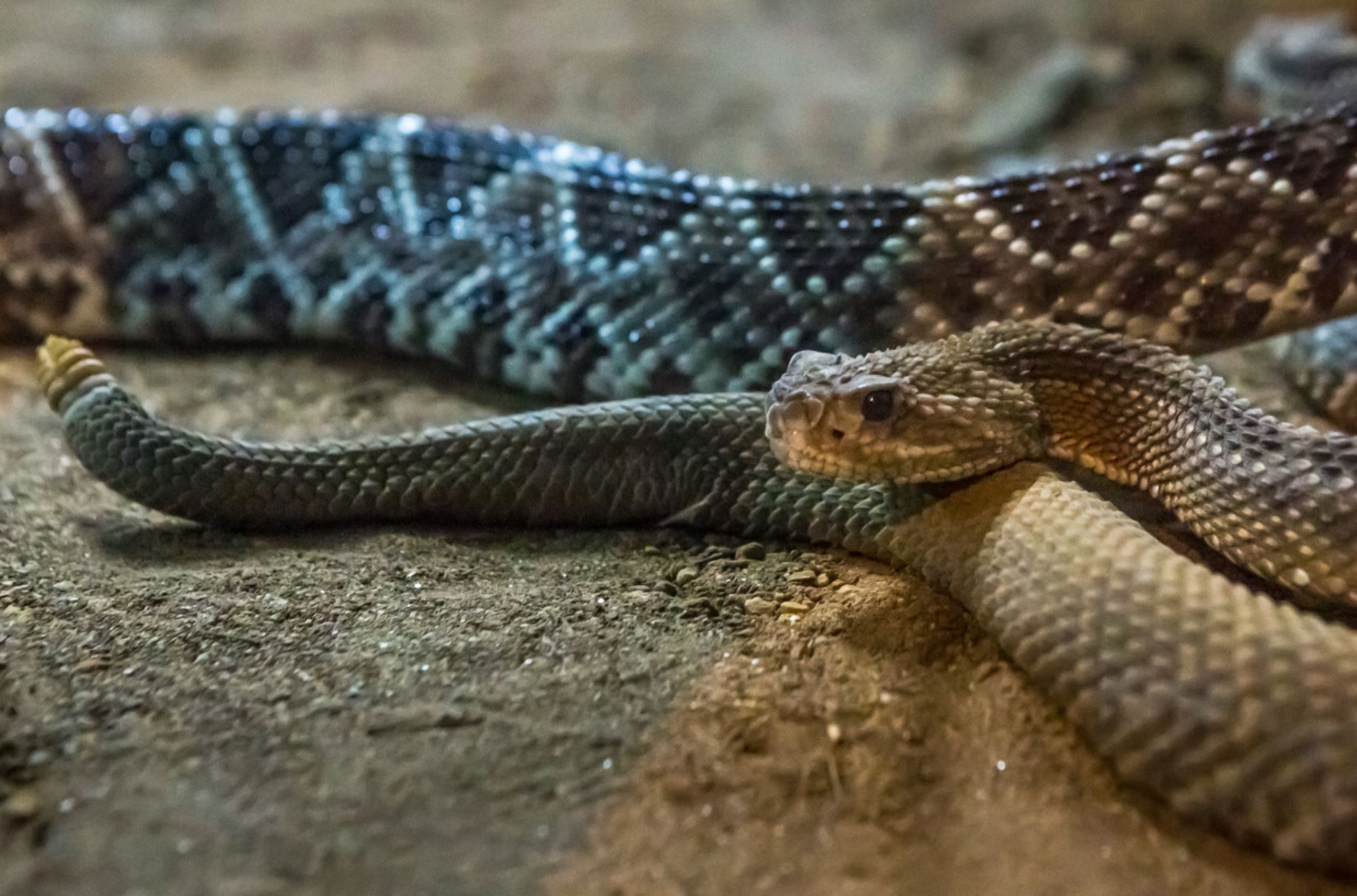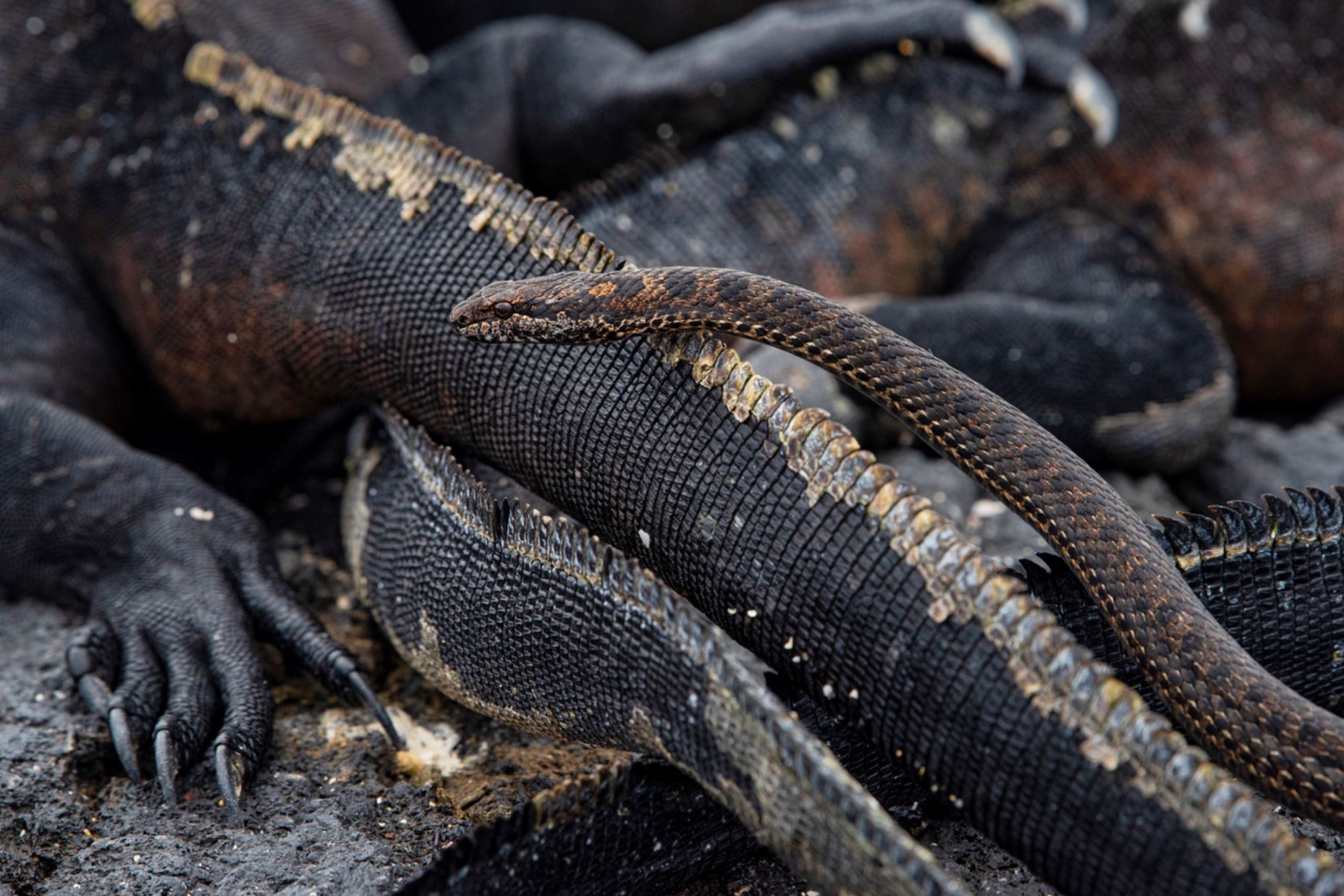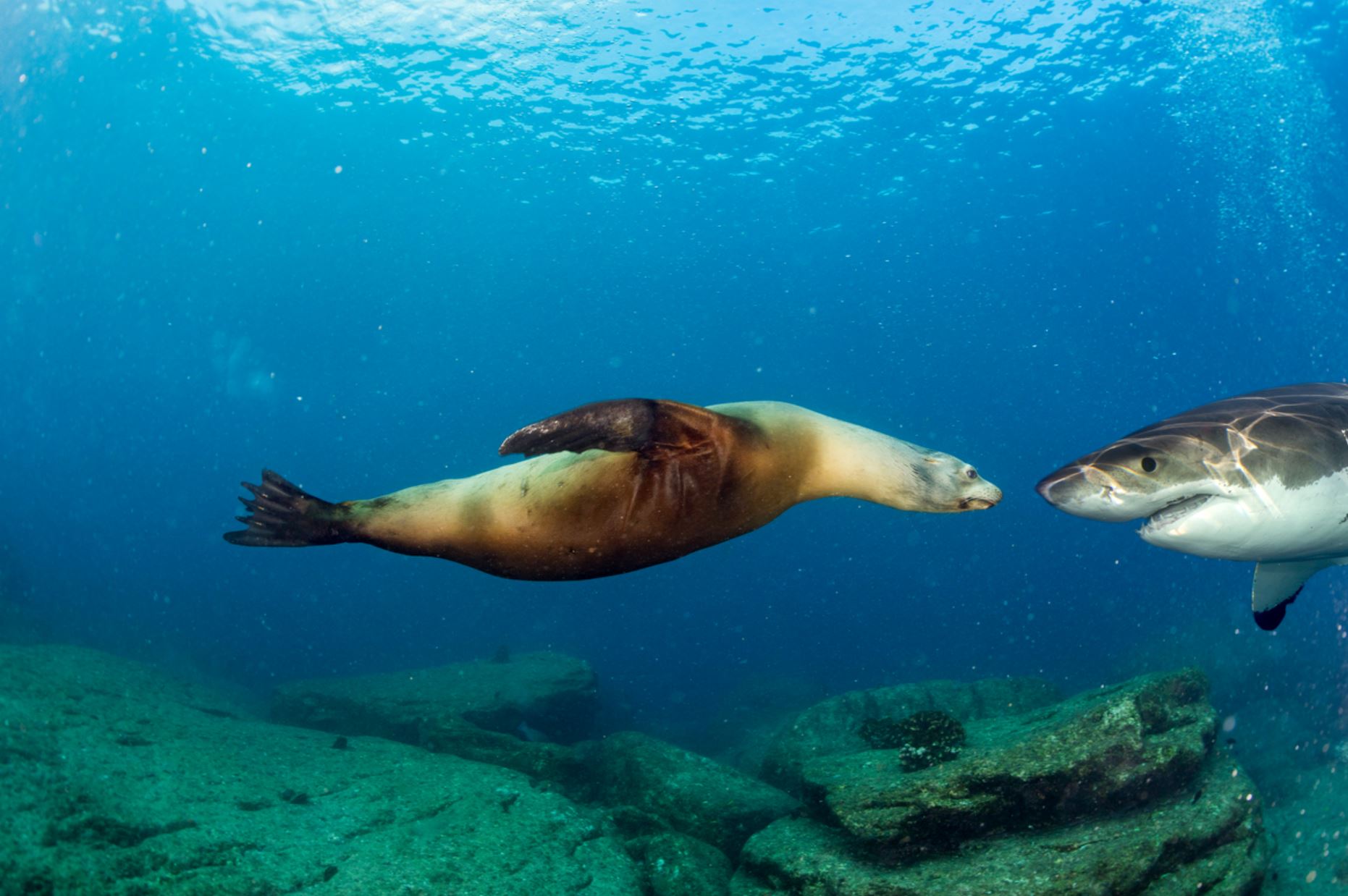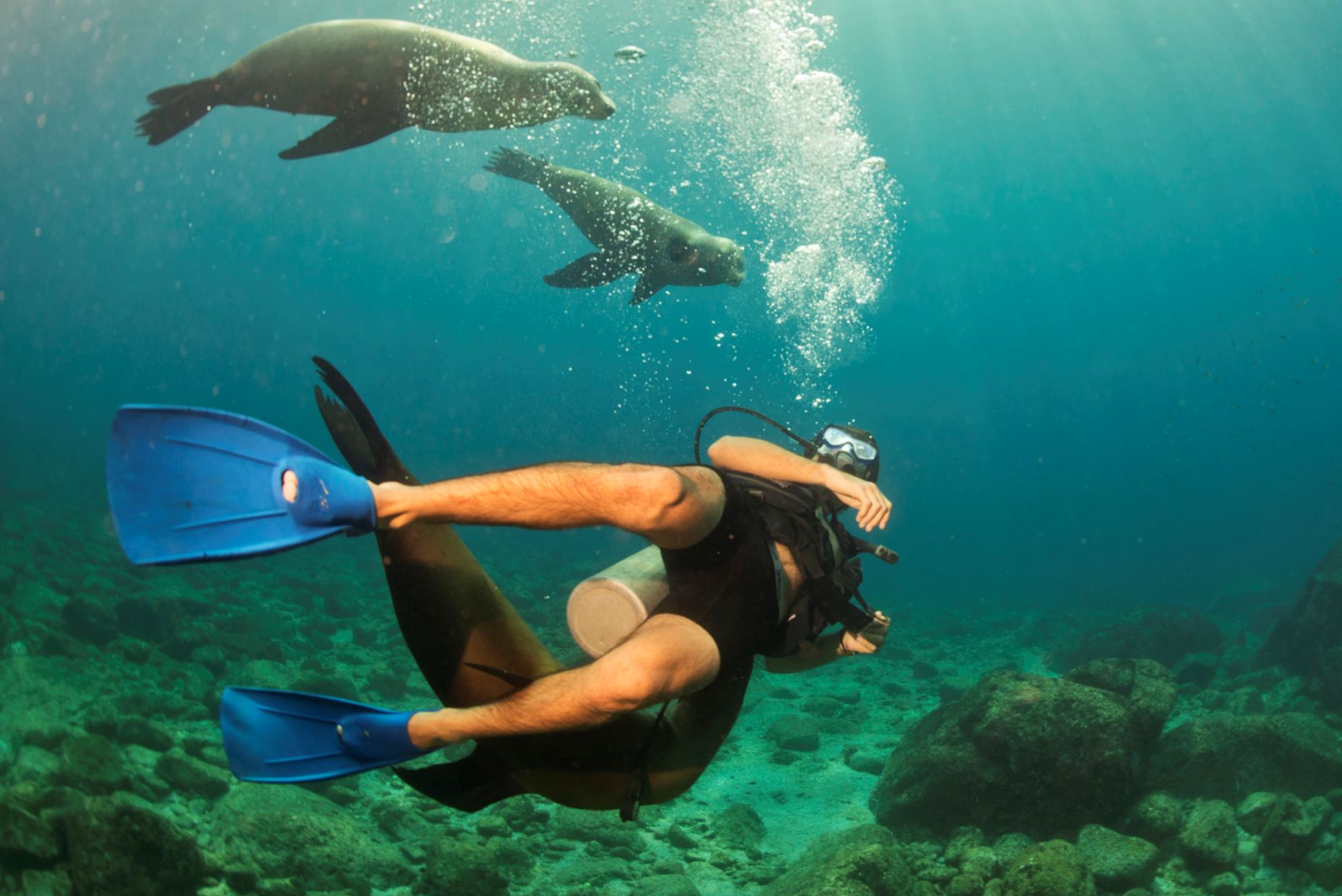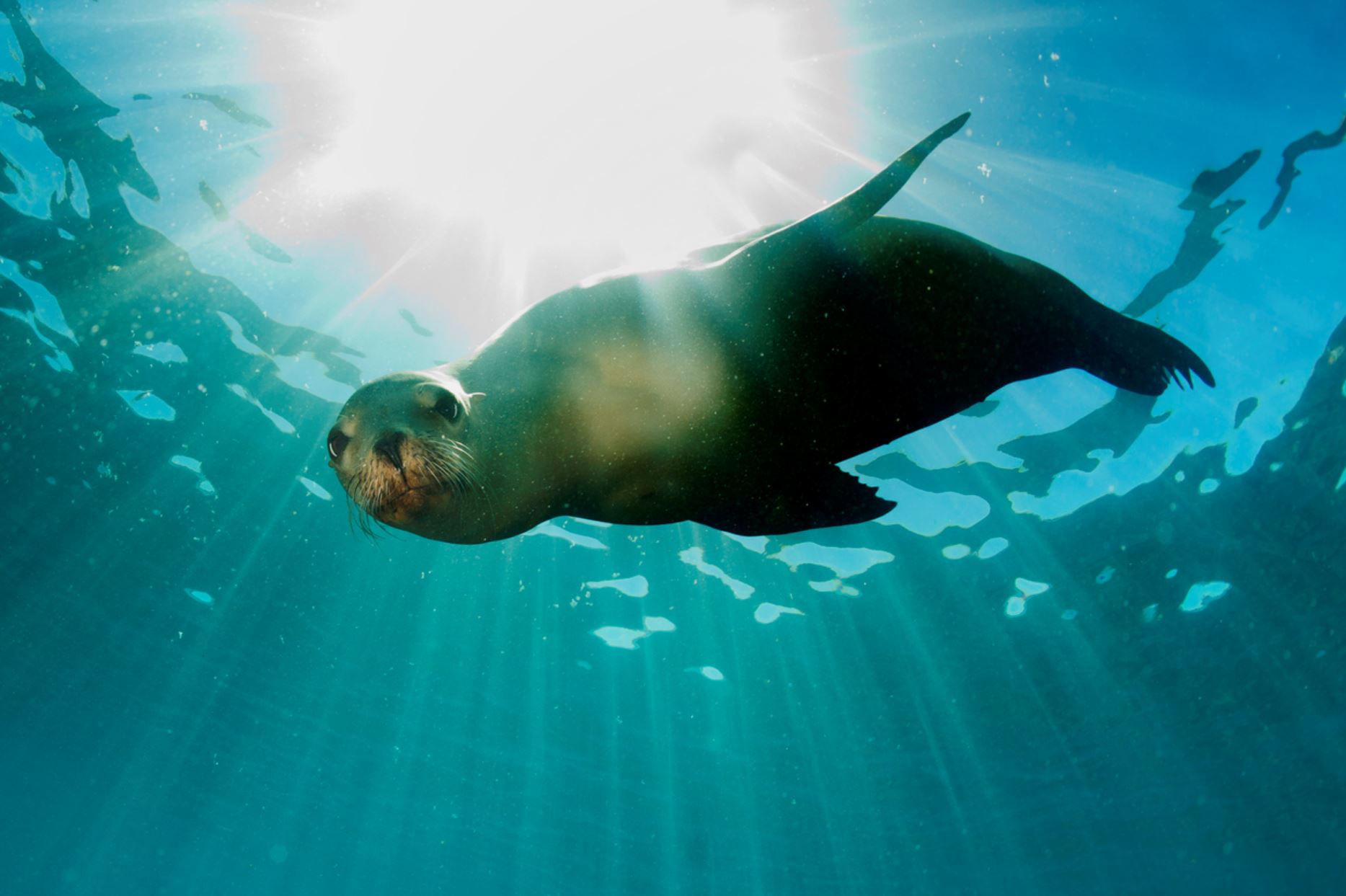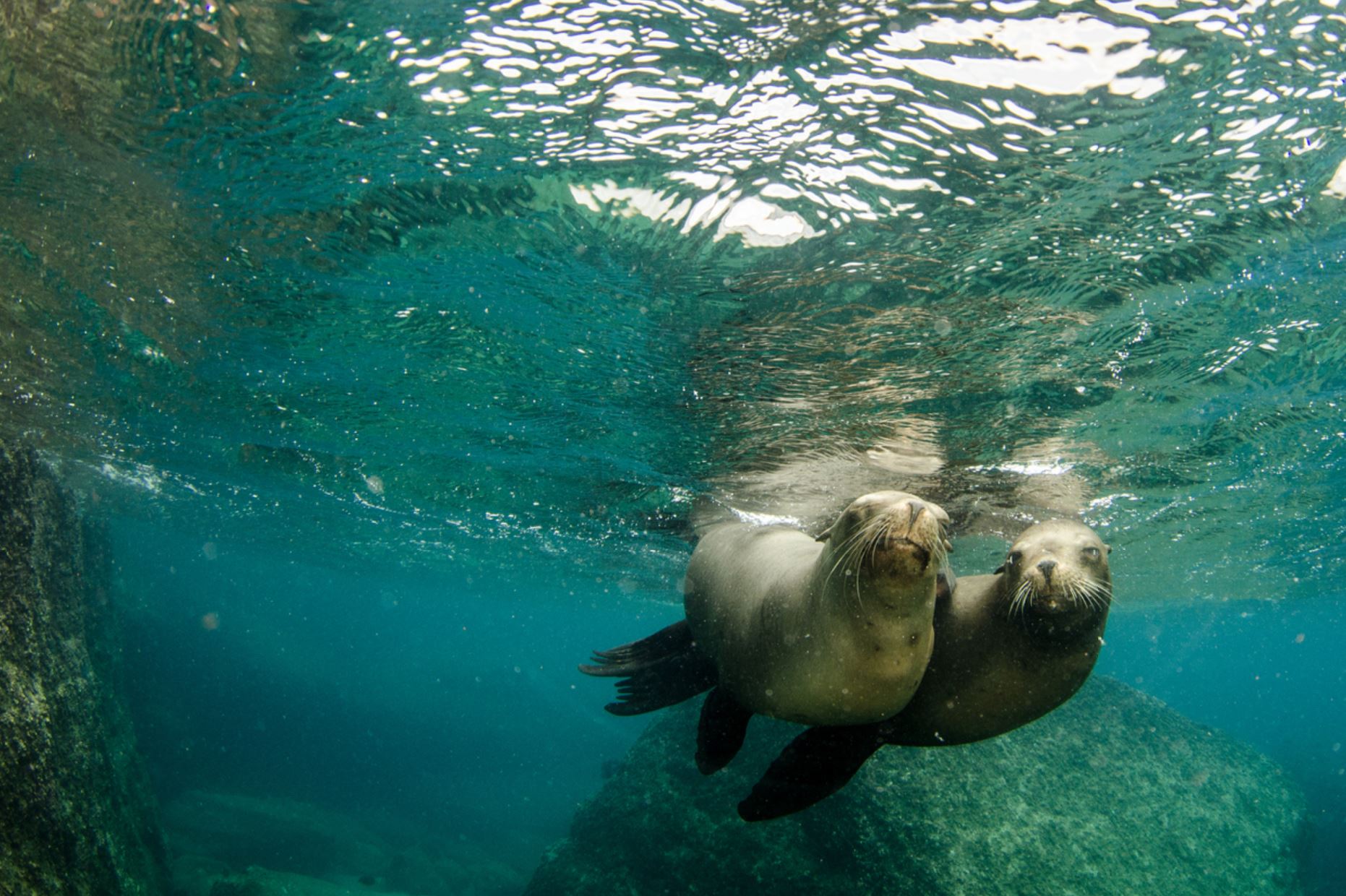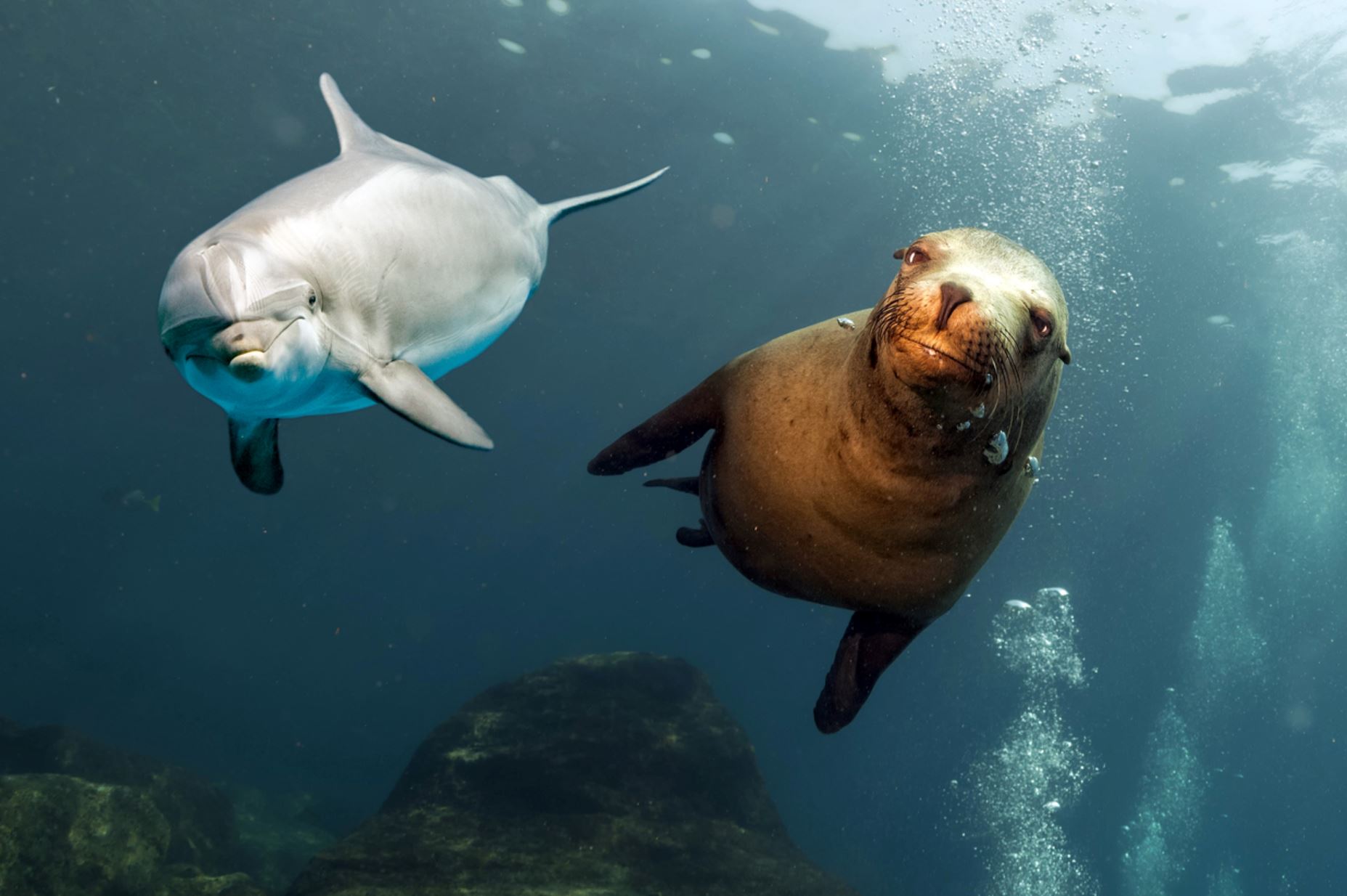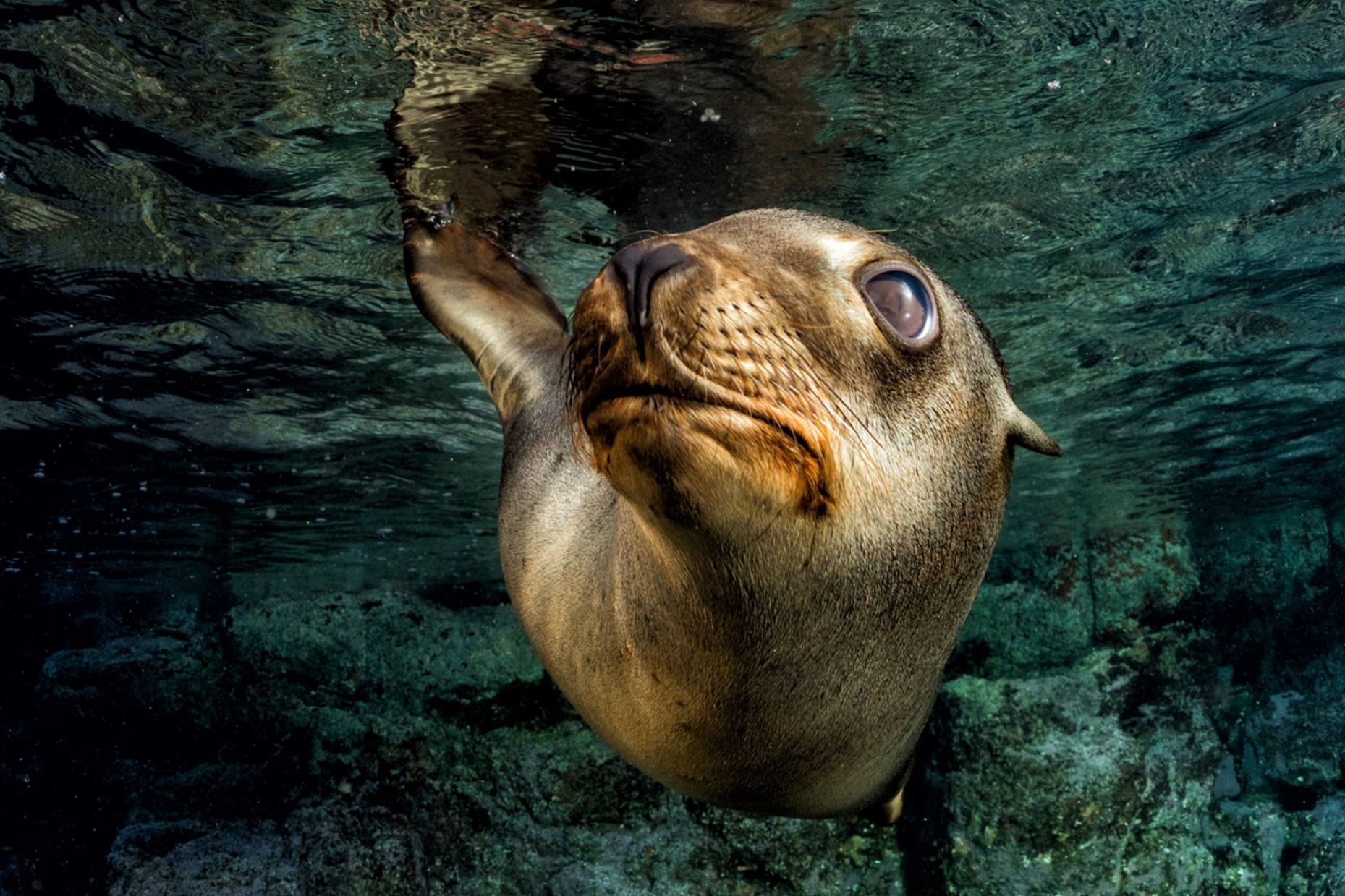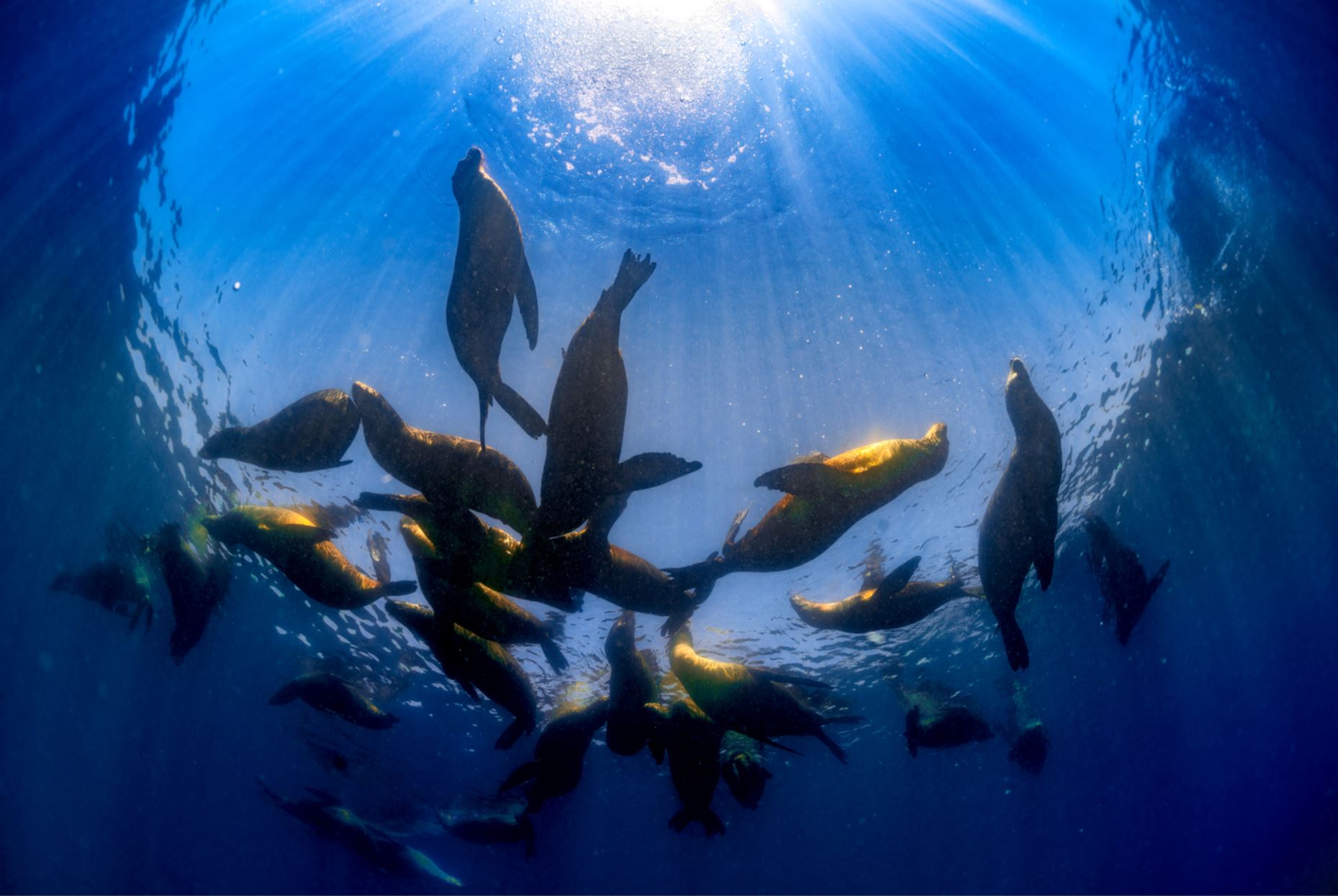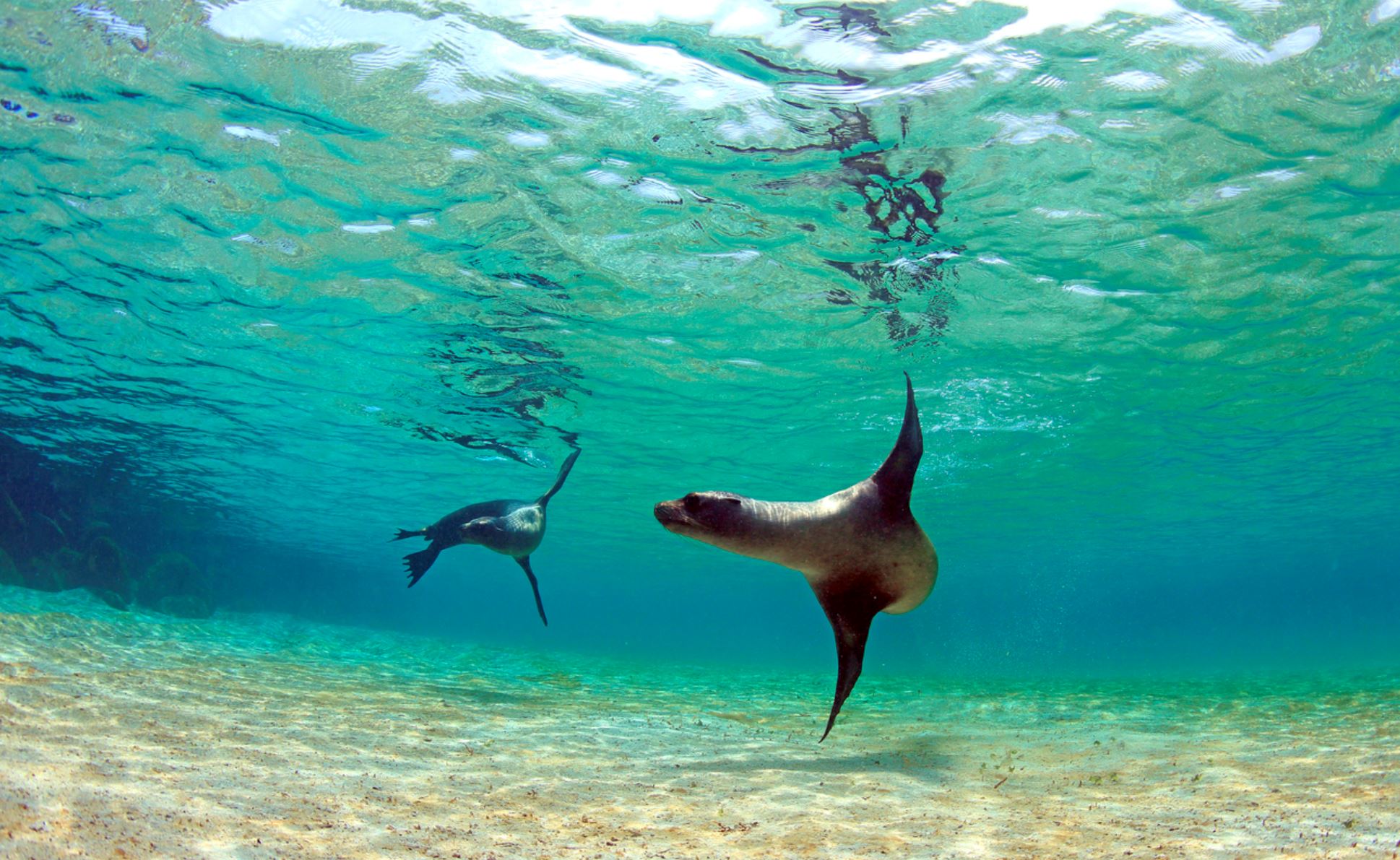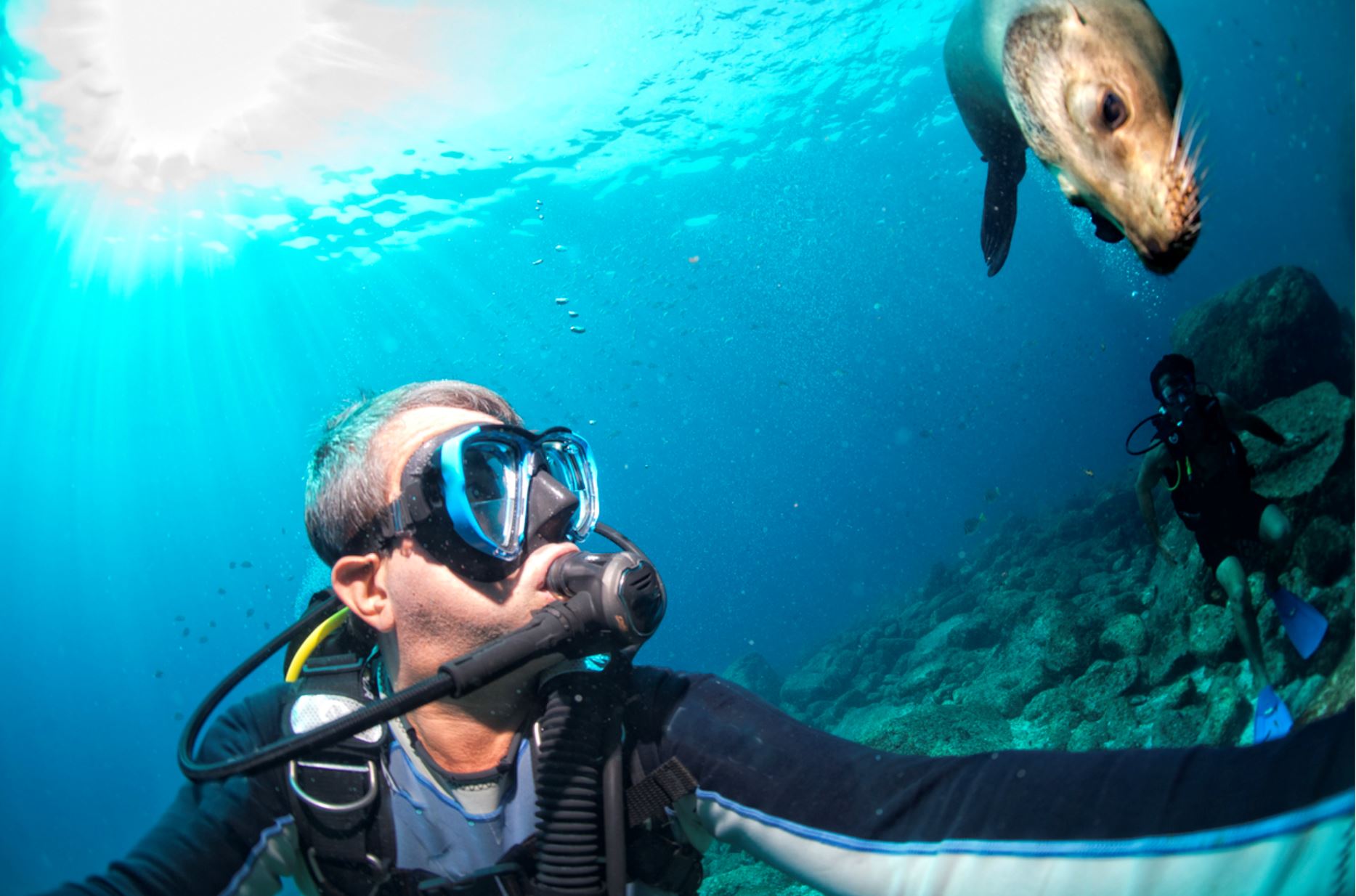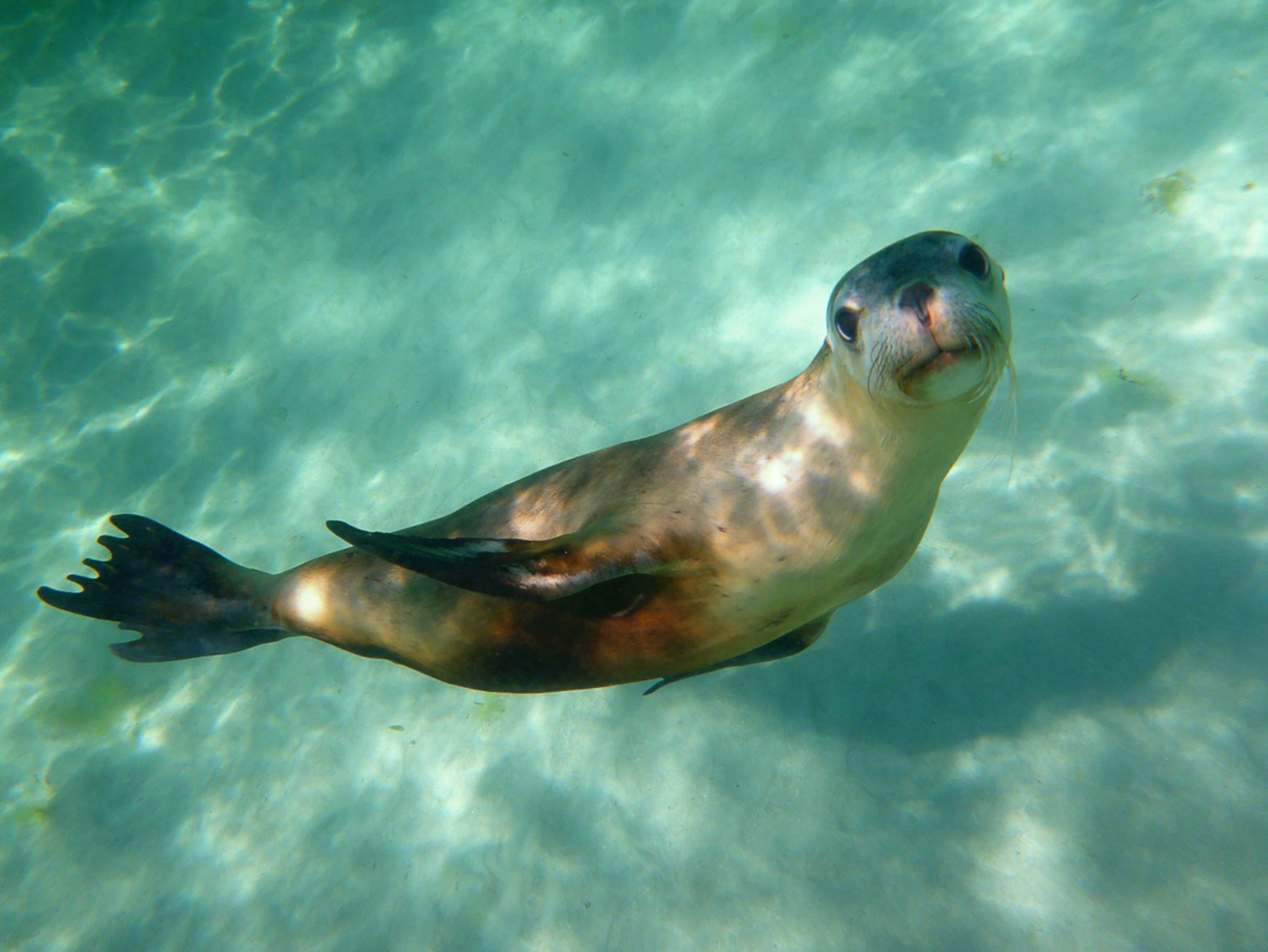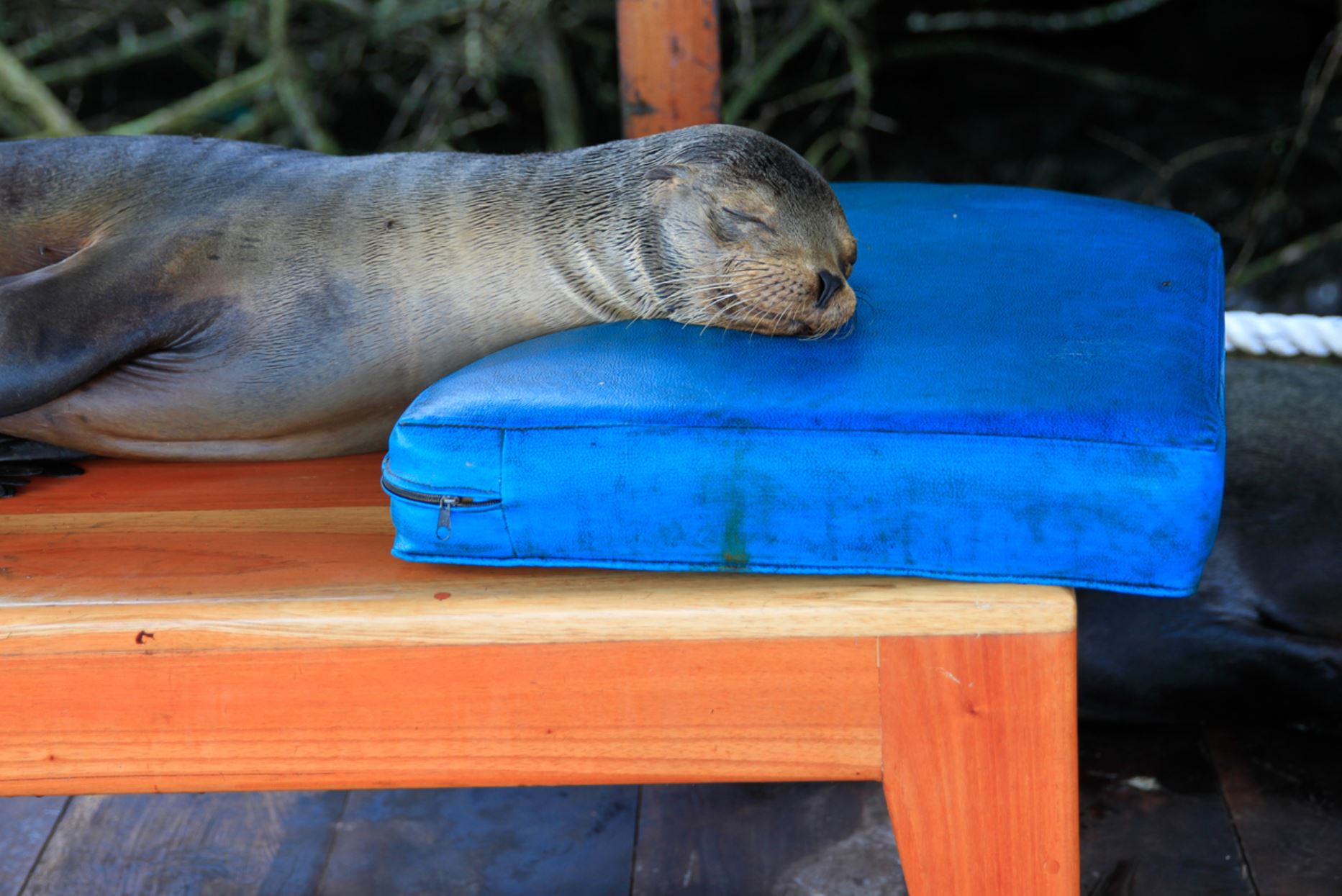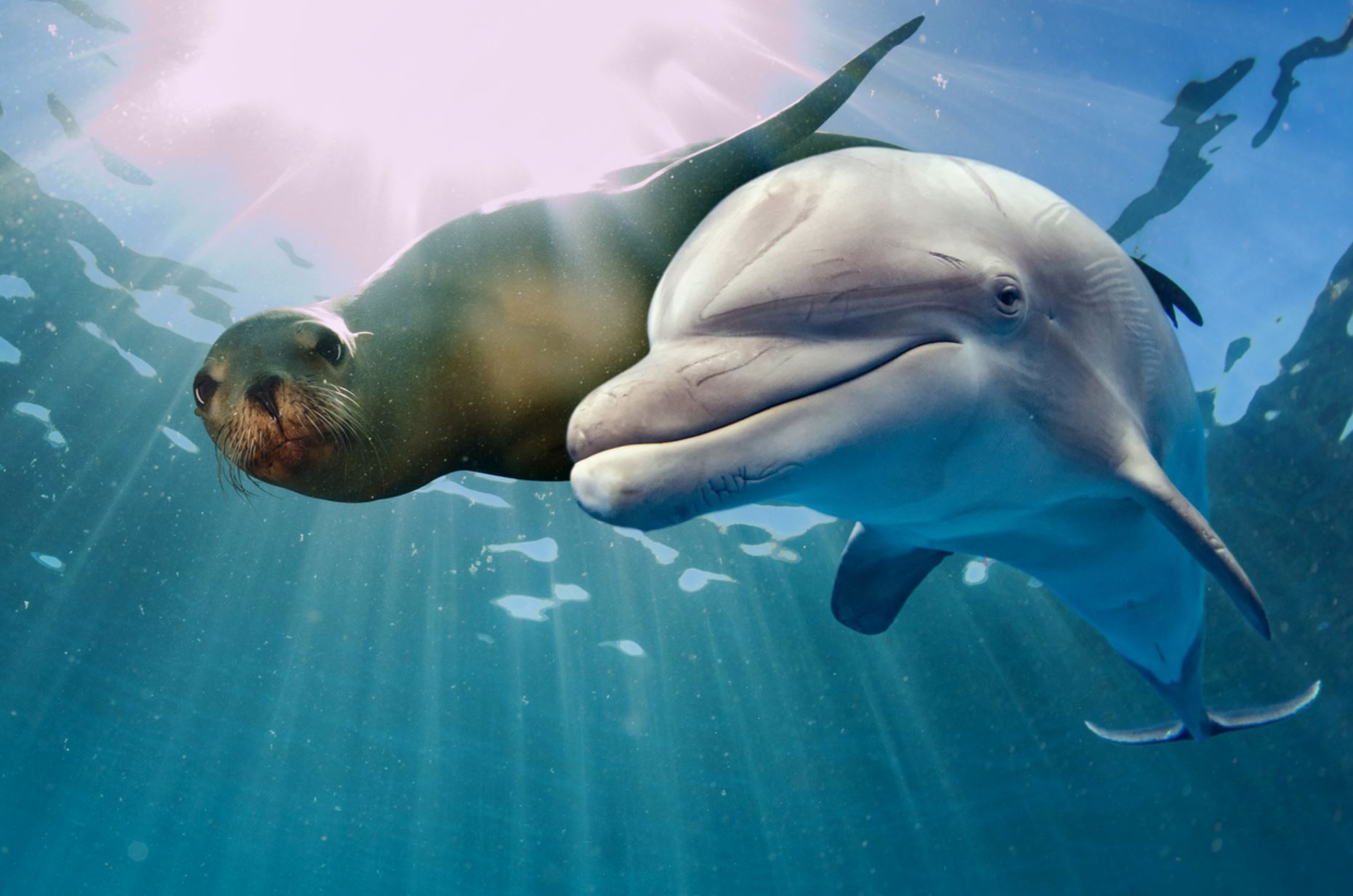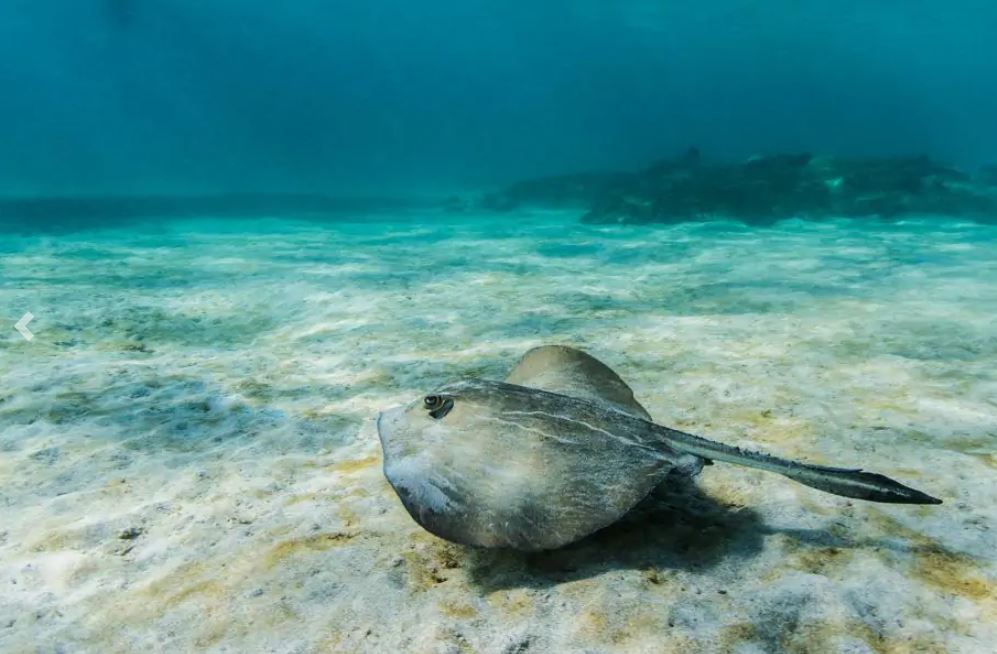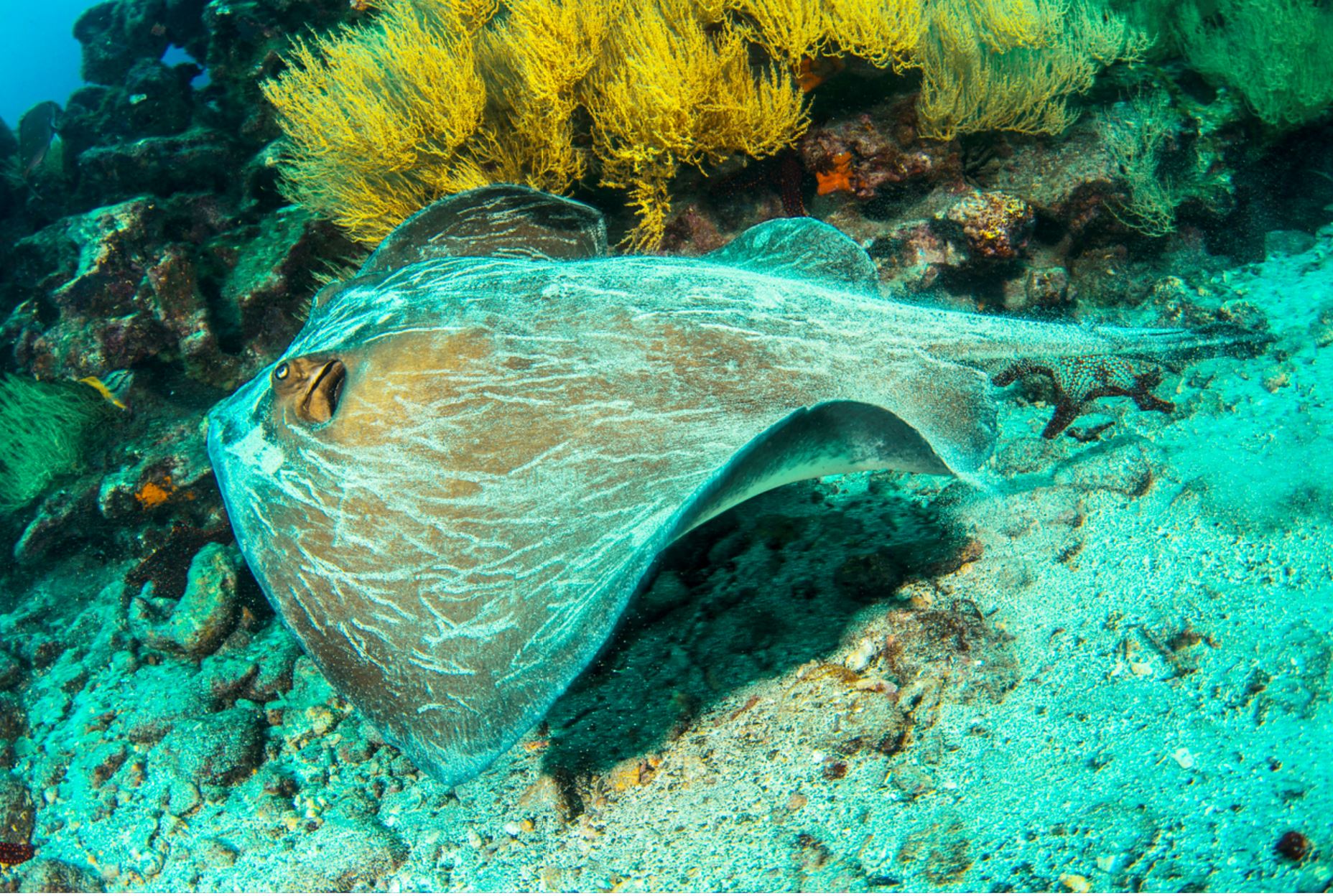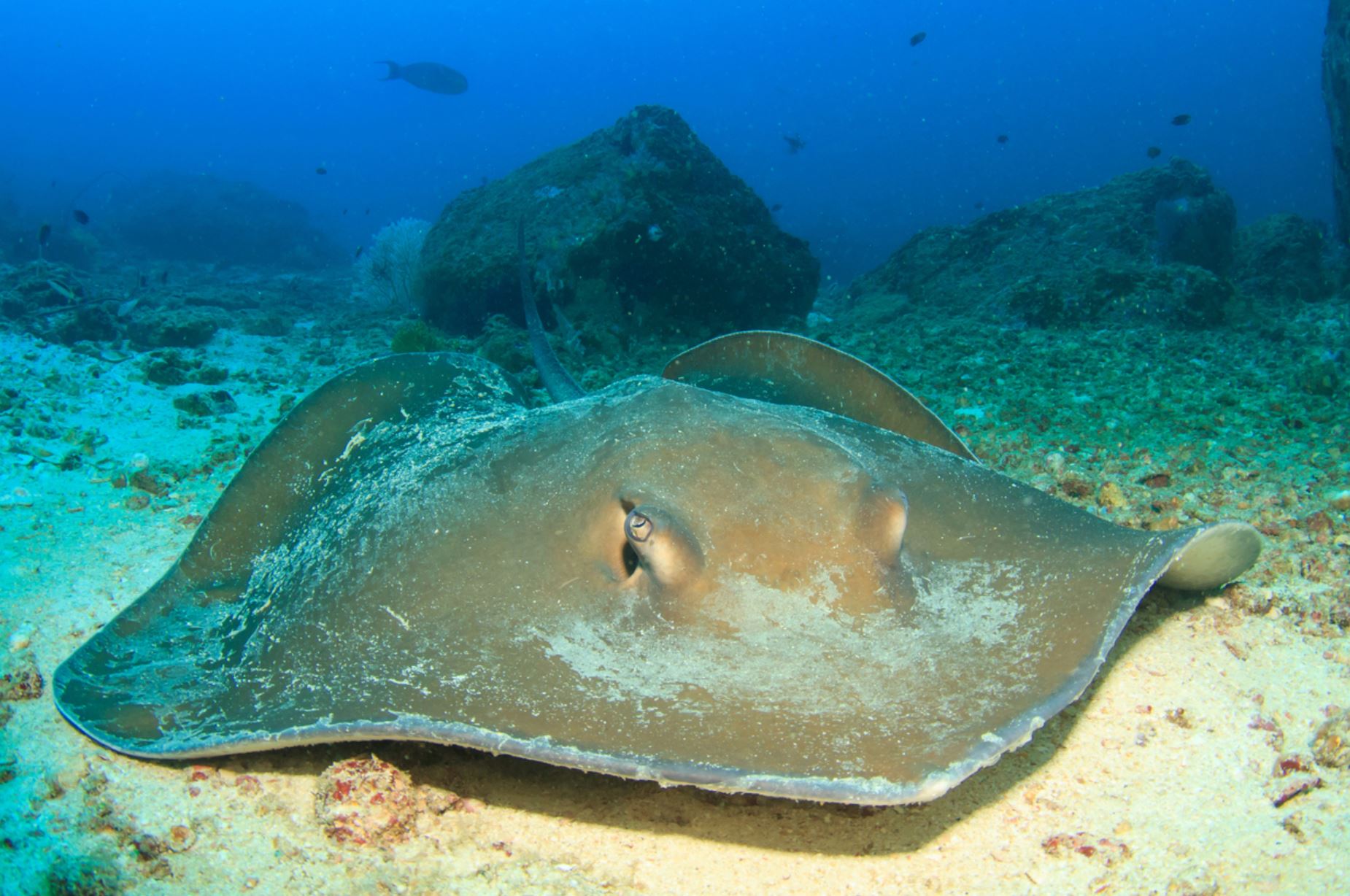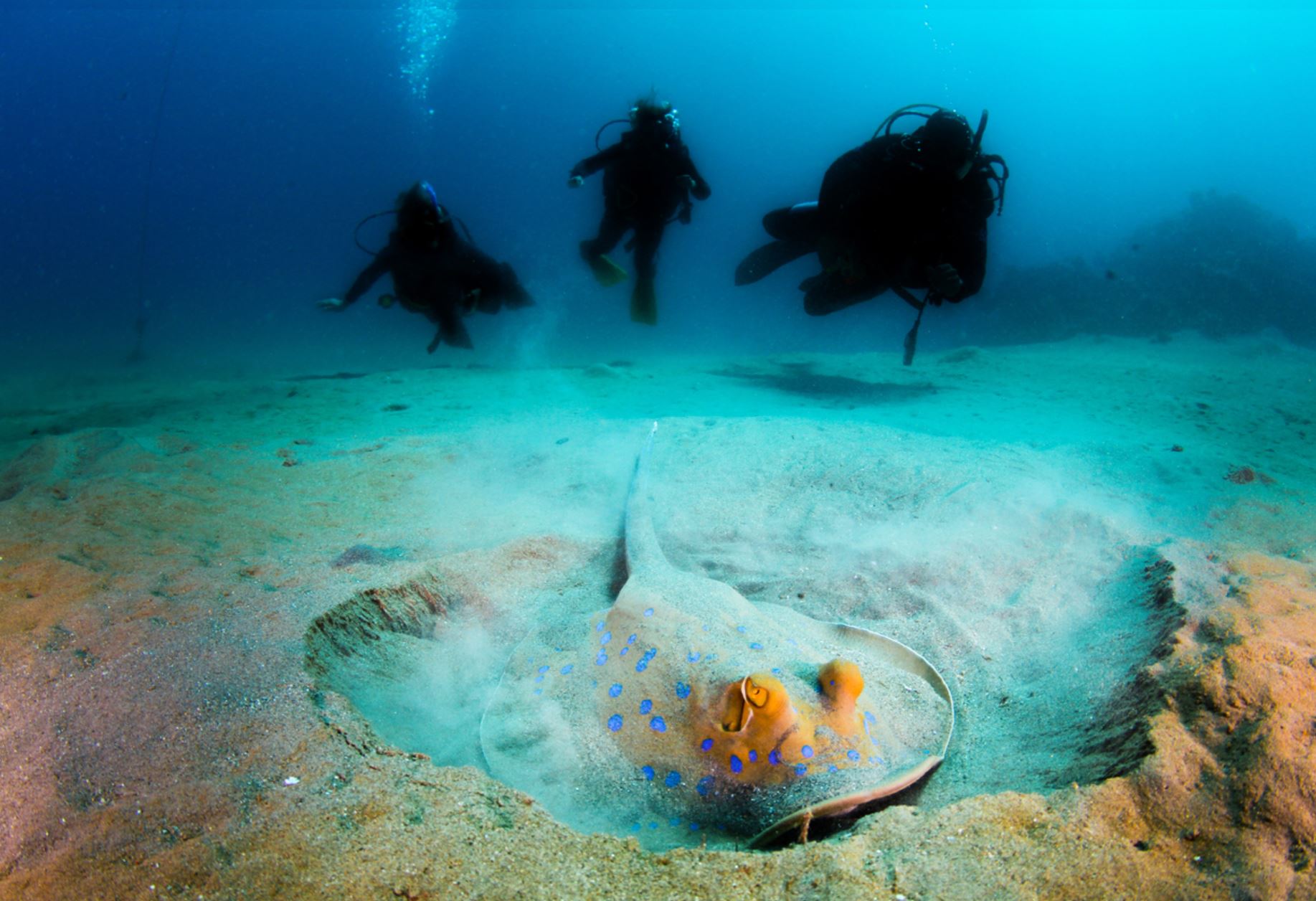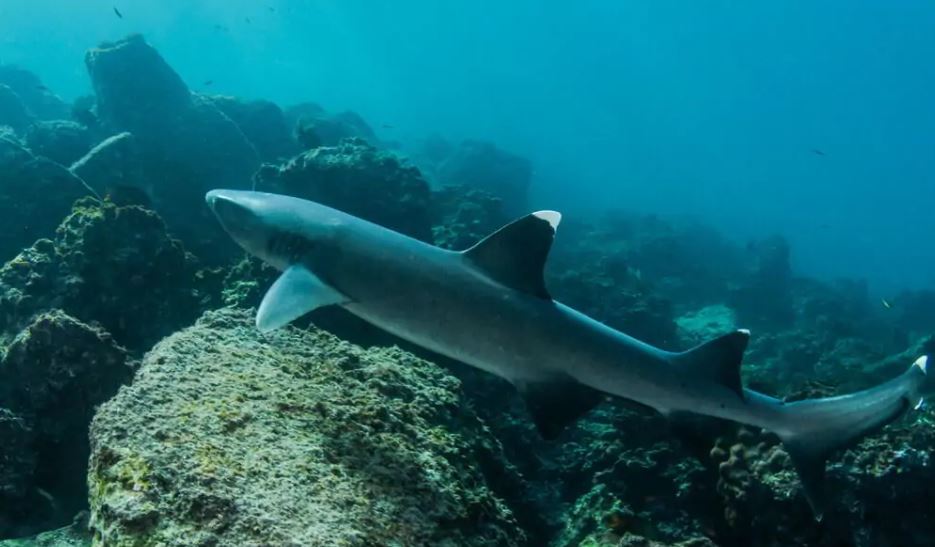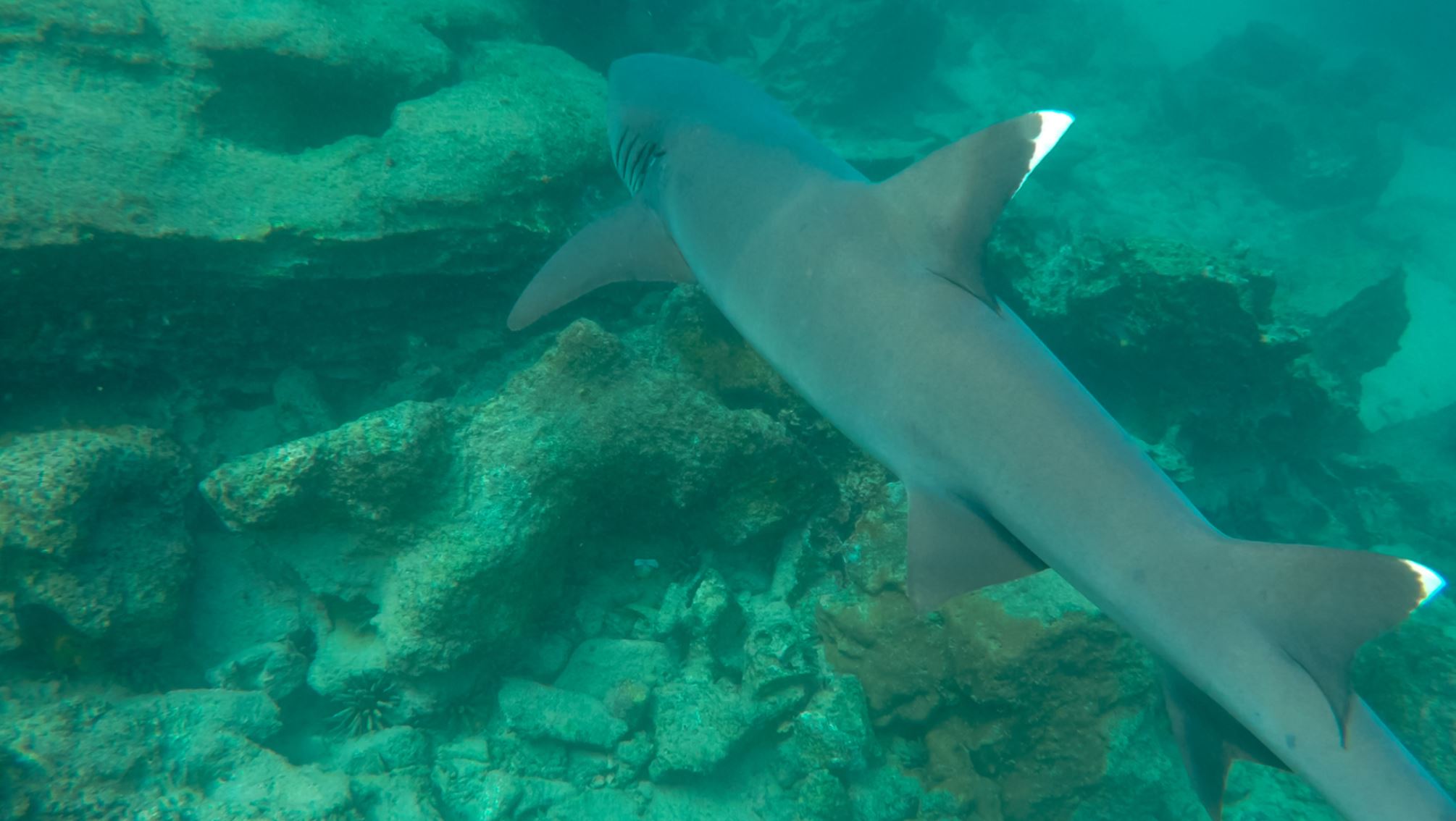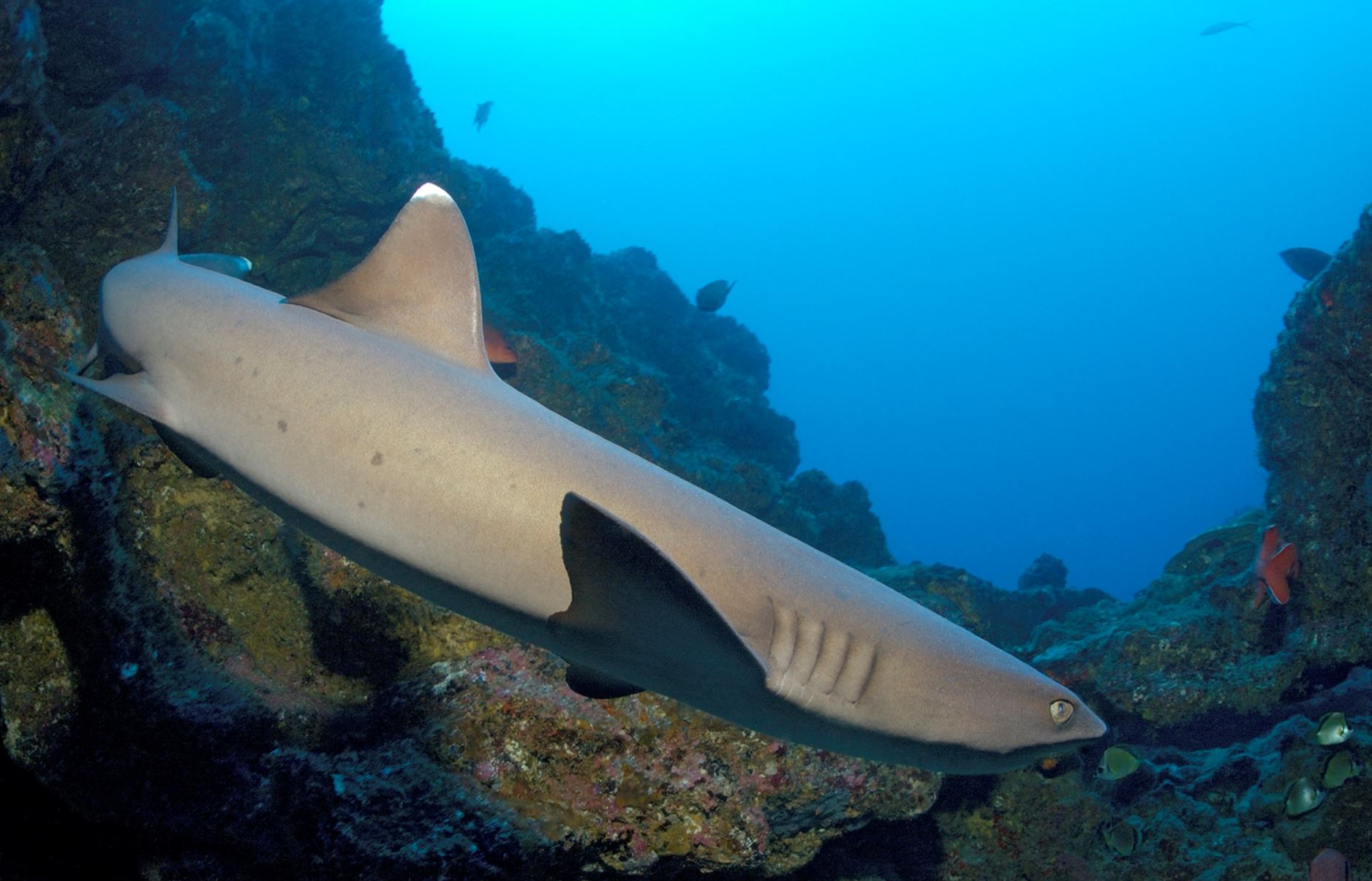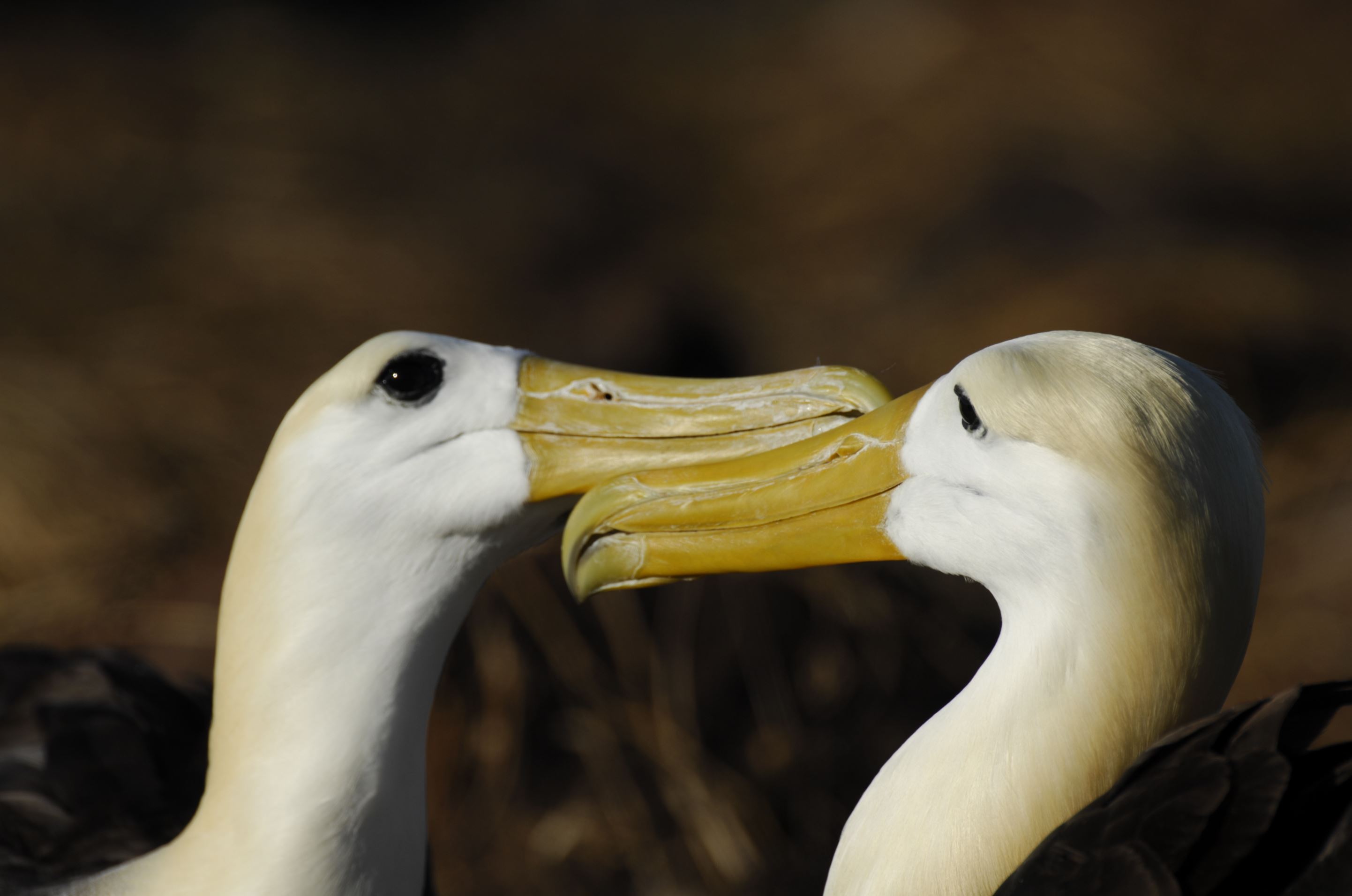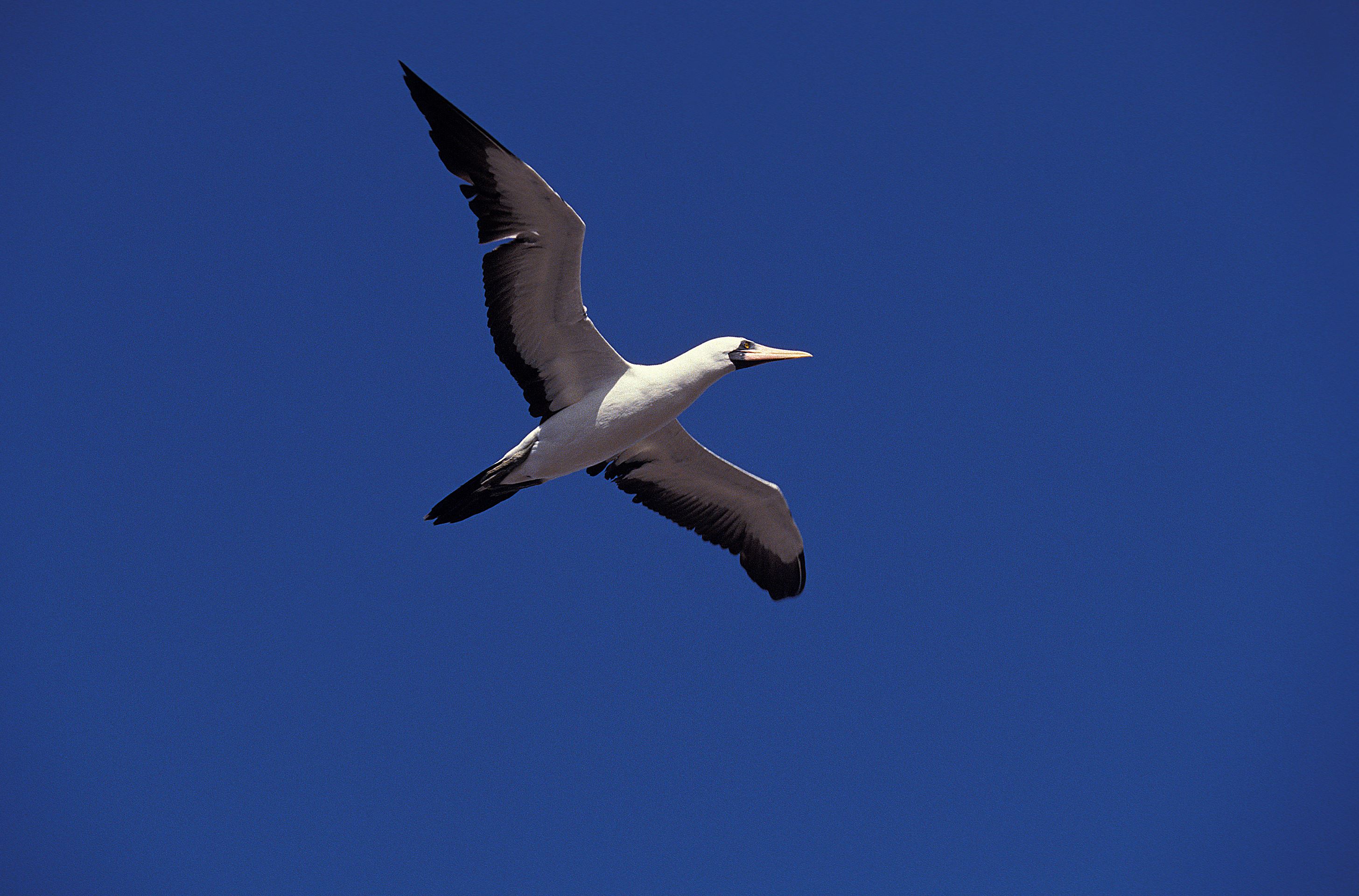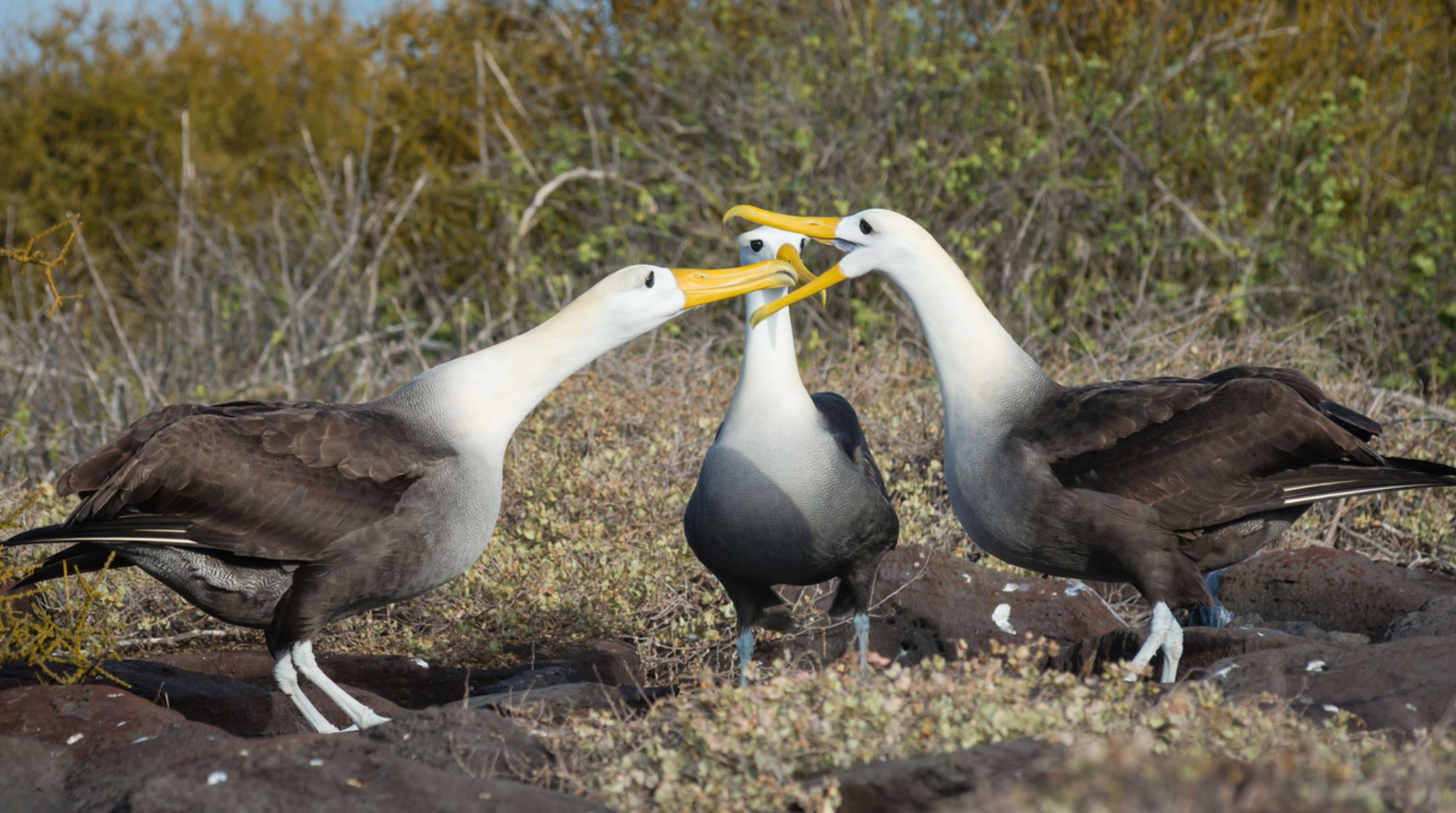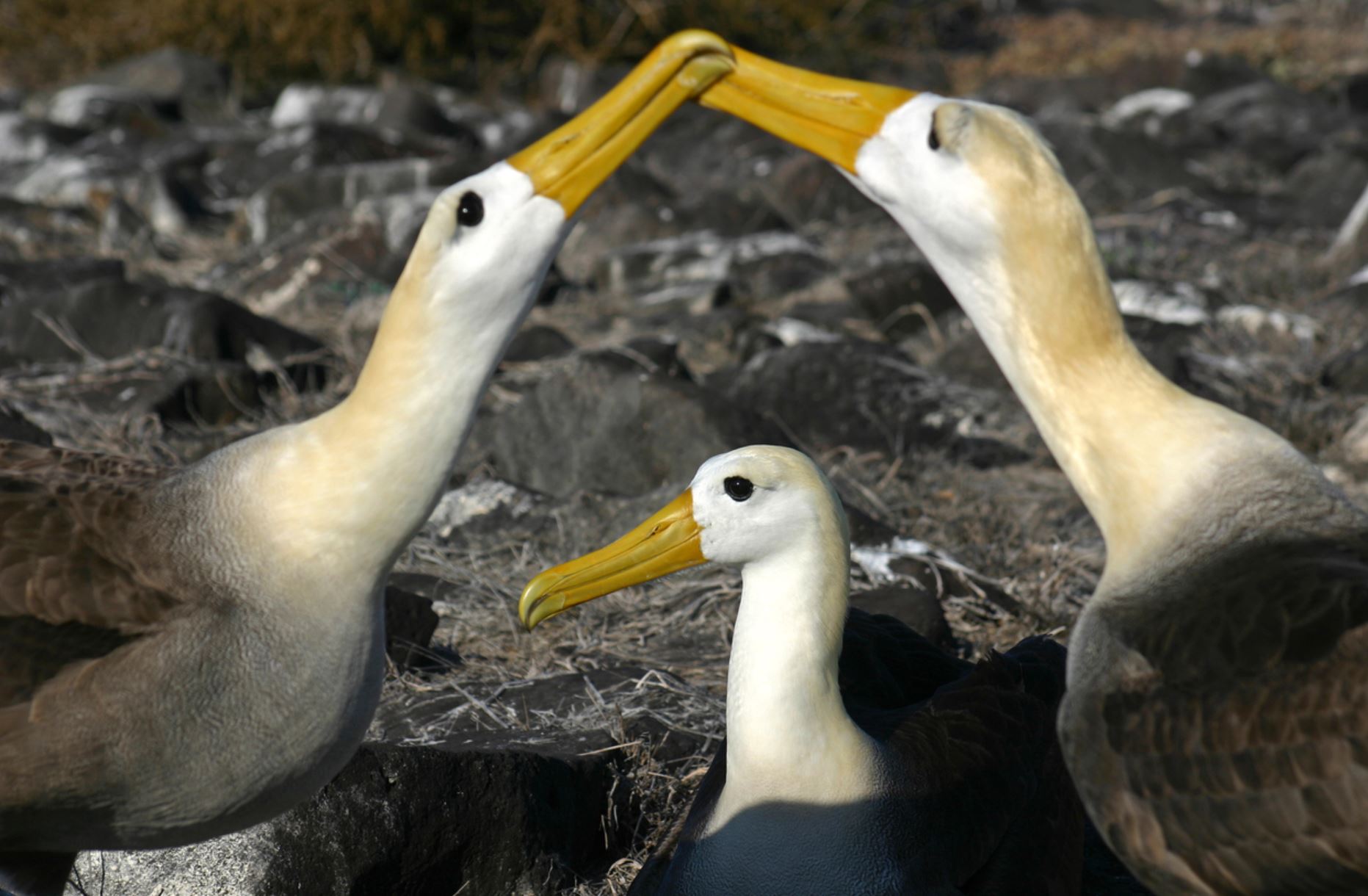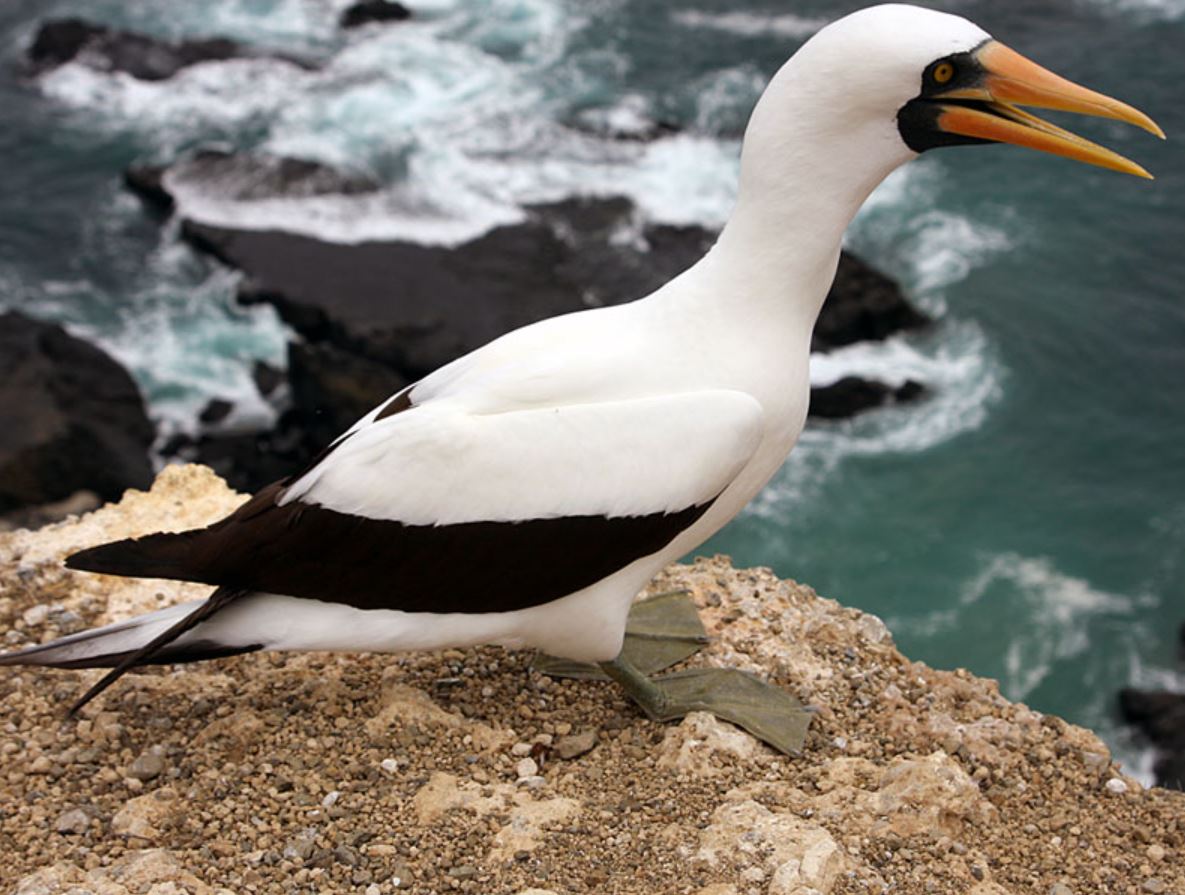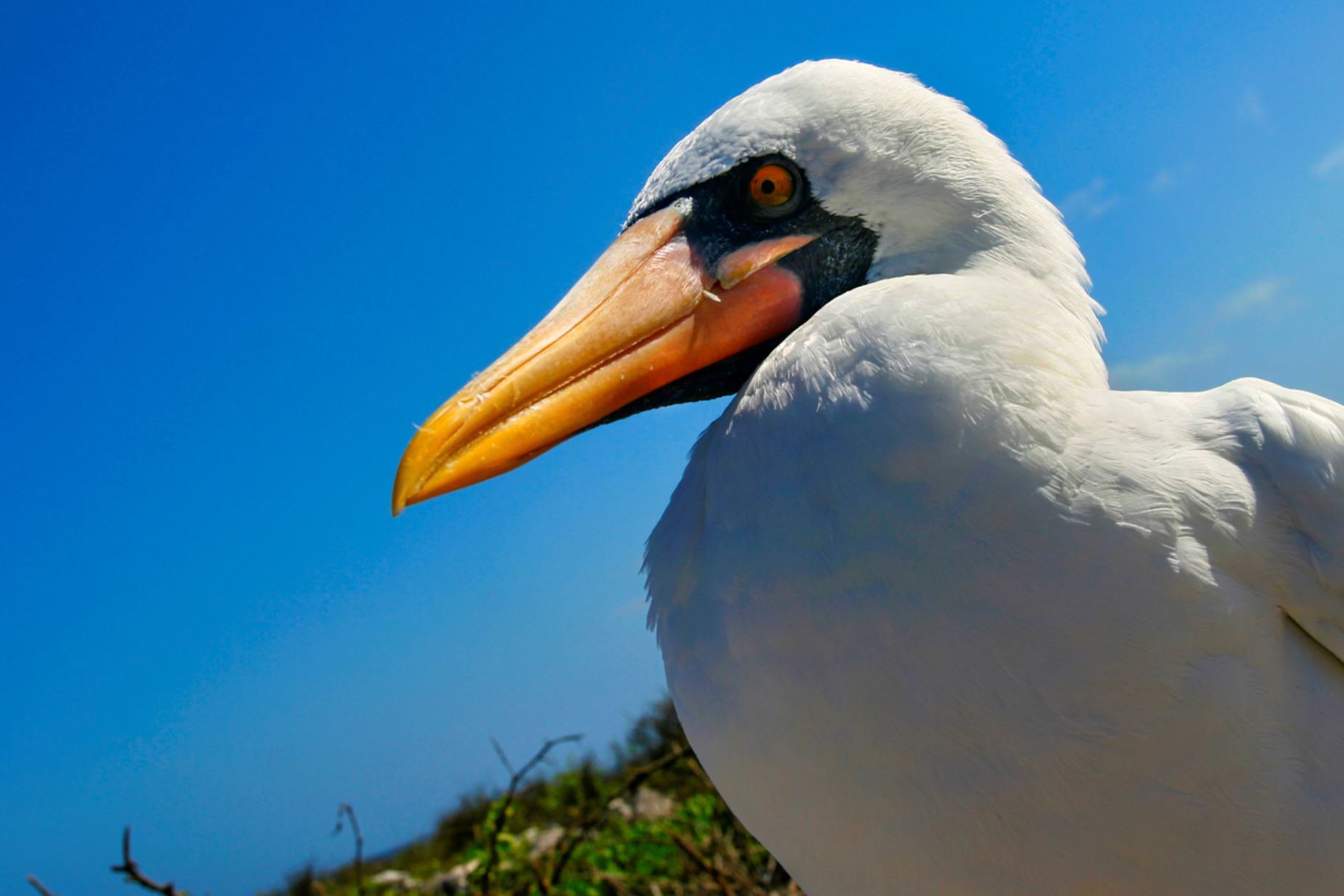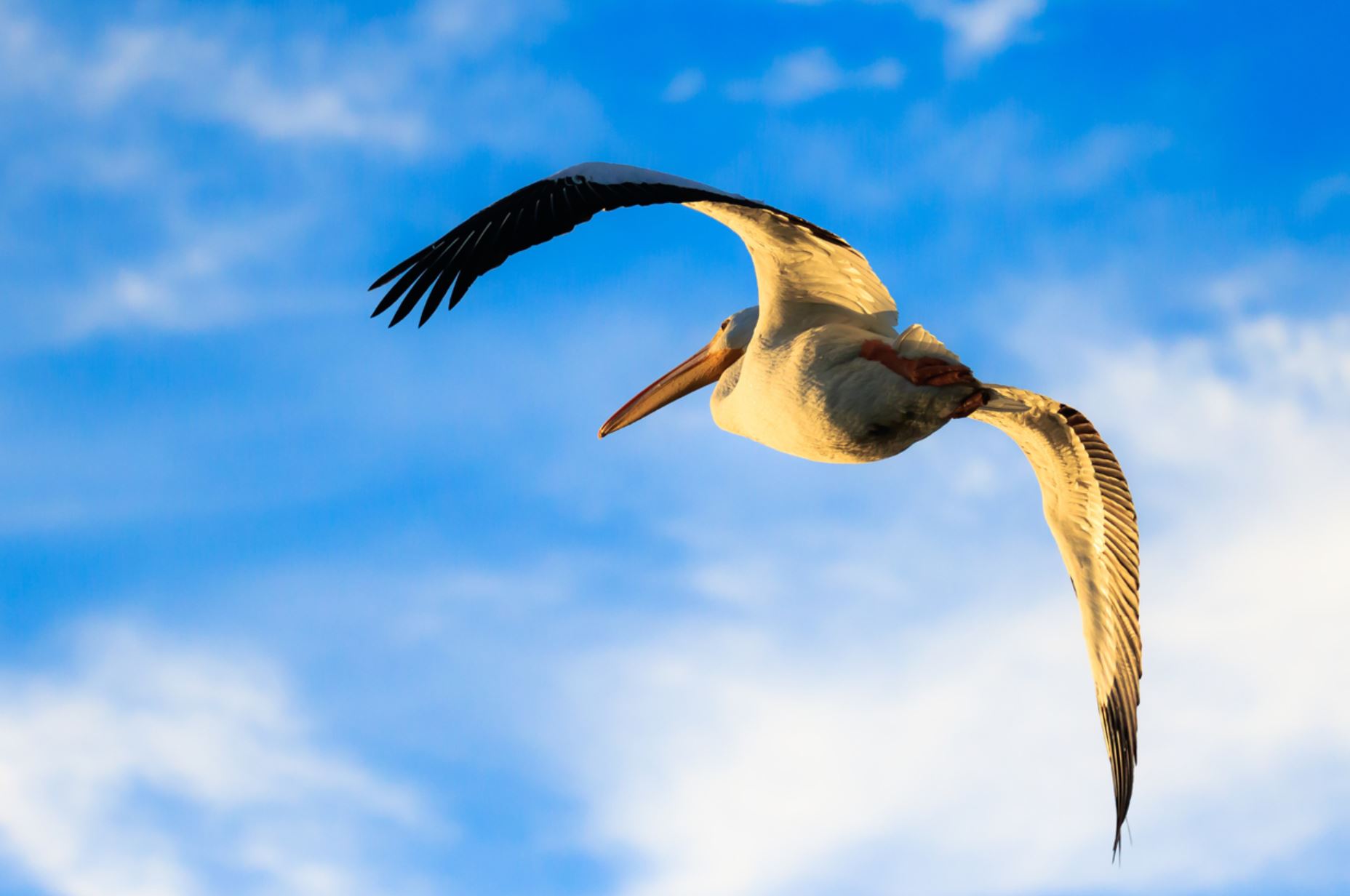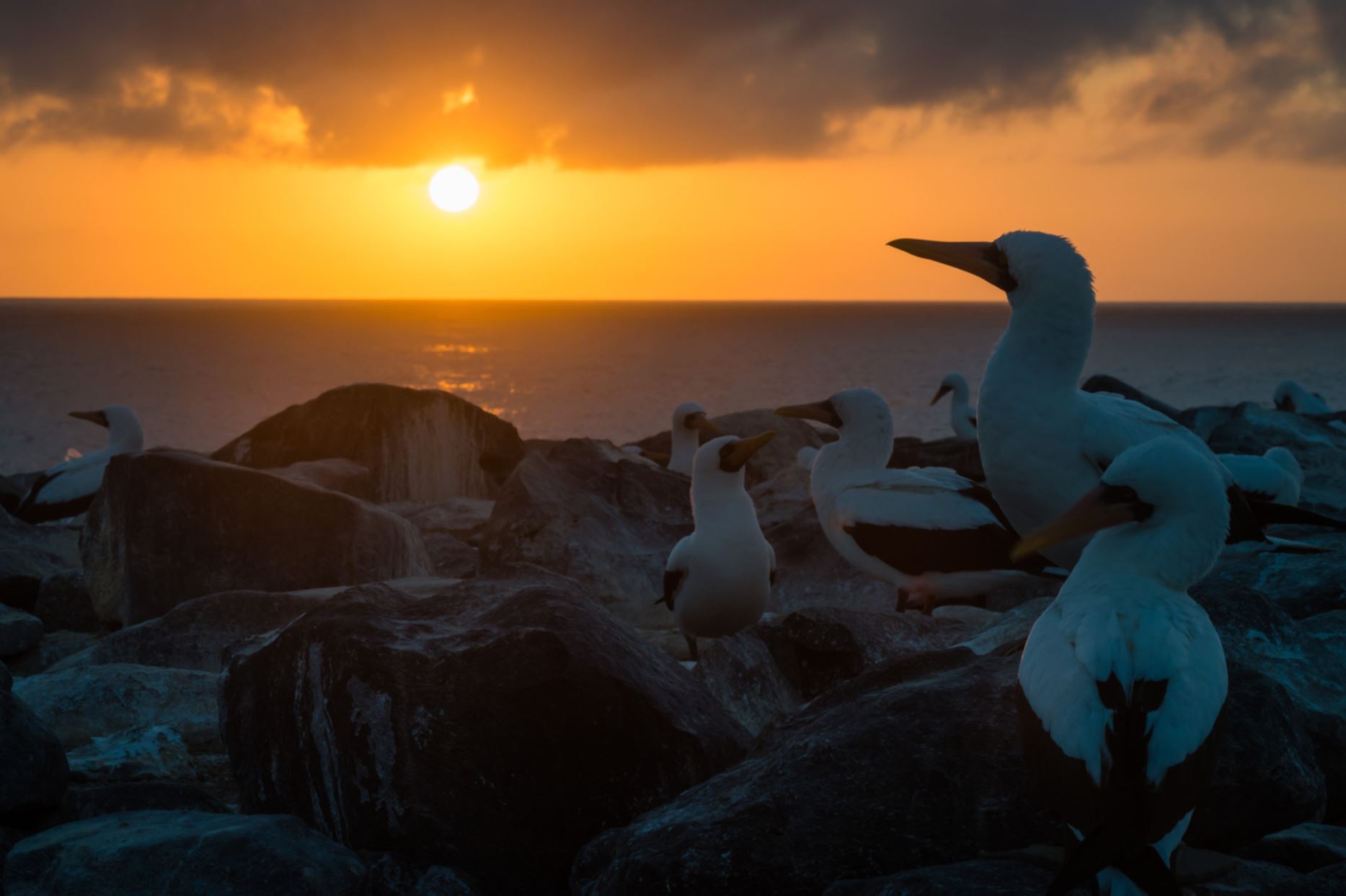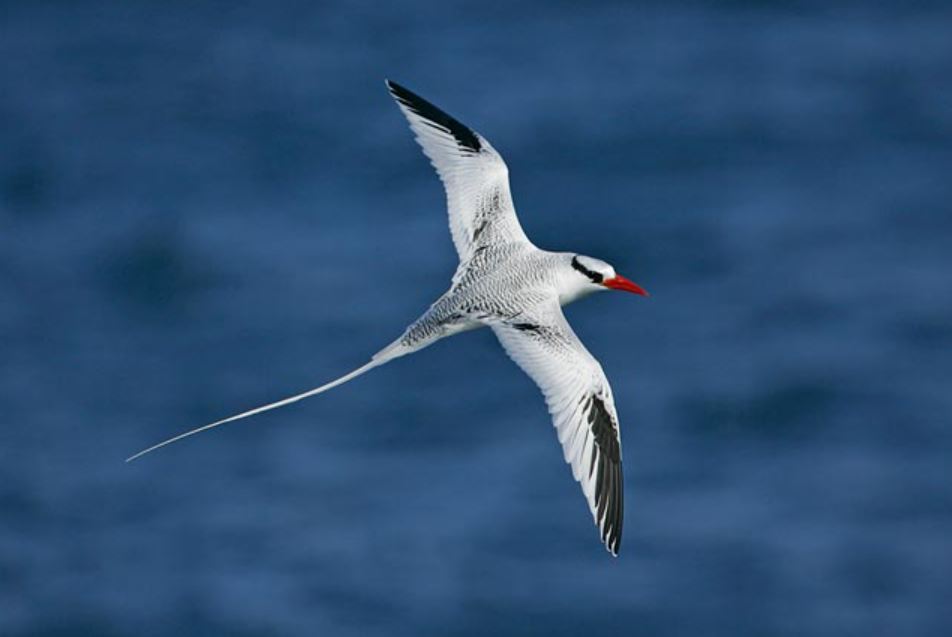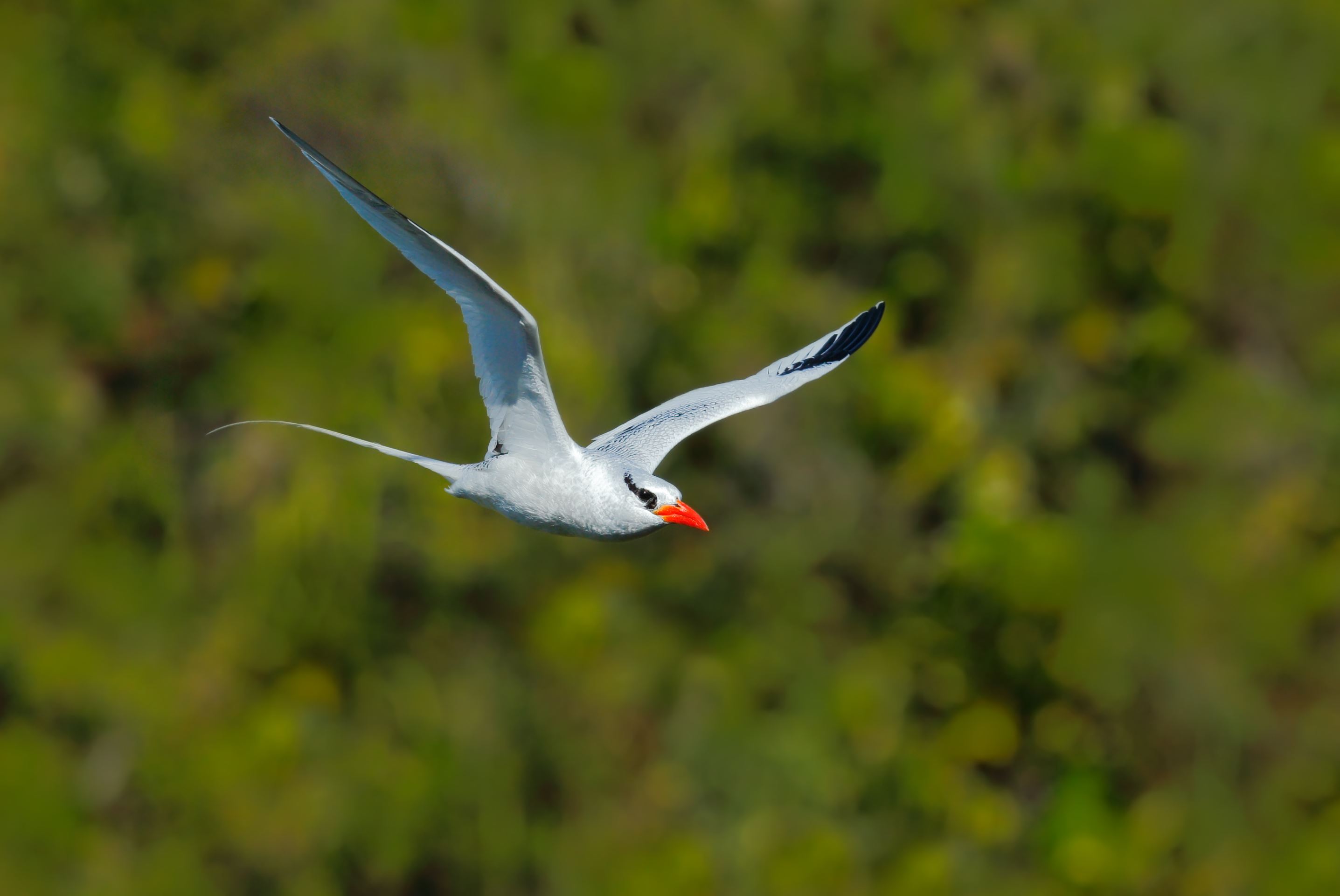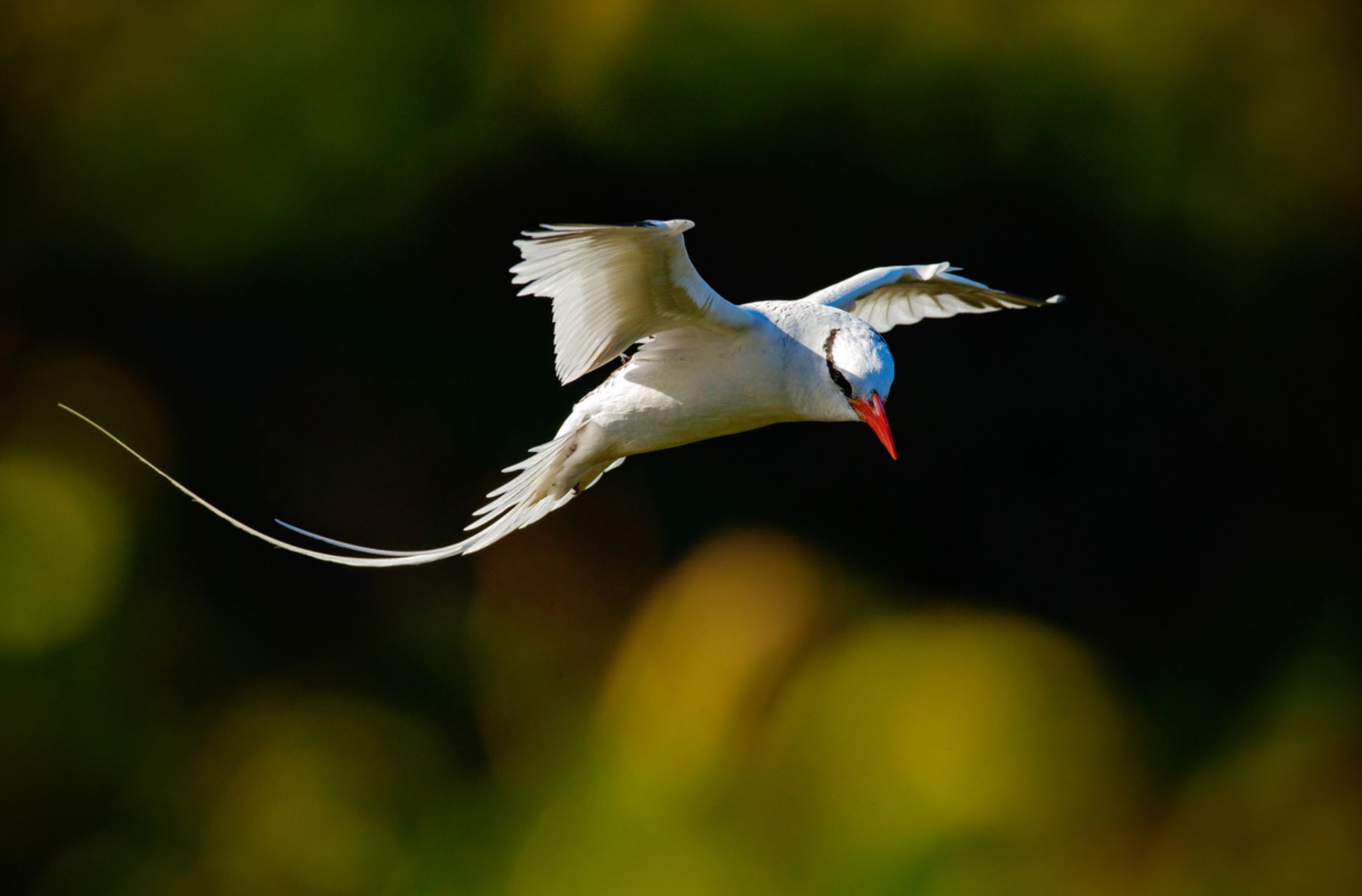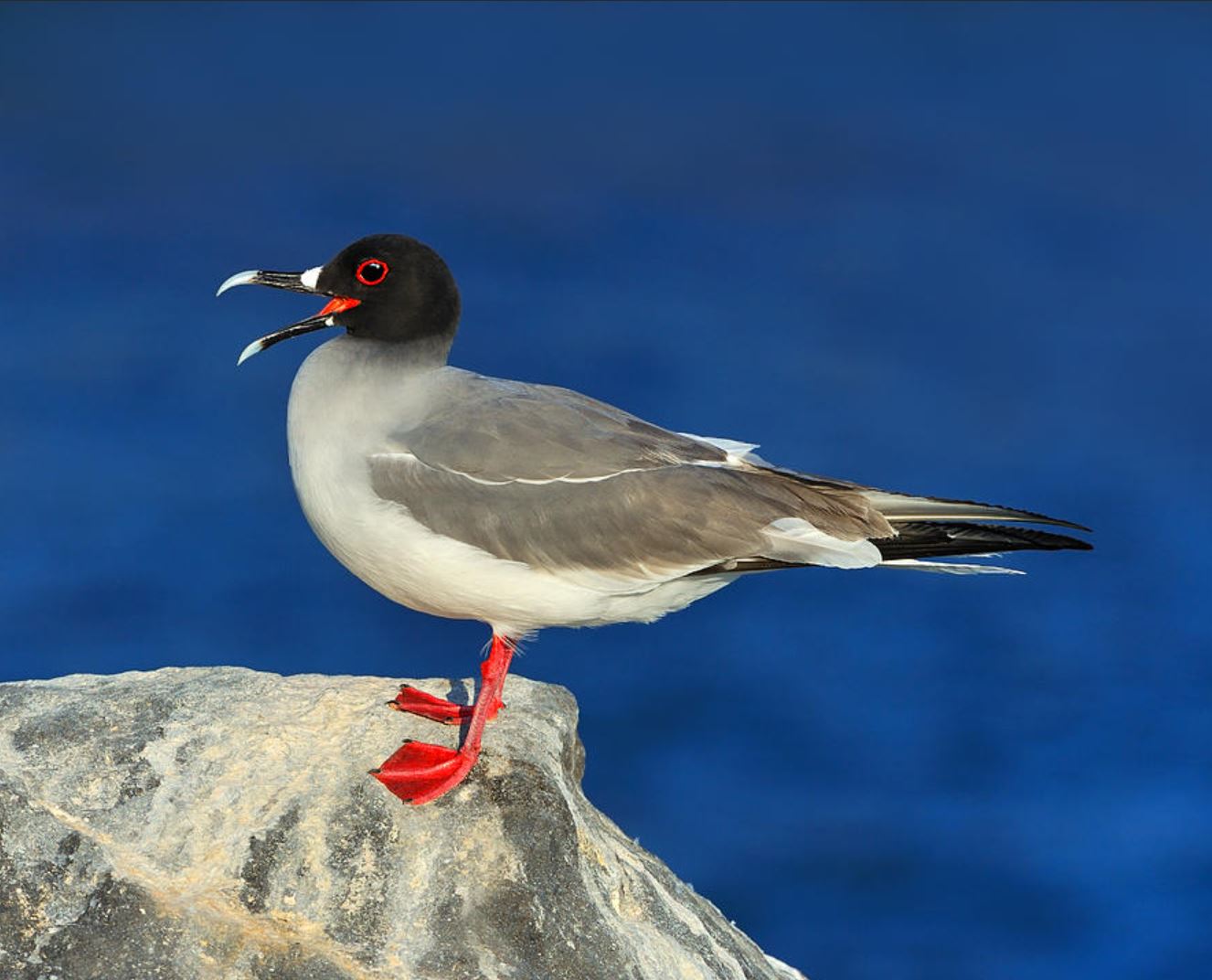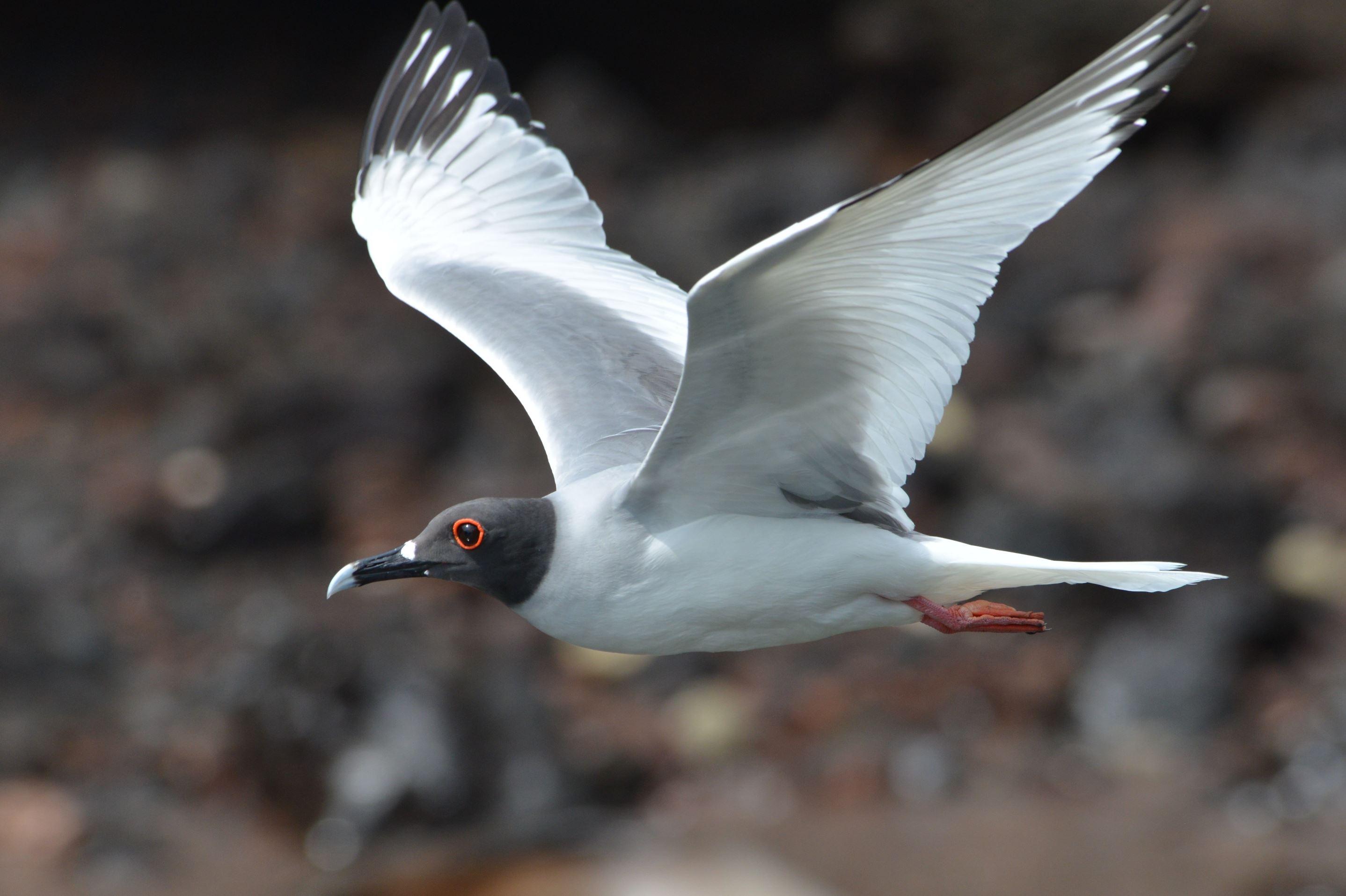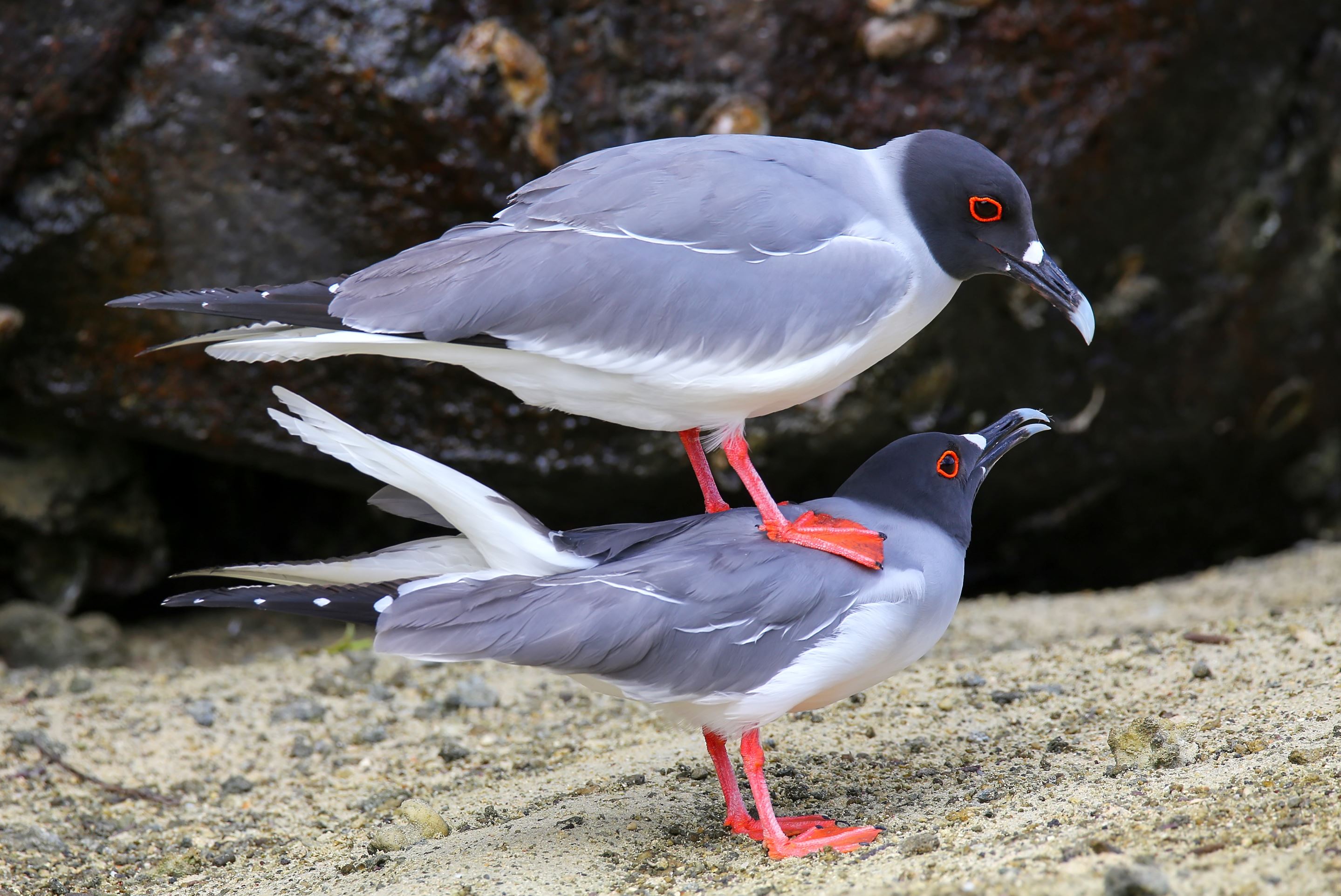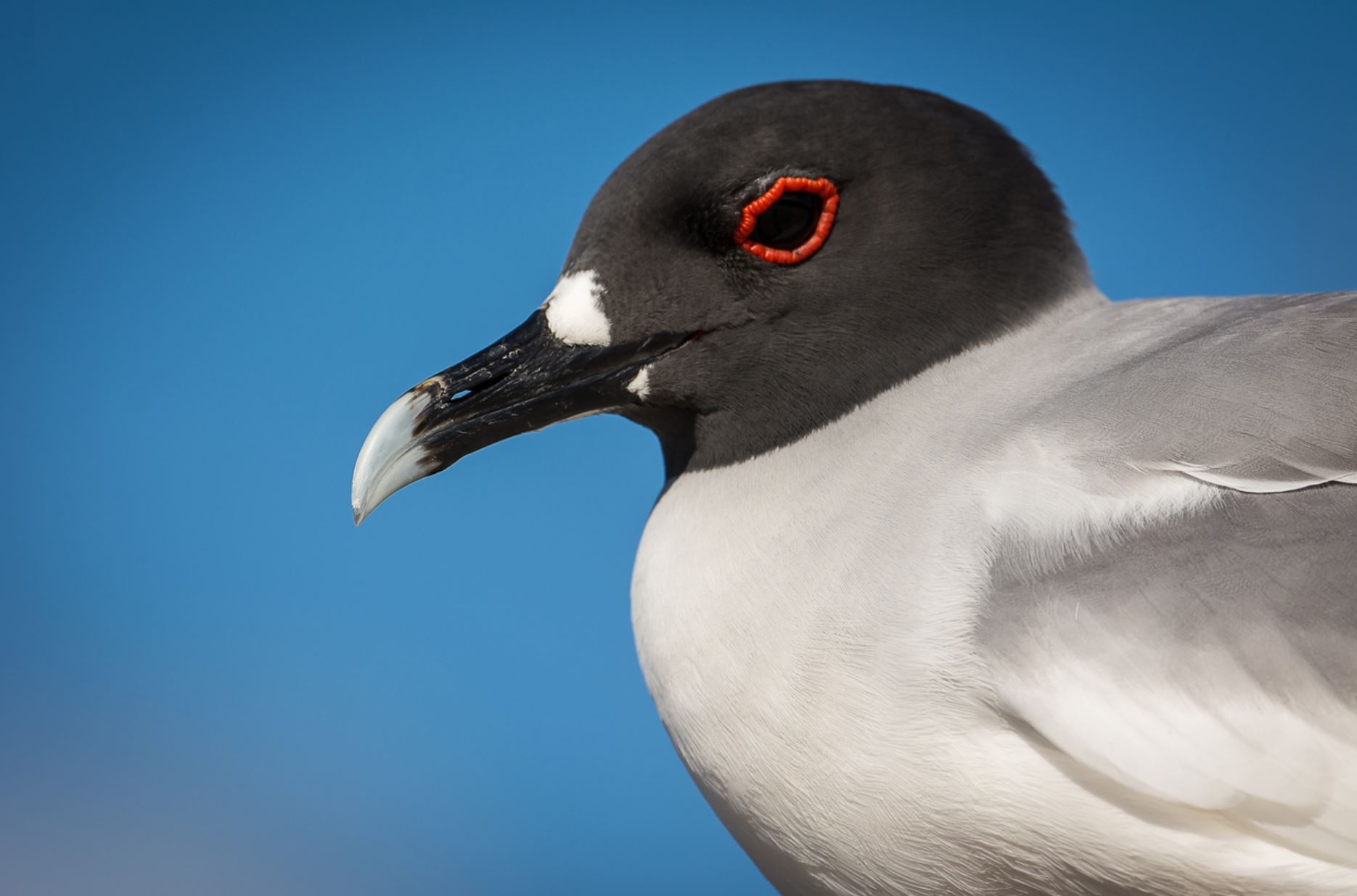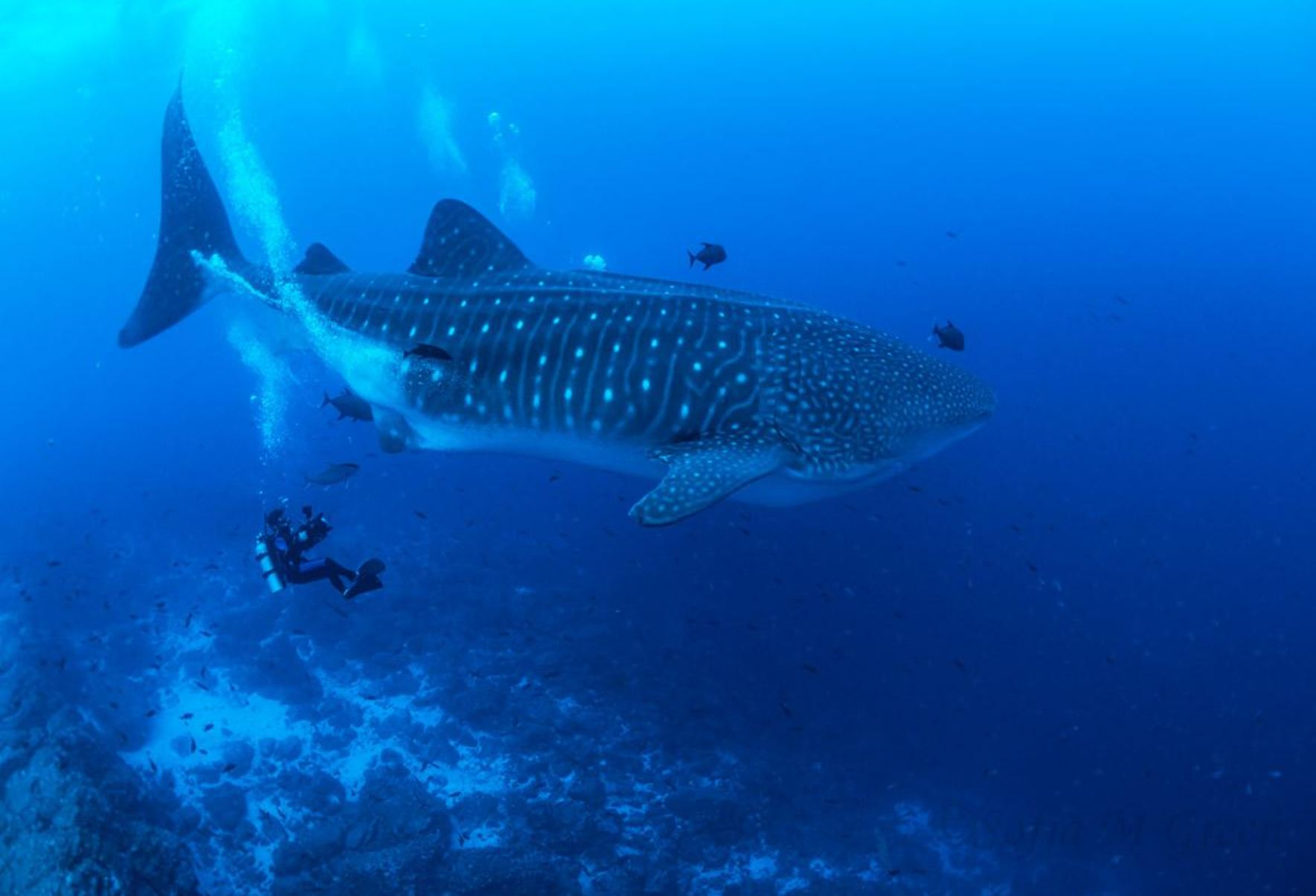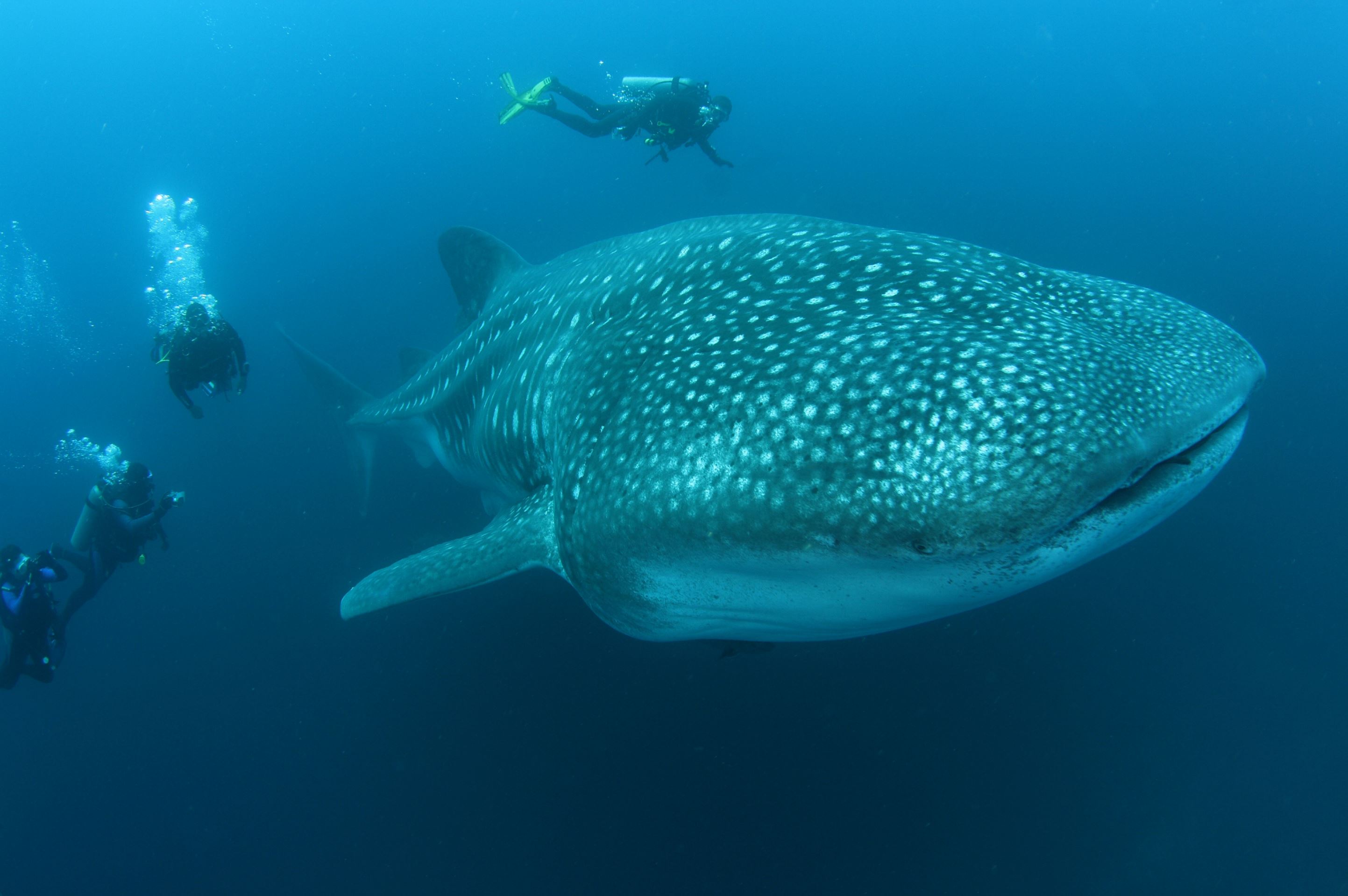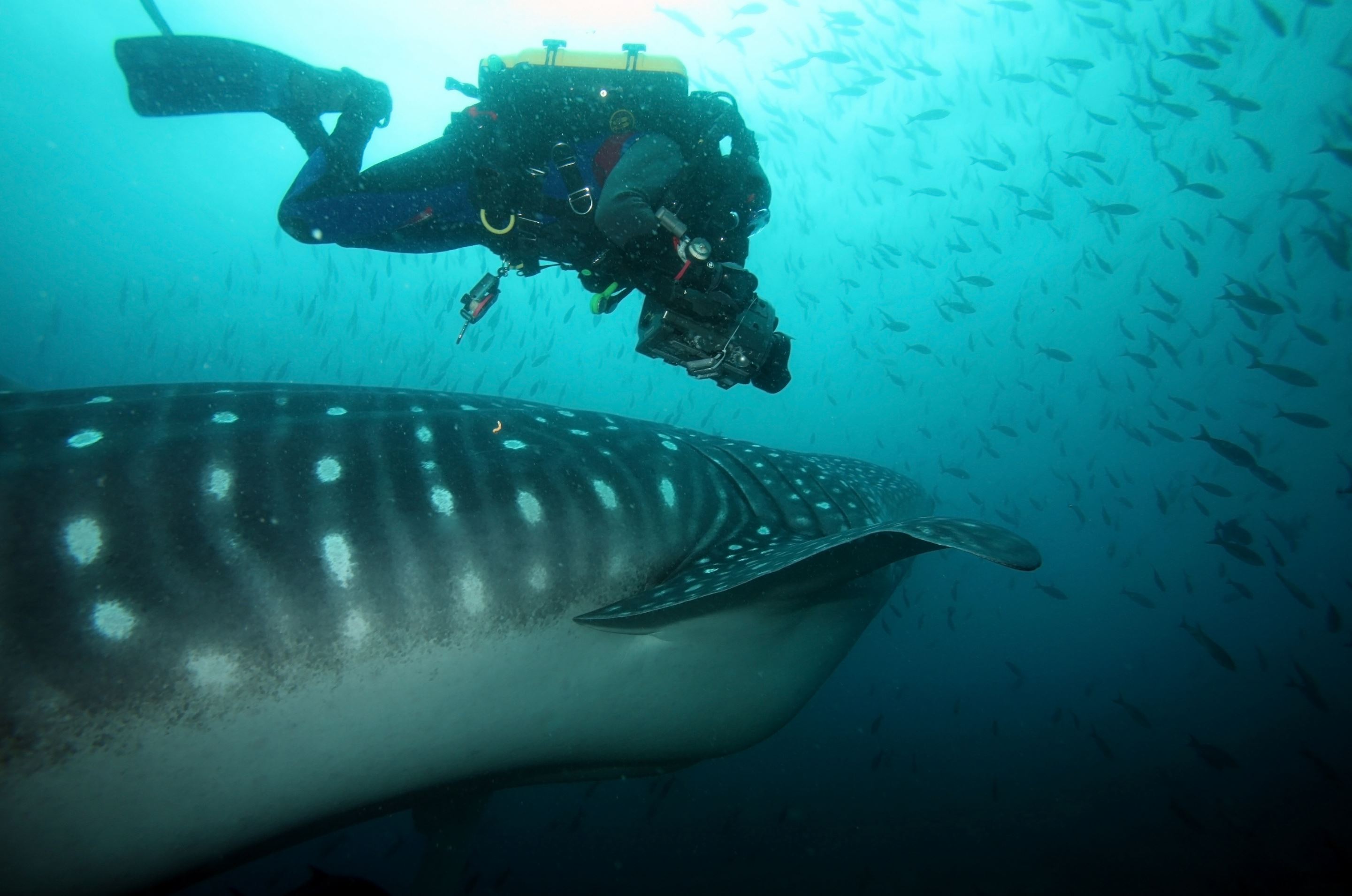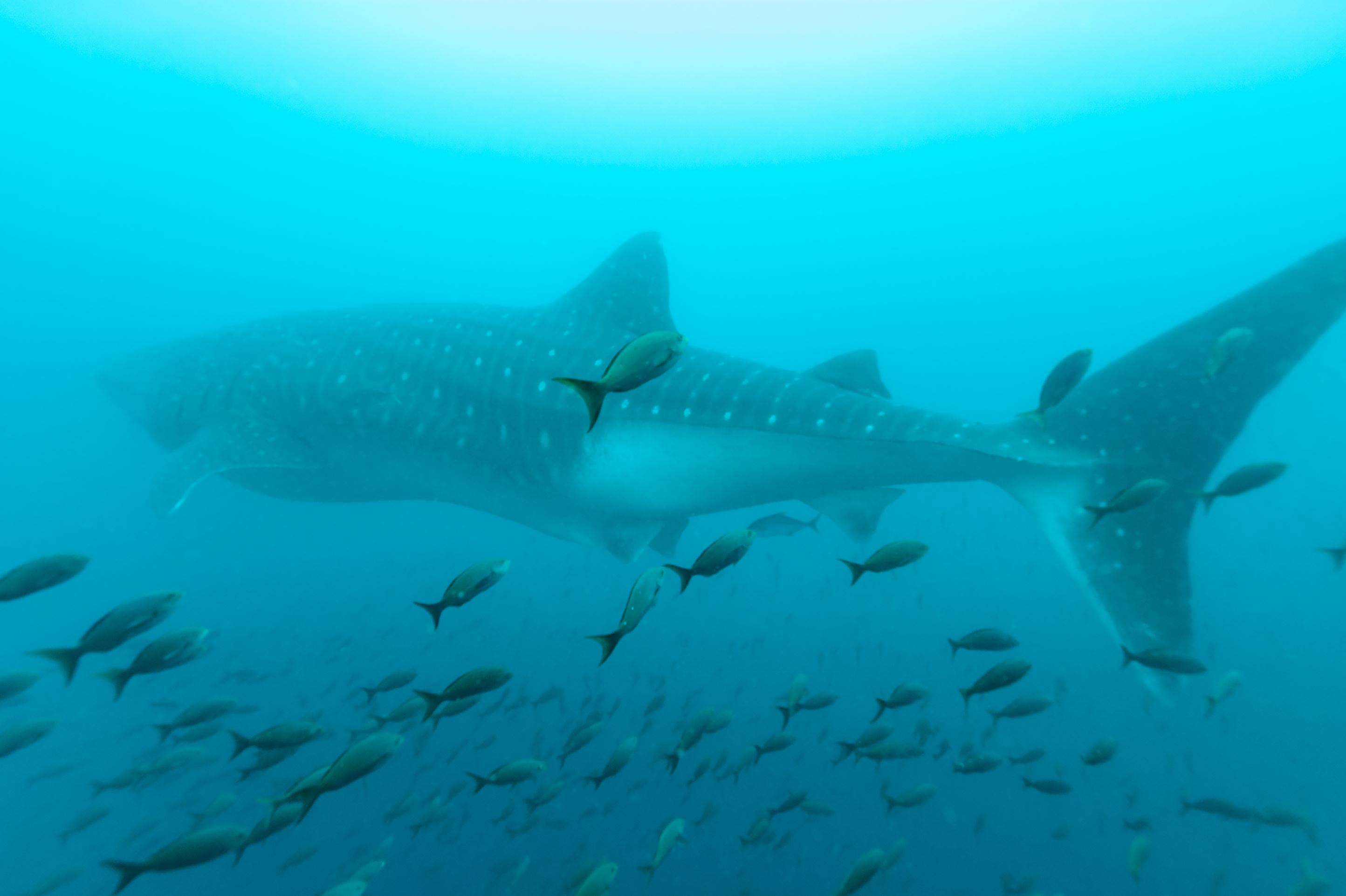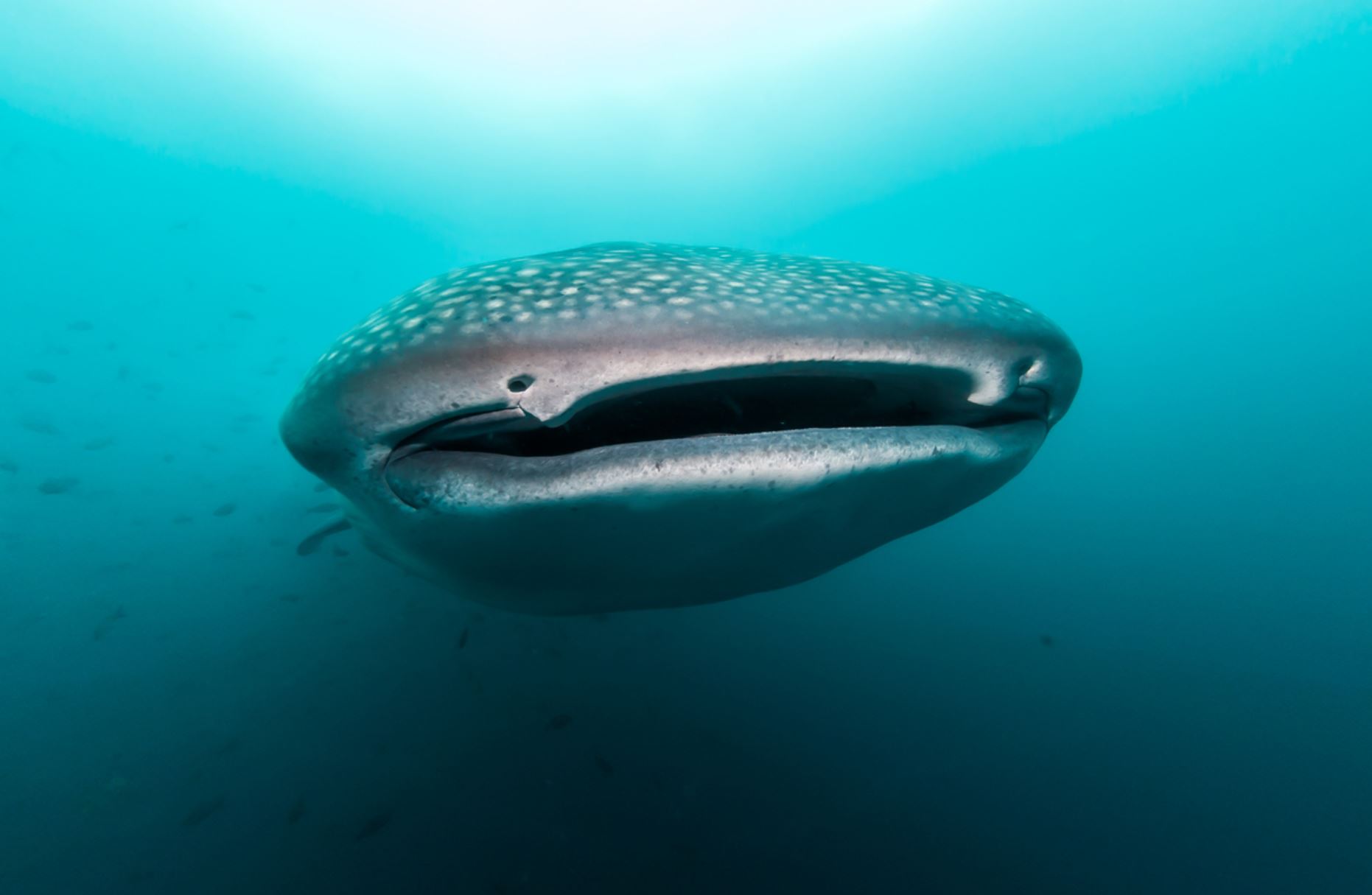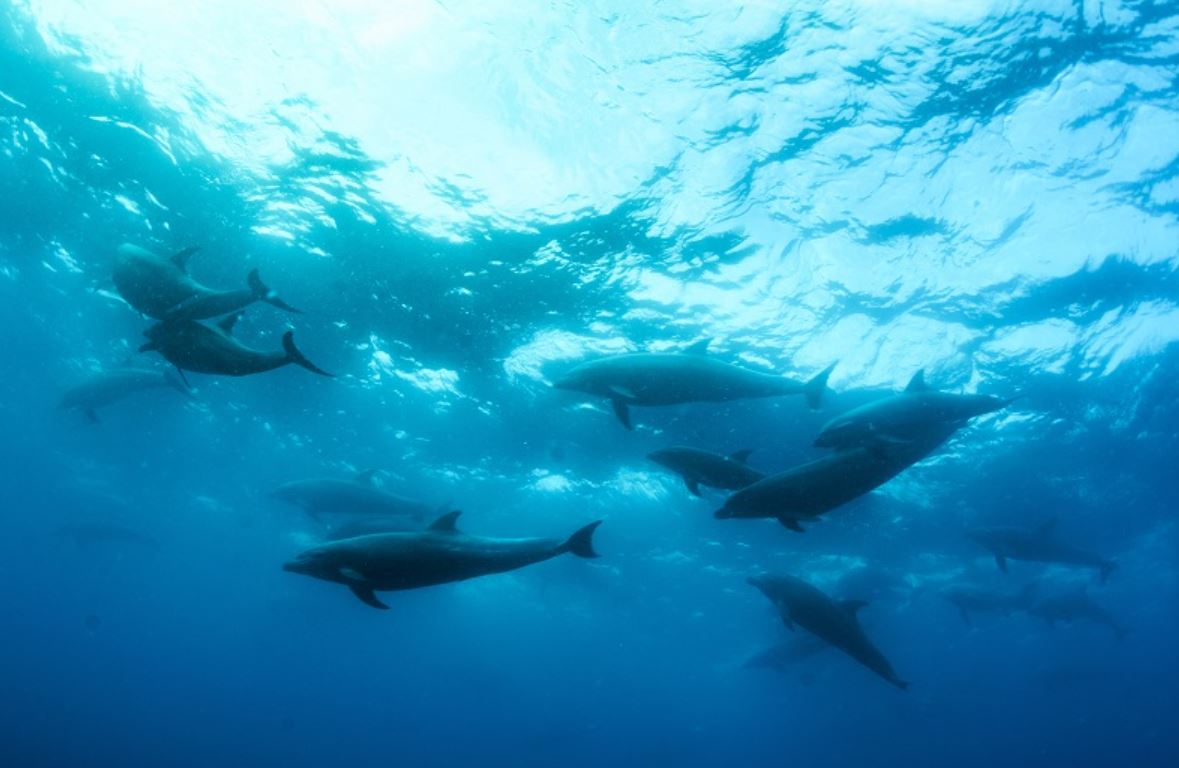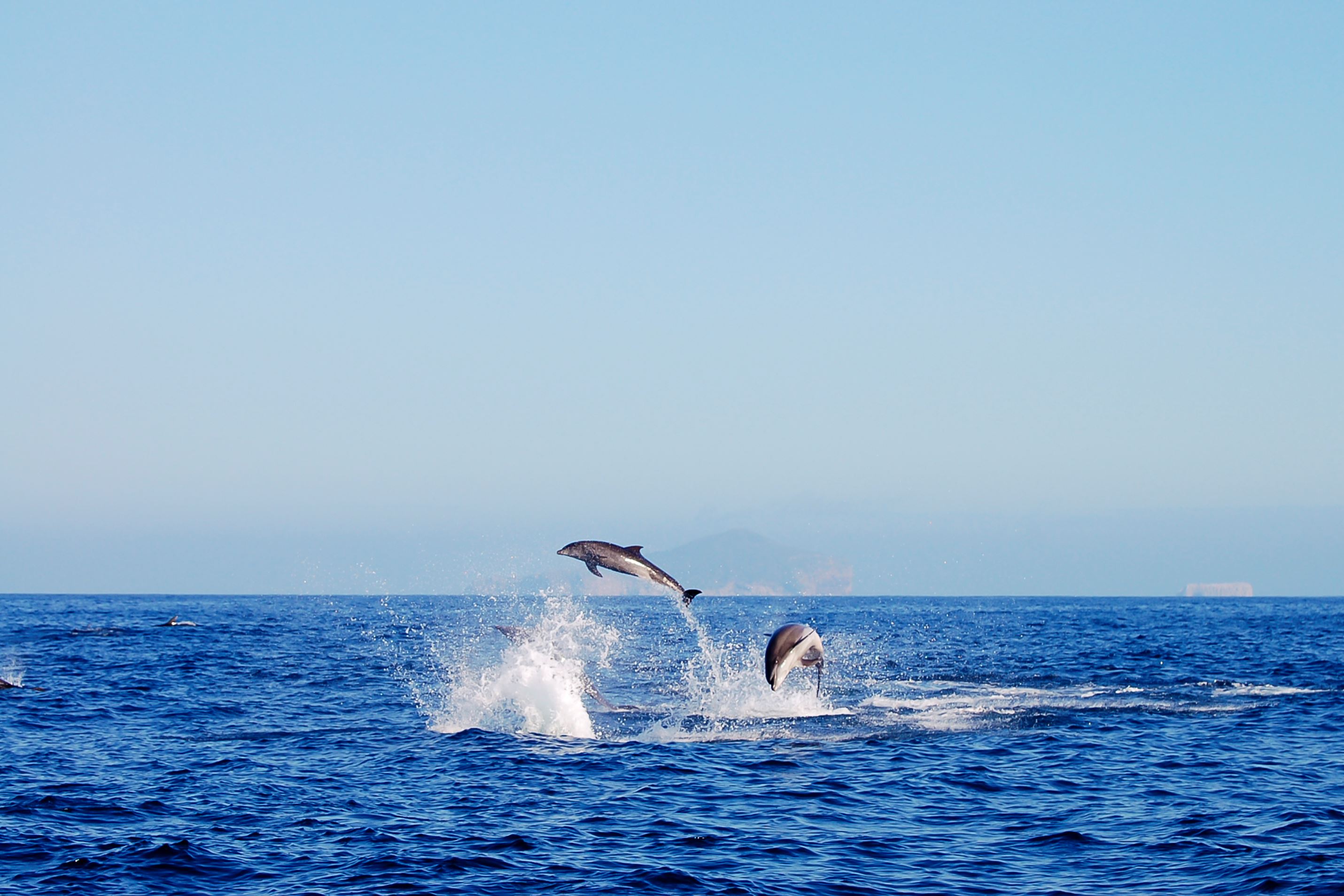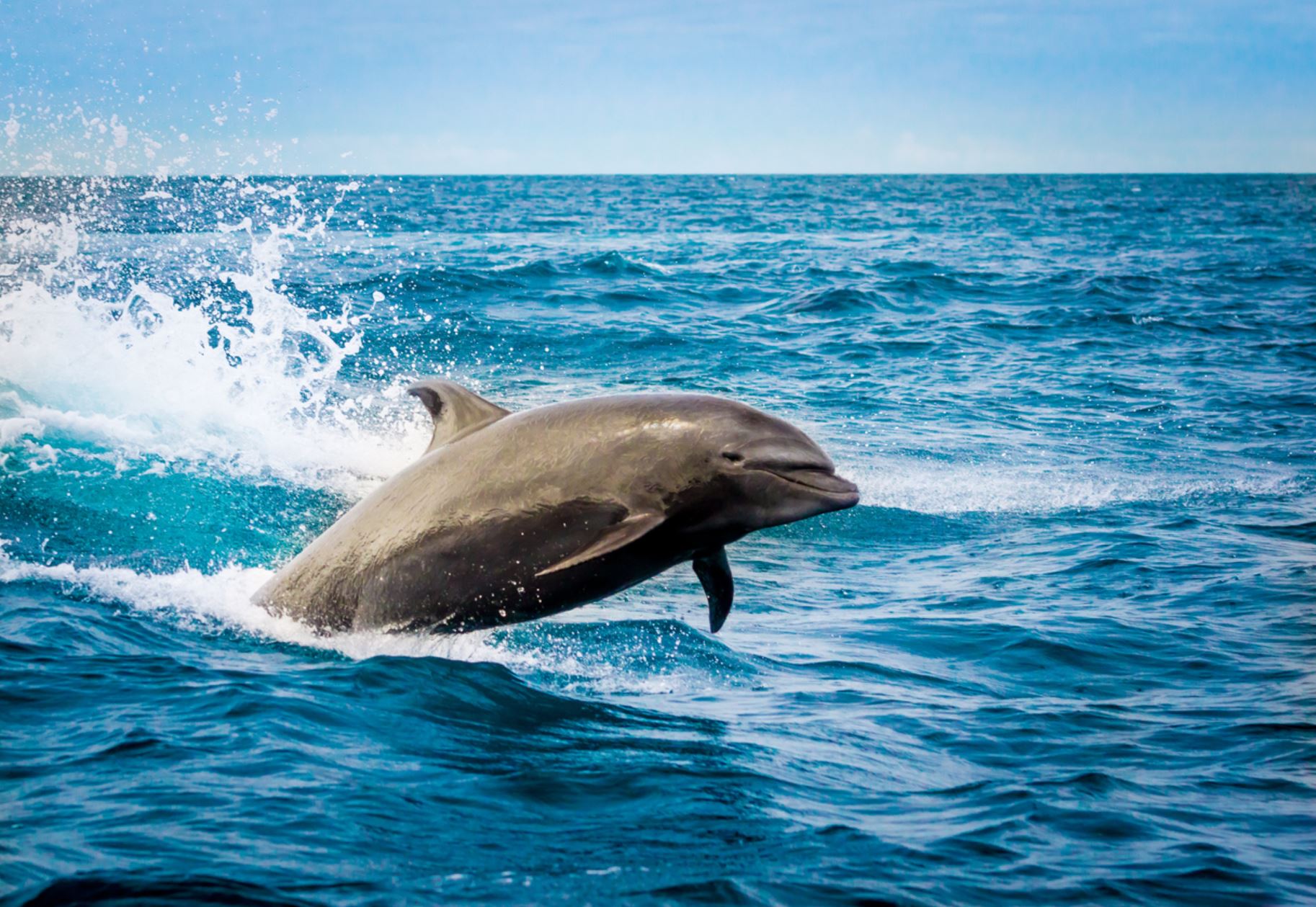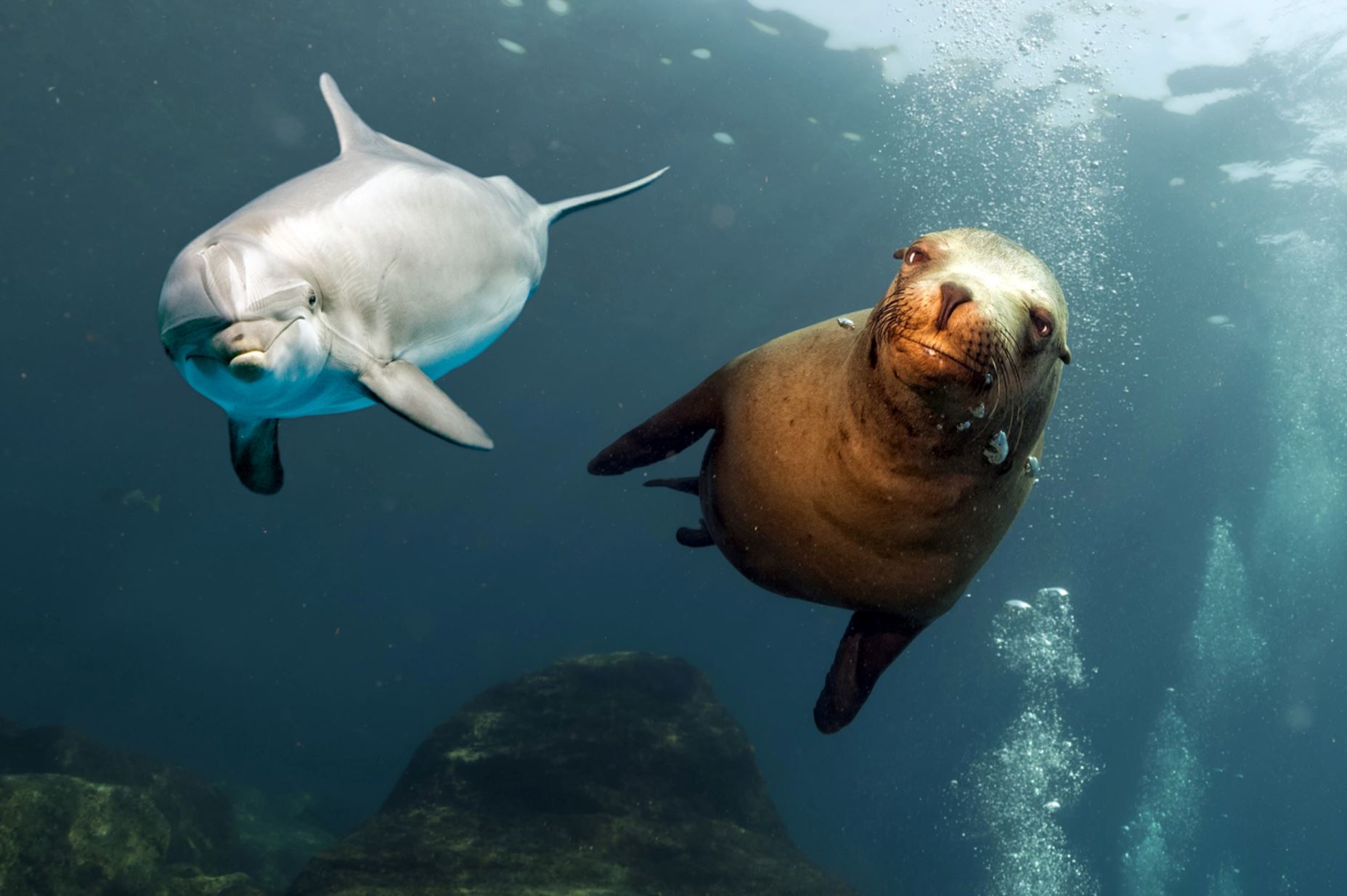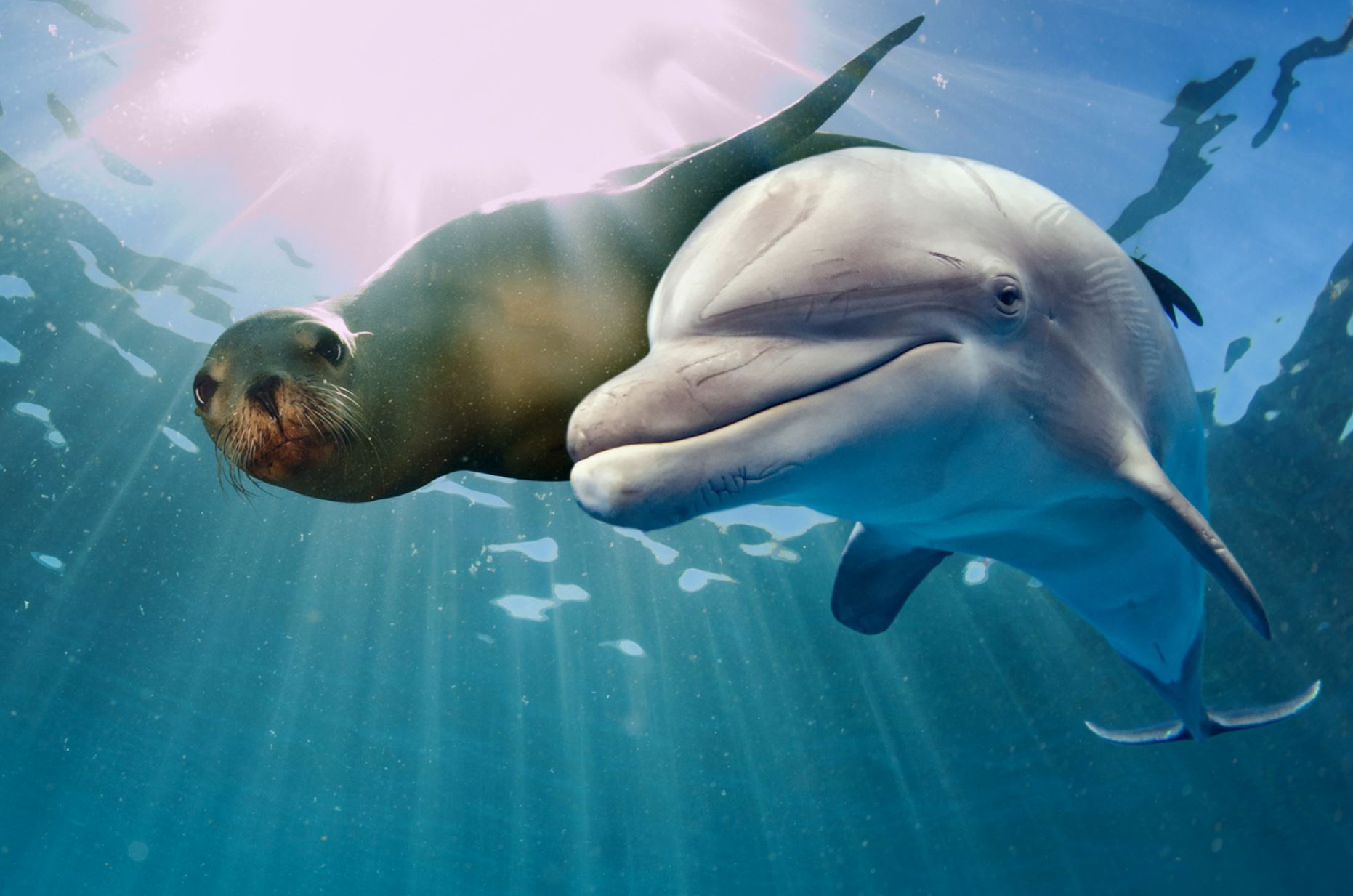Española
Animals/Wildlife





Landscape/Views




Snorkeling




Beaches





English named for the Española Island it Hood Island after Viscount Samuel Hood. It is located in the extreme southeast of the archipelago and is considered, along with Santa Fé, one of the oldest Galapagos islands, at approximately four million years. A popular tourist stop, Isla Española is the most southerly island in the Galápagos Archipelago. The climate is very dry, like most of the Archipelago. But due to the flatness of the island, it is the driest of these islands, with only a few inches of rain per year. It is about a 10- to 12-hour trip by boat from Isla Santa Cruz.
Tourists come to see the waved albatrosses (from March to January, almost the entire world population breeds on the island) and the mating dances of blue-footed boobies. Two spots are especially popular with visitors: Bahía Gardner, which has a lovely beach; and Punta Suárez, of interest because of its varied bird-life. This island has its own species of animals, such as the Hood mockingbird, which has a longer and more curved beak than the one on the central islands; the Española lava lizard and the marine iguana of the subspecies venustissimus, which has red markings on its back. There are also swallow-tailed gulls, Galapagos hawks and other birds. The island has been recognised as an Important Bird Area (IBA) by BirdLife International.
While Española Island is one of the oldest of the Galápagos Islands, this island is dying, slowly becoming a rocky, barren land with little or no vegetation. But this does give large bays, with sand and soft shingle which attracts a healthy number of Galapagos sea lions. In January 2020, it was widely reported that a male Galapagos tortoise named Diego fathered and resurrected the island tortoise population, saving the diminishing species from near extinction.
Visitor sites:
Gardner Bay, Suarez Point, Osborn islet
Pictures
Highlights / Places to Visit
Gardner Bay
Located on Española Island, Gardner Bay consists of an extensive beach of whitish coralline sand with several colonies of Galapagos sea lions.
Here, we can also observe the endemic mockingbird of Española, usually in small groups defending their territories.
Snorkeling is recommended, especially around the small semi submerged tuff cone located in front of the beach. Where we could see reef white-tipped sharks, rays, sea lions and a variety of colorful reef fish.
It’s basically a day of sun and beach, along snorkeling and kayaking activities.
At certain rocky points of the shoreline, we can also see marine iguanas, blue-footed boobies plunging in the water, Sally light-foot crabs, and small coastal birds and wandering tattlers (vagabundos) and turnstones (vuelvepiedras).
- Disembarking: Wet
- Type of Terrain: Sandy
- Physical Conditions Required: Low
- Activities: 1-hour hike / 1 hour 45 min beach snorkeling / 30 min kayaking / 30 min glass-bottom boat
- Highlights: Excellent for swimming and snorkeling along a wonderful and relaxing white sandy beach with colonies of sea lions, Hood mockingbirds, lava lizards, Galapagos hawks, and sea turtles. In front of the beach, there is a small islet, which is a good place for snorkeling among sea turtles, marine iguanas, rays, and colored fish. Travelers will also spot lava lizards and the colorful Sally light-footed Crabs or zayapas. Snorkelers often see many of the Galapagos marine species such as king angel fish, Creole fish, damsel fish, parrot fish, white-tipped reef shark, and many more.
Osborn Islet
Osborn islet is located to the southeast of Gardner Bay, near Española island. Since landing is not allowed on this site, the visit consists of a tranquil panga ride that will allow us to enjoy the panoramic views and the many species that inhabit the place.
The islet was named after Henry Fairfield Osborn, a true lover of nature and animal species. William Beeb worked for him and named this small islet after traveling to discover Galapagos.
There are many different schools of fish and other animal species, such as parrotfish, sea lions, butterfly fish, corals green pencil urchins and many other colorful fish. This site is also great for snorkeling and swimming around the abundant marine life, as its waters are very calm.
Suarez Point
Landing Type: Dry
Trail length: 1.9 km circular route.
This hike takes about 3 2/1 hours if you walk slowly.
Terrain: Moderate / difficult trail from sea level to rocky cliffs. The terrain is challenging due to uneven volcanic rocks. Suarez Point is one of the most popular attractions in the Galapagos. Upon arrival, your panga (zodiac) will take you to a small concrete walkway near a small lighthouse. With your first steps you will find yourself right in the middle of the action. Colorful Sally Lightfoot crabs cling to the black lava stones. Baby sea lions playing in shallow water. See if you can spot a Marine Iguana (Christmas Iguana) with her unique red and green skin tone. Tourists often gather here to snap photos, but the best is even further up the way. Leaving the beach behind the path leads along the coast. Expect to be molested by Mockingbirds ;; Certainly brave little birds, they are drawn to the hope of a sip of water from a tourist's bottle. This is a wonderfully close encounter with wildlife, but please resist the temptation to give them your water. Now it's getting difficult. Your guide leads you through a maze of volcanic boulders over difficult terrain. Keep your eyes on the ground for a safe footing, but don't forget to check back occasionally - this is a good place to find Galapagos pigeons or hawks. Your reward for navigating this tough trail will be when you reach the cliff plateau - albatross nesting sites. Albatross pairs come to Española Island in April each year to breed and nest. It is a real joy to watch the albatross mating dance and watch the loving behavior between couples who mate for a lifetime. Fluffy white hatchlings usually appear from June. While the Galapagos wave albatross lies enviably graceful in the air, they are famous for clumsy takeoffs and spectacular crash landings on land. In December the albatrosses leave the island for better hunting grounds in the open ocean. So be sure to plan your visit if you want to see them. Further along the cliffs, enjoy the wonderful view of the sea and famous Punta Suarez blowhole (el Soplador). When waves hit a hole in the rock, water shoots spectacularly high into the air like a geyser. A large wave can throw the water up to 23 m high. When the path leads back to sea level, it passes through a large blue-footed gannet colony. These amusing birds are the Galapagos clowns - if you are lucky enough to see their fun mating dance you will understand why. Nazca fools nest here too, and tropical red-billed birds can sometimes be seen flying around the cliff. This is the last section of the trail that leads back to the lighthouse beach.
Animals that can be seen on the island
Darwin´s finches
Darwin finches are a group of about 14 birds that gained notoriety when Charles Darwin studied them back in his voyage with the HMS Beagle in 1835. Darwin arrived in the Galapagos and was fascinated by collecting species he found in his trip — the species were taken back to the UK for further studies.
Back home, Darwin studied the birds with ornithologist John Gould and found fascinating similarities between these birds and a common South American ancestor finch. They noticed that finches had slight differences in the beaks and were also as a whole different from the original continental ancestor. Each finch had adapted to their own island environment and food source availability with variations in their claws, size, and beaks — deriving from this they were acknowledged as endemic to the Galapagos Islands.
Some finches have adapted to eat insects, others to eat nuts, others are completely vegetarian. Charles Darwin, years later, gathered all his findings in his famous book On the Origin of Species and concluded that species have the ability to change throughout time making favorable adaptations to their environment and becoming new species. This is what we commonly know as the theory of evolution by means of natural selection.
- Animal Group: Landbirds
- Scientific Name: Geospizinae
- Animal Average Size: 10 - 20 cm
- Animal Average Weight: 8 - 38 g
Places where you may see this animal:
Isabela
Santiago
Rábida
Santa Cruz
San Cristobal
Española
Galapagos Dove
One of the more attractive and pleasant birds to encounter on the islands is the Galapagos Dove. The Galapagos Dove is a tame and well-mannered creature. It is reddish brown with black and white markings, touches of incandescent green, red feet and a bright blue eye ring. The Galapagos Dove grows to measure between 18 and 23 centimetres long. Its beak is curved downward, larger and more curved than most other doves.
The Galapagos Doves curved beak helps it feed mainly on seeds picked from the ground mainly from the Opuntia cactus. Cactus pulp forms part of their diet and is probably their main source of water.
The Galapagos Dove is endemic to the islands and is found in the more arid parts of the main islands. A process of evolution on Genovesa Island has softened the spines of cactus plants and thereby allowed the Galapagos dove access to pollinate the flowers. This has occurred due to the lack of bees that would normally perform this function.
The Galapagos Dove is most commonly seen on the ground where it forages for seeds and fruits. Even if disturbed it is reluctant to take to the air and if it does, it only flies for a short time.
- Animal Group: Landbirds
- Scientific Name: Zenaida galapagoensis
- Animal Average Size: 18 – 23 cm
- Animal Average Weight: 180 - 350 gr
Places where you may see this animal:
Isabela
Santiago
Rábida
Genovesa
Santa Cruz
North Seymour
Floreana
Española
San Cristobal
Galapagos Giant Tortoise
The giant tortoise is one of the biggest living reptiles, and they have the longest life from all vertebrates, living more than 100 years. The oldest tortoise known on record was 152 years. No reliable data exists to tell the age of a tortoise; however, fungi found in the carapaces, together with blood tests can help determine an approximate age. There are now only 11 species, 4 less than when Darwin visited the islands. Currently, they live in 7 different islands of the archipelago. They have struggled through volcanic eruptions, fires, hunting and introduced species threats. There are about 15 thousand tortoises living in the islands.
Their first ancestor is thought to have first arrived in San Cristobal Island. All the species were before considered subspecies of Chelonoidis nigra, but today each one are plain species. Darwin noticed the difference in the shell shapes of the tortoises according to each island, reaching to the conclusion that they all changed from one single ancestor to the different environments of each island, although the saddle backed shape is thought to have evolved independently from the others.
How did the giant tortoises arrive and establish in the islands? The theory states that these giant reptiles were transported by massive floating platforms that were built naturally by heavy rains on the amazon that put down and stocked many trees together. Tortoises most likely walked on these platforms to cross a river, or to feed, or maybe by mistake and then later got carried with the river currents to the ocean and then to the Galapagos in a long journey in which most animals died. These tortoises were better prepared for the environment of the Galapagos and this journey than many other animals, having the ability to survive without much food or water. This allowed them to reproduce and spread around. Once on the islands, after consecutive similar events happening many times during a long period of time, they started developing adaptations to feeding and walking around the isolated different islands of the archipelago.
There are two carapace shapes: the dome, and the saddle-backed. All tortoises have adapted to the vegetation and landscape of their surroundings. Males are bigger than females, and also have a longer and thicker tail where they have their reproductive organ.
They can weight to 300k (660lb), are as large as 1.50m (5ft), and reach sexual maturity at the age of 20 to 25 years. They are herbivores and feed on more than 50 kinds of plants including a poisoned apple tree, endemic guava, opuntia and fruits. It takes them from 1 to 3 weeks to digest their food, and have inefficient digestive tracks. Their slow metabolism and water reserves allow them to live up to around one year without food or water. They spend more than 15 hours a day resting.
They reproduce at any time of the year, but prefer the wet season. Turtles lay from 4 to 15 eggs in the warm grounds of the lowlands. Hatching occurs mostly in the months of December to April. They can be seen usually in the highlands of the islands, taking refreshing mud baths and nesting in the lowlands on a hot day.
- Animal Group: Reptiles
- Scientific Name: Geochelone elephantopus
- Animal Average Size: 150 cm
- Animal Average Weight: 300 kg
Places where you may see this animal:
Isabela
Santiago
Santa Cruz
Floreana
Española
San Cristobal
Galapagos Hawk
The Galapagos Hawk is endemic to the Galapagos and is similar to the red tailed hook that can be found in North America. The hawks found in Española Island are the biggest in the archipelago averaging 1,140gr, and the smallest are found in Marchena Island weighing about 844gr. Males are smaller and lighter than females.
This bird has developed an interesting breeding method. As many as 3 hawks would reproduce with the same female and all would assist the nursing by bringing food. They lay 3 to 6 eggs, and depending on the food availability, all will survive.
They feed on dead animals and also hunt insects, mammals, reptiles and other birds. However, there are few birds that are fearless of the hawks, such as the mockingbird that would even fight them to protect their nest. They can hunt in groups of 3, one being the leader, displaying strategic chasing or mocking when needed.
There are supposed to be about 300 individuals in the archipelago, so they are highly endangered, mainly because of introduced species. They are currently extinct in Baltra, Daphne, Floreana, San Cristobal, and Seymour islands.
- Animal Group: Landbirds
- Scientific Name: Buteo galapagoensis
- Animal Average Size: 45 - 58 cm
- Animal Average Weight: 844 - 1.223 gr
Places where you may see this animal:
Española
Galapagos Lava Gull
The Lava Gull (Larus fuliginosus) is a large gull, probably related to the Laughing Gull. One of the rarest gulls in the world, the entire population is endemic to the Galapagos Islands and is estimated at 400 pairs. Adult Lava Gull characteristics are a black head, black wings and with a dark grey body and a paler grey belly. Their bill and legs are black and the inside of the mouth is scarlet.
Lava Gulls are quite often seen as they frequently emit long raucous gull-like calls with their bills wide open. They have white upper and lower eyebrows, with red lids. Young gulls are generally dark brown in colour.
Lava Gulls are solitary nesters, laying two olive-coloured and well-camouflaged eggs that take 30 days to incubate. Young birds fledge at 60 days and are cared for by adults for a short period.
Lava Gulls are omnivores like most Larus gulls, generally scavenging or stealing from nests, but they will also catch fish, small crustaceans and newly-hatched lizards, iguanas and turtles. . Being scavengers, young Lava Gulls are more naturally self-sufficient than some species with more specialized feeding habits.
The Lava Gull is categorized as ‘vulnerable’ by the IUCN Red List because it exists in small numbers and though the population is stable, it faces numerous threats.
- Animal Group: hooded gull group
- Scientific Name: Larus fuliginosus
- Animal Average Size: 51 – 55 cm
Places where you may see this animal:
Santiago
Genovesa
Santa Cruz
Española
Galapagos Lava Heron
The lava heron or Galapagos heron inhabits the intertidal zone and the mangrove areas, feeding at the open shoreline by slowly moving in the shallow waters or even diving into them. Apart from crab and fish, it also eats insects, lizards, and eggs. Its dark shades of gray help them to blend in with the rocks in order to hunt.
Males and females look similar, their feet, head, and eyes get brighter tones in courtship time and it is an opportunistic breeder. The mating months are September to March where females and males create a loud sound, show aerial displays and chase other herons in order to get a monogamous partner. They lay from 1 to 3 eggs in random safe areas of the lowlands around mangrove trees, that take around 22 days to hatch. They protect their territory by chasing intruders and making loud noises.
Due that their meals are on the ground, this bird prefers to walk instead of flying. They can be spotted walking or jumping along their feeding areas, found in all islands.
- Animal Group: Shorebirds
- Scientific Name: Butorides Sundevalli
- Animal Average Size: 45cm
- Animal Average Weight: 190-235 g
Fernandina
Isabela
Santiago
Santa Cruz
Floreana
Española
San Cristobal
Galapagos Lava Lizard
Lava Lizards, scientifically known as Microlophus albemarlensis, are found on the Galapagos Islands. They are cold-blooded omnivores found in large groups moving around in the sun on top of the black lava that covers most of the islands. This movement in the sun keeps them warm, and gives them their name: Lava Lizards.
Galapagos Lava Lizards are small reptiles of 6-12 in (15-30 cm) long with tapering tails, slim bodies, pointed heads, long toes, and scaly skin. Their physical appearance, including their markings and color, varies based on where they live. Lava Lizards are of seven distinctive subspecies, out of which six species are found among six different islands with just one species inhabiting one island alone. They are commonly sighted all year-round and are usually active during the day. When mature, males have an intense coloring of a yellow, brown, grey-black speckling throat and a short crest of spiny scales along the back, whereas females have red or orange cheeks. Lava Lizards are unafraid of humans, so if you are ever lucky enough to see one in real life, you might be able to get your very own photo of these amazing reptiles!
- Animal Group: Reptilia
- Scientific Name: Microlophus albemarlensis
- Animal Average Size: 15 – 30 cm
- Animal Average Weight: 250 g
Isabela
Santiago
Santa Cruz
San Cristobal
North Seymour
Santa Fé
Floreana
Española
Galapagos Marine Iguana
The marine iguana is the only marine species of lizard in the world; it has changed its behavior, diet and physiology through natural selection during thousands of years.
There are seven subspecies, most of them developed in different islands. They have black bodies that sometimes especially during mating season and in different times on distinct islands, can have some colorful patches with green, orange, grey and yellow tones.
Marine Iguanas are ectothermic animals, same as all reptiles. As a result, they need to thermo regulate their activities in order to survive, by behavior. They need to warm up with the sun to the ideal temperature of 35.5C to successfully perform an activity such as feeding, or to even move from one place to another. Their actions are dependent on the water temperature and climate, for example entering the ocean to feed they can lose up to 10C (mainly in the night).
Marine Iguanas must constantly warm up in daylight by lying flat, in order maximize how much heat they are receiving, also marine iguanas need to cool off when the sun is too strong by avoiding direct rays on their body. These animals are capable to even slow down their metabolism and heartbeat, in order to optimize their energy consumption. Typically, marine iguanas feed once a day, but depending on their size and needs they can do it every two or three days.
Sexual maturity is reached after 8 years and they can lay between one to four eggs, breeding season is usually in the months of November and December.
Marine Iguanas can be seen on the majority of the Galapagos shoreline as they feed on algae that grow in all intertidal zones of the archipelago. They are able to feed on almost all kinds of seaweed with the exception of the brown one ( it makes them sick). They prefer shallow water or exposed sea weed in order to feed without the necessity of diving, thus saving body temperature. However, it needs to be clear that marine iguana can dive as deep as twelve meters and hold their breath for about one hour if needed.
Their flattened tails help them to swim efficiently. These iguanas have developed a special gland to secrete the salt they ingest by feeding, such gland is located by the ear and is connected to the nose rich from where they expel a salty solution. Such salty solution is expelled by sneezing.
- Animal Group: Reptiles
- Scientific Name: amblyrhynchus cristatus
- Animal Average Size: 70cm
- Animal Average Weight: 13kg
Fernandina
Isabela
Santiago
Bartolomé
Santa Cruz
Santa Fé
Floreana
Española
Galapagos Racer Snake
Racer snakes on Galapagos are constrictors and only mildly venomous. They are known to prey on lava lizards, geckos, insects, iguanas, mice, rats and hatchlings of several bird species. They are not at all aggressive towards humans and could not do much harm if they were to attack after being threatened. Racers tend to be dark brown with stripes or spots.
There is some confusion over the number of species of racer snake found in Galapagos due to poor research. The latest research suggests that there are: the Galapagos racer (Pseudalsophis biserialis) from San Cristobal and Floreana – though it is locally extinct on Floreana and now only found on nearby islets; the Espanola racer (Pseudalsophis hoodensis) from Espanola and adjacent islets; Santa Cruz racer (Pseudalsophis dorsalis) from Santa Cruz, Baltra, Santa Fe and adjacent islets; Fernandina racer (Pseudalsophis occidentalis) from Fernandina, Isabela, and Tortuga; banded racer (Pseudalsophis slevini) from Pinzon; and the striped racer (, ) from Baltra and Santa Cruz.
It is the Fernandina racer which has been observed hunting for marine fish from rock pools and the shallows around Fernandina. The British biologist Dr. Godfrey Merlen was the first scientist to ever see this behaviour happening as he noted up to 15 individual snakes slithering around the lava rock pools around Cape Douglas. This is a unique behaviour of terrestrial snake not observed anywhere else in the world. The racers on Fernandina were also the stars of BBC´s Planet Earth II where they were filmed hunting juvenile marine iguanas.
Racer snakes can be found in Galapagos on most of the major islands, though they are now locally extinct on Floreana. The snakes are found throughout the year, but unlike many other Galapagos animals they are shy of humans and will hide away making them reasonably tough to spot without looking for them specifically. They are diurnal, most active around dawn and dusk, and often rest around midday. The native snake population has been decimated by introduced species such as cats, pigs and feral goats which forage for their eggs.
- Animal Group: snakes
- Scientific Name (depending from the islands): Pseudalsophis biserialis, Pseudalsophis hoodensis, Pseudalsophis dorsalis, Pseudalsophis occidentalis, Pseudalsophis slevini, Pseudalsophis steindachneri
- Animal Average Size: 80 cm bis 1,20 m
- Animal Average Weight: 8 – 10 kg
Racer males can be found in Galapagos on most of the major islands!
Galapagos Sea Lion
There are two species of sea lions in the Galapagos: the most common one is the Galapagos sea lion (Zalopus wollebacki) and the other one is the fur seal (Arctocephalus galapagoensis). Both are endemic to the Galapagos and are believed to have traveled south from North America and northern locations.
The Galapagos sea lion is one of the most emblematic animals of the Galapagos, with a hight of 1.50m to 2.50m (60 to 100 inches) and can weigh up to 250k (550lb). These sea lions are different from their relatives in California, being smaller and more sociable. They have external ears and the capacity of using their strong frontal fins to gallop inland and climb the rocky shores of the islands. The Galapagos sea lion, prefers the beach to the rocks and form colonies on them.
This species presents sexual dimorphism, which means they have physiological differences between the genders. Males are usually three to four times bigger than females and are usually darker in fur tones, additionally, the adult males present a bump in the head known as sagittal crest. Sea lions are fully developed at the age of ten years old but are sexually active at six years old. Females live up to 24 years and males usually about 18 due to the extra energy expense during all the reproductive life.
When forming a colony, only one Alfa male will reproduce and take care of the whole group, in some areas like San Cristobal you can observe colonies of more than 300 in a single beach. During mating season (July to December) the males fight for territory and for reproduction. This can be an extreme show of strength and speed.
Females have one pup a year that takes 11 months to be born. The pup lactates from the female every day, after she returns from fishing, for as long as two years, sometimes competing with the previous year new born. Sea lions, do not synchronize their breeding, this results in one of the reasons for the decreasing numbers.
Sea lions feed mainly on small fish, sardines, squid and other mollusks. Data has revealed that they can dive down to 200 meters and hold their breath for more than 20 minutes.
Their natural predators are sharks and orcas, whales very rarely fish sea lions in the Galapagos. The biggest colony of sea lions of the archipelago is in Puerto Baquerizo Moreno and San Cristobal. Here these animals cohabit with humans, preferring the populated beach, to the isolated ones of the island.
The fur seal is smaller than the sea lion, about 1.5m (5ft). This subspecies is very shy and rare to see. They prefer the rocks, to the beach and they have nocturnal habits. Fur seals are less in numbers when compared to the sea lion, as they were heavily hunted back in the day by the first colonizers.
- Animal Group: Mammals
- Scientific Name: Zalophus wollebaeki
- Animal Average Size: 150 - 170 cm
- Animal Average Weight: 60 - 100 kg
Fernandina, Isabela, Genovesa, Santiago, Rábida, Santa Fé, Daphne Major, North Seymour, Mosquera, Floreana, Española, San Cristobal.
Galapagos Stingrays
Seen from the side, this animal is perfectly flat, with pectoral fins that extend to the head. The eyes are located at the sides of its head and with breathing cavities near. The diameter on average is from about 30 cm to less than 1 m. Stingrays are close relatives to sharks, with the common factor that both are cartilaginous fish that swim in warm waters of tropical oceans.
They will have one baby per year, and when the baby is born it will have to fend for itself. The females keep the egg and the juvenile in their uterus (ovoviviparous) from 2 to 4 months until the youngster is big enough to be born. No parental care is given to the newborn, it must be ready to feed and protect itself. Cartilaginous fish tend to mature at a slow rate, some studies say that they enter maturity when they are 20 to 30 years old.
Stingrays can spend most of their time buried on the seafloor and they have electrical receptors in their skin to help them read electrical charges in the ocean when looking for food and for orientation. Their favorite food is worms, fish, mollusks, crabs, and shrimp that they get by scooping through the ocean sand.
There are also other species in the ray family that can be spotted in the Galapagos: manta rays (the biggest of all, measuring about 4 m across its fins), golden rays, and spotted eagle rays.
- Animal Group: Marin Life
- Scientific Name: Dasyatidae
- Animal Average Size: 30 cm - 2 m
- Animal Average Weight: 7,6 kg
Places where you may see this animal in Galapagos:
Wolf, Darwin, Fernandina, Isabela, Genovesa, Santiago, Bartolomé, Rábida, Chinese Hat, Santa Fé, Santa Cruz, North Seymour Plaza Sur, Floreana, Española, San Cristobal
White tip Reef Shark
This species is recognized by its broad head and slender body, and it is one of the smallest sharks of its species. Its most outstanding feature is the white tip in the dorsal and tail fin. In length, it can reach up to 244 cm (96 in). Its habitat is around coral reefs of Asia, Africa, and Central America and can be easily spotted in shallow-warm waters as well as other places in the Pacific.
It mainly feeds on crustaceans such as crabs, lobsters, fish such as parrotfish, snappers, squirrelfish, and the occasional octopus and eel which they hunt in groups. It is a nocturnal hunter, when the prey is asleep and easier to catch. During the day, it remains in groups that spend most of the time resting motionless on the bottom of the ocean floor.
It will breed every other year, where the female will choose between as many as 5 males. Ten to thirteen months later, the female will give birth to around 6 pups. Youngsters will reach sexual maturity after 8 years and will grow slowly in length.
Whitetip reef sharks are fearless of humans and do not tend to be aggressive or territorial. When snorkeling they can become curious and approach swimmers; however, caution with wildlife is always advised.
- Animal Group: Marine Life
- Scientific Name: Triaenodon obesus
- Animal Average Size: 1.2 - 1.6 m
- Animal Average Weight: 18.3 kg
Galapagos Wawed Albatros
This bird is endemic to the Galapagos Islands and is also known as the Galapagos Albatross, found in the largest colony in the world located on Española Island.
The preference for Española Island for a couple has its reasons. The eroded field of the islands has helped to create flat areas where the Galapagos albatross can easy takeoff with its large wingspan and weight near cliffs. They are known for their perfect flying abilities when using the wind speed to travel far distances. The flat fields are also the perfect location for nesting sites and the nearby cold water currents bring plenty of food.
The colonies are deserted from January to March. Males arrive first and wait for the females to meet them. Their courtship ritual consists of spectacular mating dance, based on bill circling and bowing, uprising the beak and clacking beaks together. As a monogamous animal, the dance in the next breeding season will be less elaborated. Females lay one big egg between April and June which is incubated for two months and is also moved to improve the hatching success. When an egg is abandoned, it can be adopted by another couple of albatross and rarely by another bird species.
When parents go fishing, the chicks congregate together probably to reduce the chance of being preyed upon. Once the parents are back, they recognize unique tones from each other. Chicks are feed about 2kg of an oily nutritious substance made out of digested fish and squid that is rich in nutritional value, thus the youngsters can be ready to leave the nest in about 6 months’ time.
They are considered critically endangered due to their delicate and fragile sole nesting area. There are 35 thousand pairs on the islands that can live up to 50 years.
Animal Group: Seabirds
Scientific Name: Phoebastria irrorata
Animal Average Size: 89 cm
Animal Average Weight: 2 kg
Places where you may see this animal in Galapagos: Genovesa, Santa Cruz, San Cristobal, Española
Naszca Booby
The Nazca booby bird is found in the Eastern Pacific region of the Galapagos. Named Nazca booby because of its inhabiting area, it is considered a subspecies of the masked booby. They feed by plunge-diving usually on flying fish, anchovies and sardines. Usually, they feed away from land and it is rare to see them fishing. They can live from 20 to 25 years.
Their courtship ritual involves the sky pointing position and shaking the head up and down and to the sides. After the male’s display, the female would join the male in the sky pointing position, knocking their beaks together.
Females lay 2 eggs that hatch, but only one would survive due to food availability and parental care. The fittest chick would push away the other from the nest or even kill it. Studies have shown that this behavior increases the surviving success of one chick, compared to the pairs that only lay an egg.
Their breeding season lasts 9 months, the months vary depending on the island. This species nests on the ground and the chicks grow as big as their parents, before developing feathers and need parental care until they strengthen their flying muscles. They have trouble taking off due to their weight and size, so they prefer nesting in cliffs and islets from where it is easier to fly off.
They can be seen on almost every island and in the walls of most cliffs, with about 20 thousand pairs living in the archipelago.
- Animal Group: Seabirds
- Scientific Name: Sula granti
- Animal Average Size: 81 – 92 cm
- Animal Average Weight: 1.8 kg
Places where you may see Nazca Boobies in Galapagos: Santiago, Genovesa, Santa Cruz, San Cristobal, Española
Red-Billed Tropicbird
The red-billed tropicbird is widely spread around the eastern pacific and the Caribbean and Indian oceans. In the Galapagos, they are found all around as they choose cliffs and rocky walls to nest.
They feed by plunge-diving mainly on squid and small fish, but they are poor swimmers. When sitting in the water after a catch, the tail feathers are locked in an upright position and this is usual to see.
Their courtship ritual is performed in the air by aerial acrobatics. Female and males are alike, but the male has a longer tail. Breeding happens all along the year and they lay one single egg.
Animal Group: Seabirds
Scientific Name: Phaethon aethereus
Animal Average Size: 90 - 105 cm
Animal Average Weight: 42 g
Places where you may see Red-Billed Tropicbirds in Galapagos: Santa Cruz, Genovesa, South Plaza, Española
Swallow-Tailed Gull
The swallow-tailed gull is endemic to Galapagos. They prefer areas with warmer water in the eastern islands. When they are not breeding, they travel long distances and feed out of the sea as far as south Peru and Chile.
They feed mainly on squid and fish found in the surface on nocturnal shifts. Nocturnal fishing is unusual among gulls.
Their nests are located on the rocks, bare lava and cliff areas in the shoreline of most islands. Females lay 1 egg that hatches 35 days later. Chicks spend about 3 months with their parents before they are independent.
They make several vocalizations, most of which are to communicate with others in the colony. They can warn others individuals when intruders are near the nesting sites and by several aggressive postures towards intruders.
Animal Group: Seabirds
Scientific Name: Creagrus furcatus
Animal Average Size: 51 - 57 cm
Animal Average Weight: 0.61 - 0.78 kg
Places where you may see Sunfishes in Galapagos: Genovesa, South Plaza, Española
Whale Shark
The whale shark (Rhincodon typus), is a slow filter feeding (animals that feed by straining suspended matter and food particles from water) shark that is the largest living fish species, reaching up to 18 metres in length. Whale sharks are rare throughout Galapagos and mainly found in open water. They are grey-brown in colour fading to paler undersides and have a white spotted pattern.
As a filter feeder, it has a spacious mouth which can be up to 1.5 metres (4.9 feet) wide and can contain between 300 – 350 rows of tiny teeth. It has five large pairs of gills. Two small eyes are located towards the front of the sharks wide, flat head.
The Whale sharks skin can be up to 10 centimetres (3.9 inches) thick. The shark has a pair each of dorsal fins and pectoral fins. A juvenile whale sharks tail has a larger upper fin than lower fin while the adult tail becomes semi-lunate (or crescent-shaped). The whale sharks spiracles (mall openings on the surface of some animals that usually lead to respiratory systems) are just behind the eyes.
The whale shark is not an efficient swimmer since the entire body is used for swimming, which is unusual for fish and contributes to an average speed of only around 5 kilometres per hour (3.1 miles per hour).
The whale shark is believed to have originated about 60 million years ago. The name ‘whale shark’ comes from the fishes physiology; that is, a shark as large as a whale that shares a similar filter feeder eating mode.
The whale shark inhabits the world’s tropical and warm-temperate oceans. While thought to be primarily pelagic (open sea or ocean that is not near the coast), seasonal feeding aggregations of the sharks occur at several coastal sites such as Galapagos.
The whale shark is solitary and rarely seen in groups unless feeding at locations with an abundance of food. Males range over longer distances than females (which appear to favour specific locations).
- Animal Group: Marine life
- Scientific Name: Rhincodon typus
- Animal Average Size: 10 - 12 Meter
- Animal Average Weight: 15-30 Tonnen
Places where you may see Whale Sharks in Galapagos: Wolf, Darwin, Fernandina, Isabela, Santiago, Santa Cruz, Genovesa, Marchena, San Cristobal, Floreana, Española
Dolphins
Bottlenose Dolphin
While not native to the Galapagos, the bottlenose dolphin is a frequent visitor to the islands and the most commonly seen cetacean in the Galapagos. They have short beaks and curved dorsal fins, and their backs and sides are dark gray or black, with paler skin underneath. They often travel in large pods and can sometimes be spotted playfully riding the bow waves of ships and yachts. They can appear any time our boat is moving and often put on whimsical shows that delight travelers. Their distance from the boat varies: some will frolic right alongside the vessel, others will dance near the bow, while still others will execute flips off on the horizon. If you spot them at night, the swimming dolphins cause the ocean to shimmer with bioluminescence as they churn up thousands of miniscule phosphorescent organisms that glow when disturbed. An encounter with these highly intelligent cetaceans is one of the highlights of any Galapagos adventure.
Common Dolphin
The common dolphin looks similar to the bottlenose but has a longer beak, gray flank markings, an upright dorsal fin and a dark stripe that runs from the flipper to the chin.
Striped Dolphin
This striking creature is seen less often than bottlenose or common dolphins because it rarely bow rides. It is smaller than the bottlenose and larger than the common dolphin and can be identified by its more rounded dorsal fin and distinctive color pattern consisting of bold, thin stripes.
Animal Group: Marine life
Scientific Name: Tursiops truncatus (Bottenlose Dolphin)
Animal Average Size: 13 feet
Animal Average Weight: 300 kg
Places where you may see Dolphins in Galapagos: Wolf, Darwin, Fernandina, Isabela, Santiago, Santa Cruz, Genovesa, Marchena, San Cristobal, Floreana, Española
Location
Mr. Frobeen can give you precise information about the ships.
Mr. Frobeen will be happy to advise you by phone at +49 (0)7633 9399360 or via email info@frobeen.de
If you want to book, what are the payment methods?
The reservation is gratis as an option.
If you want to make an fixed booking, there is to pay a deposit of 20%.
The remaining payment is due 4 weeks before departure. In individual cases, such as diving cruises, other rules apply. Information on request.
- Your payments are insured against bankruptcy!

